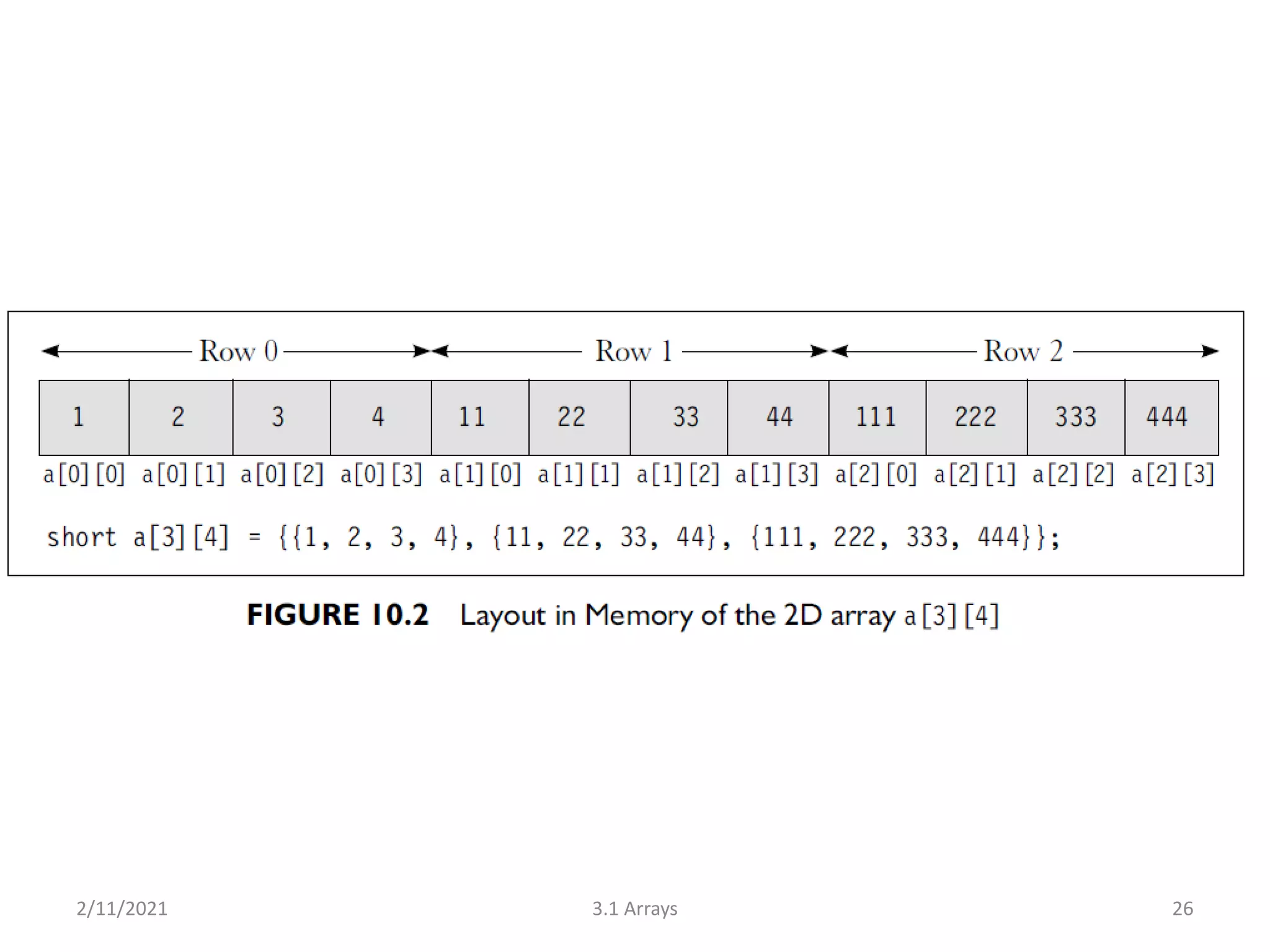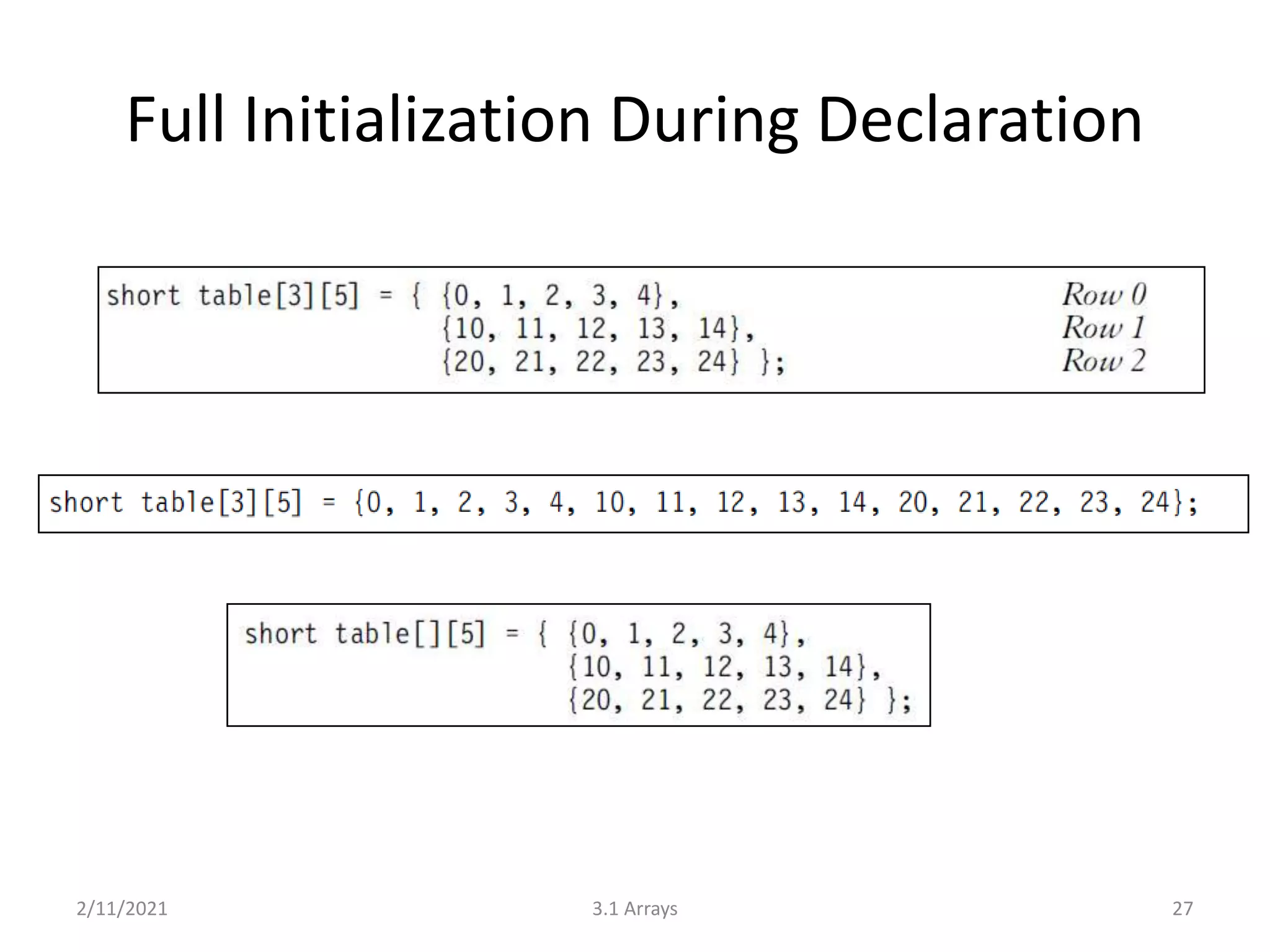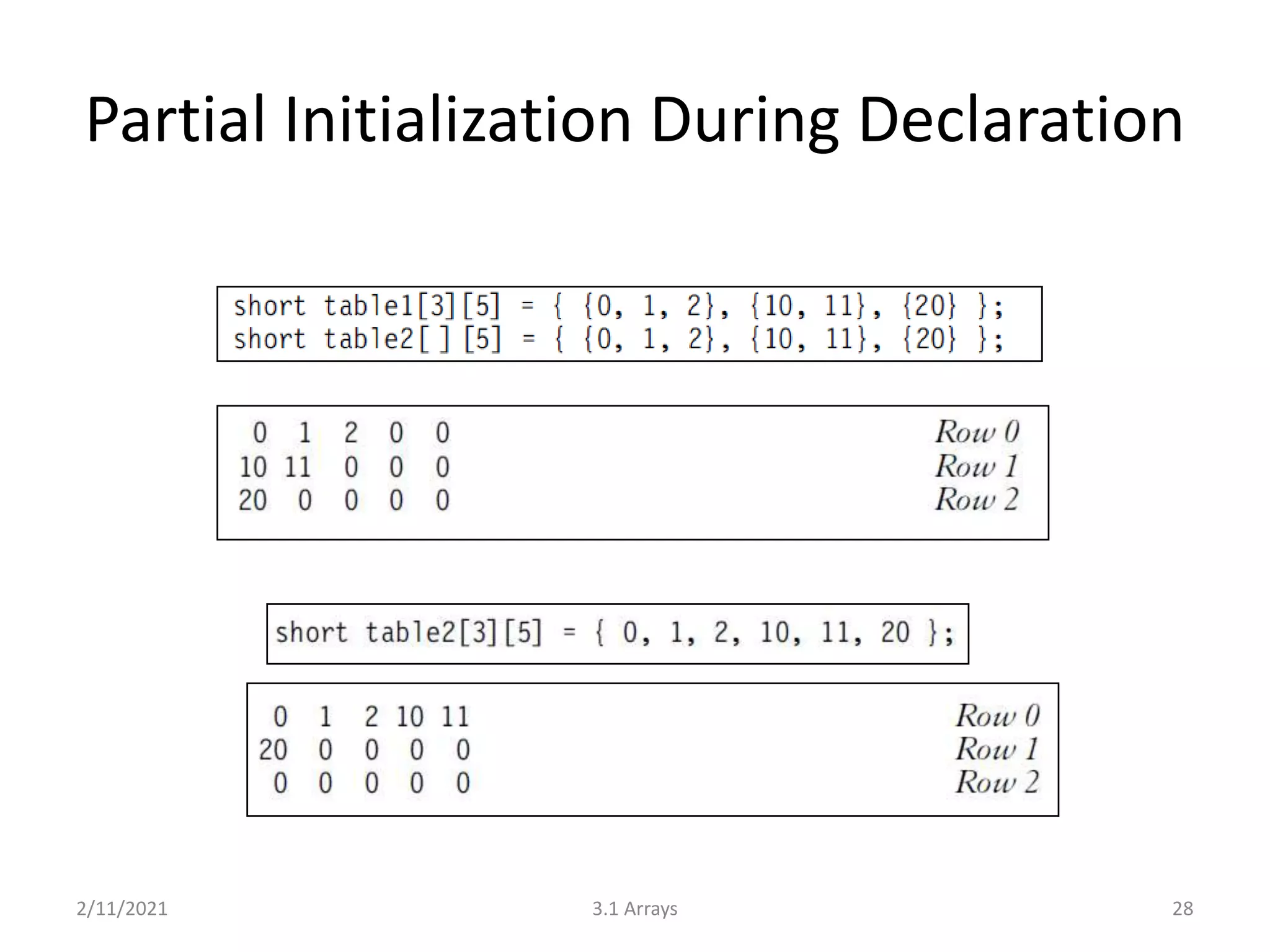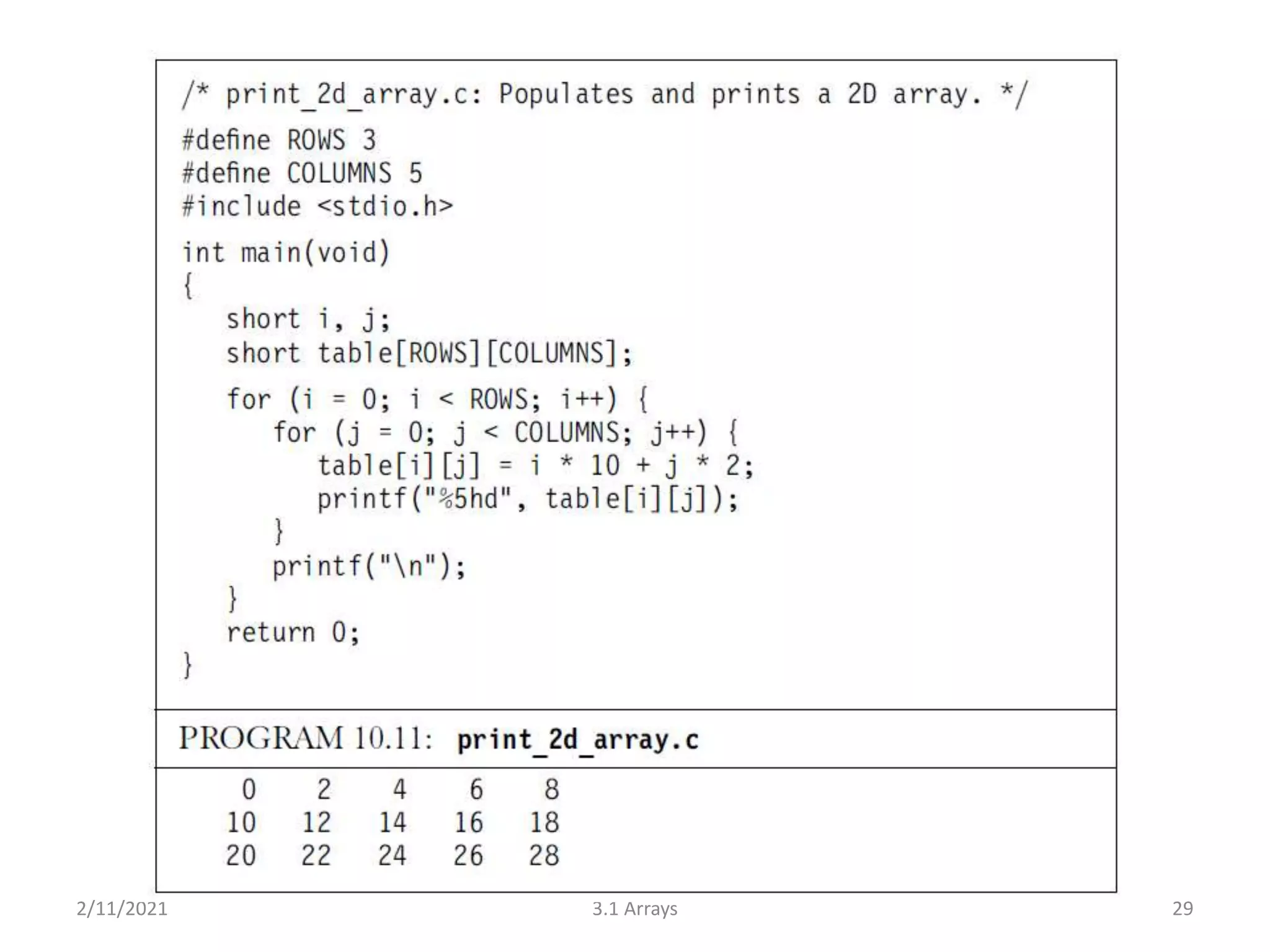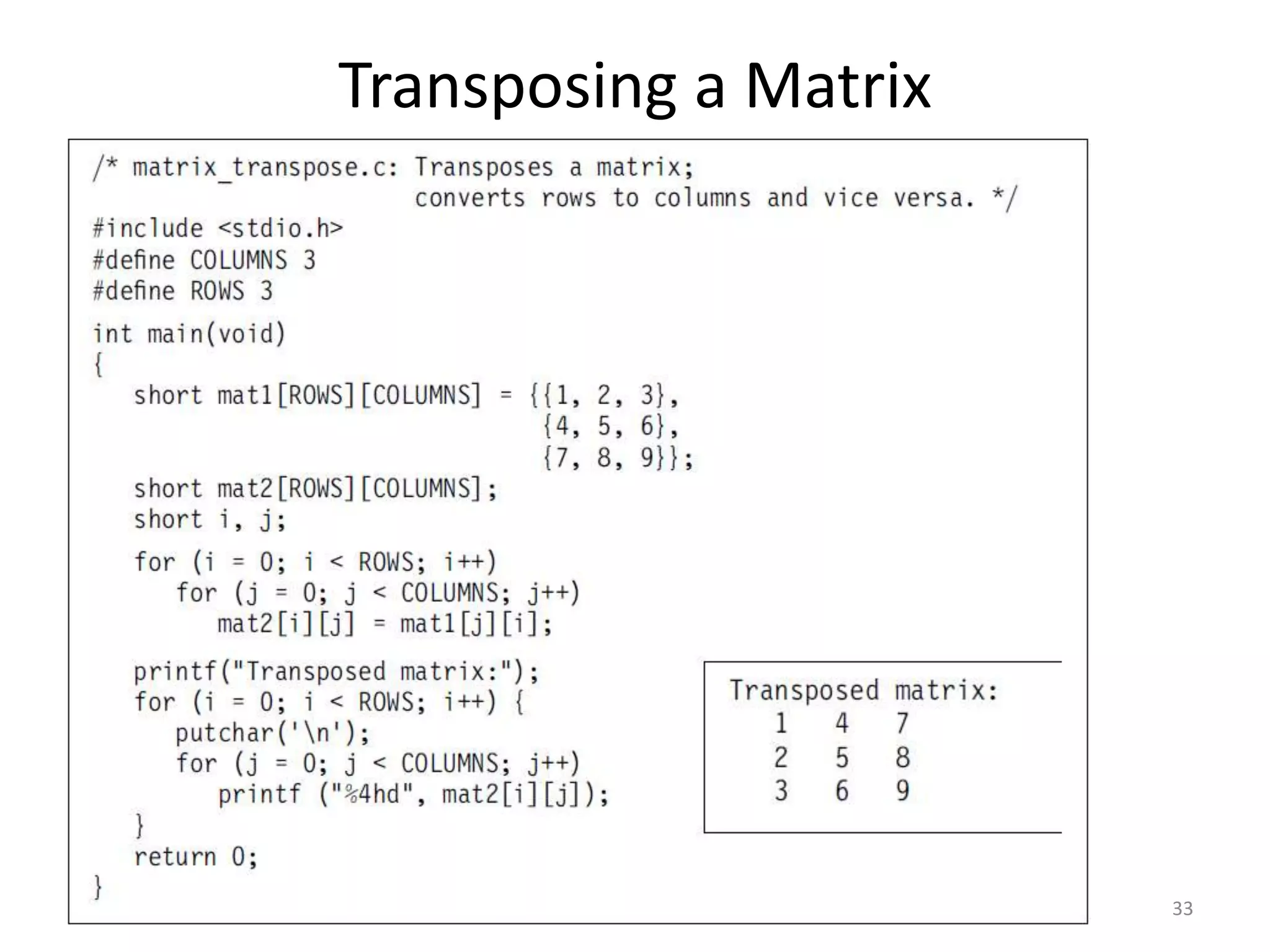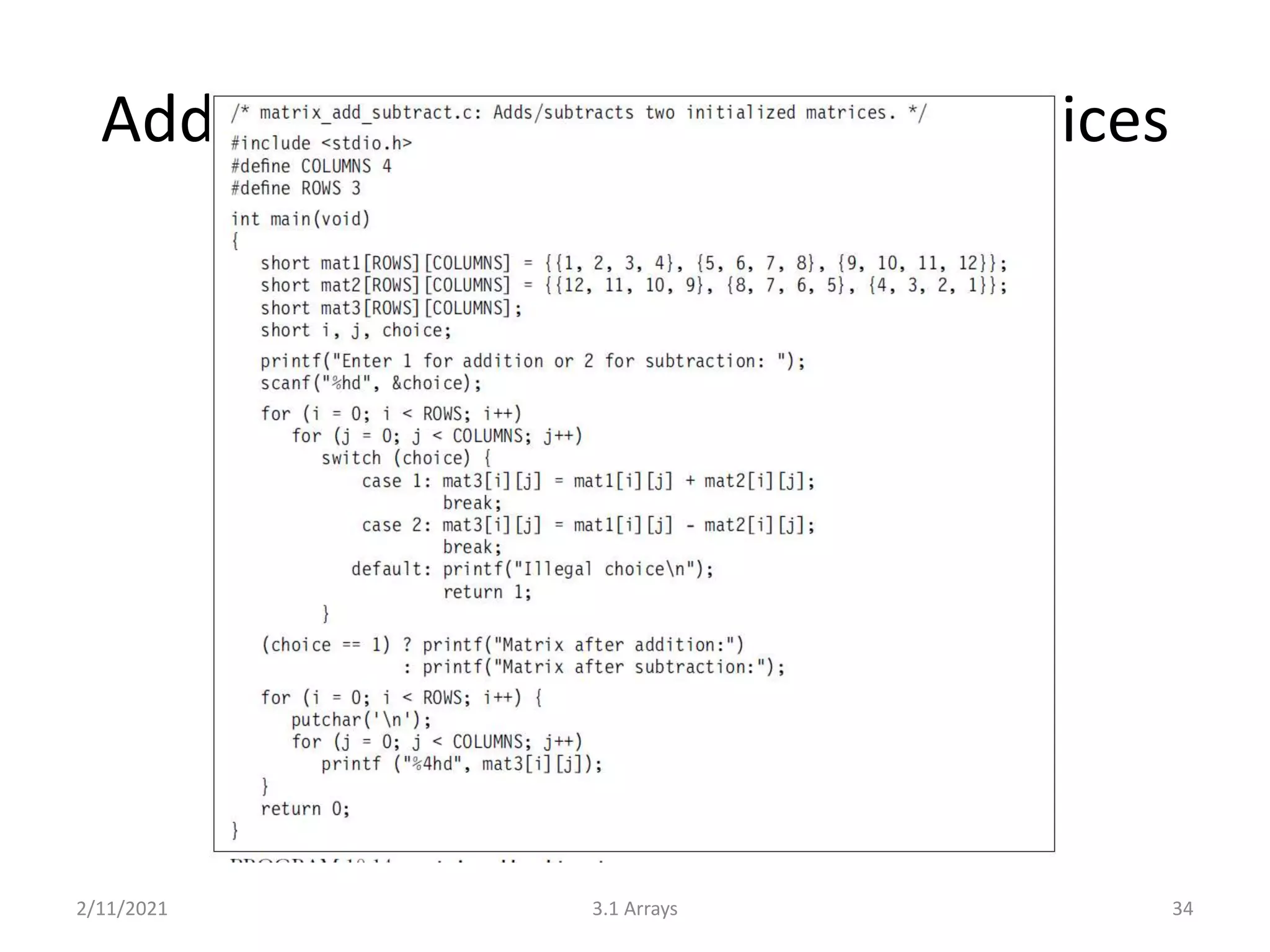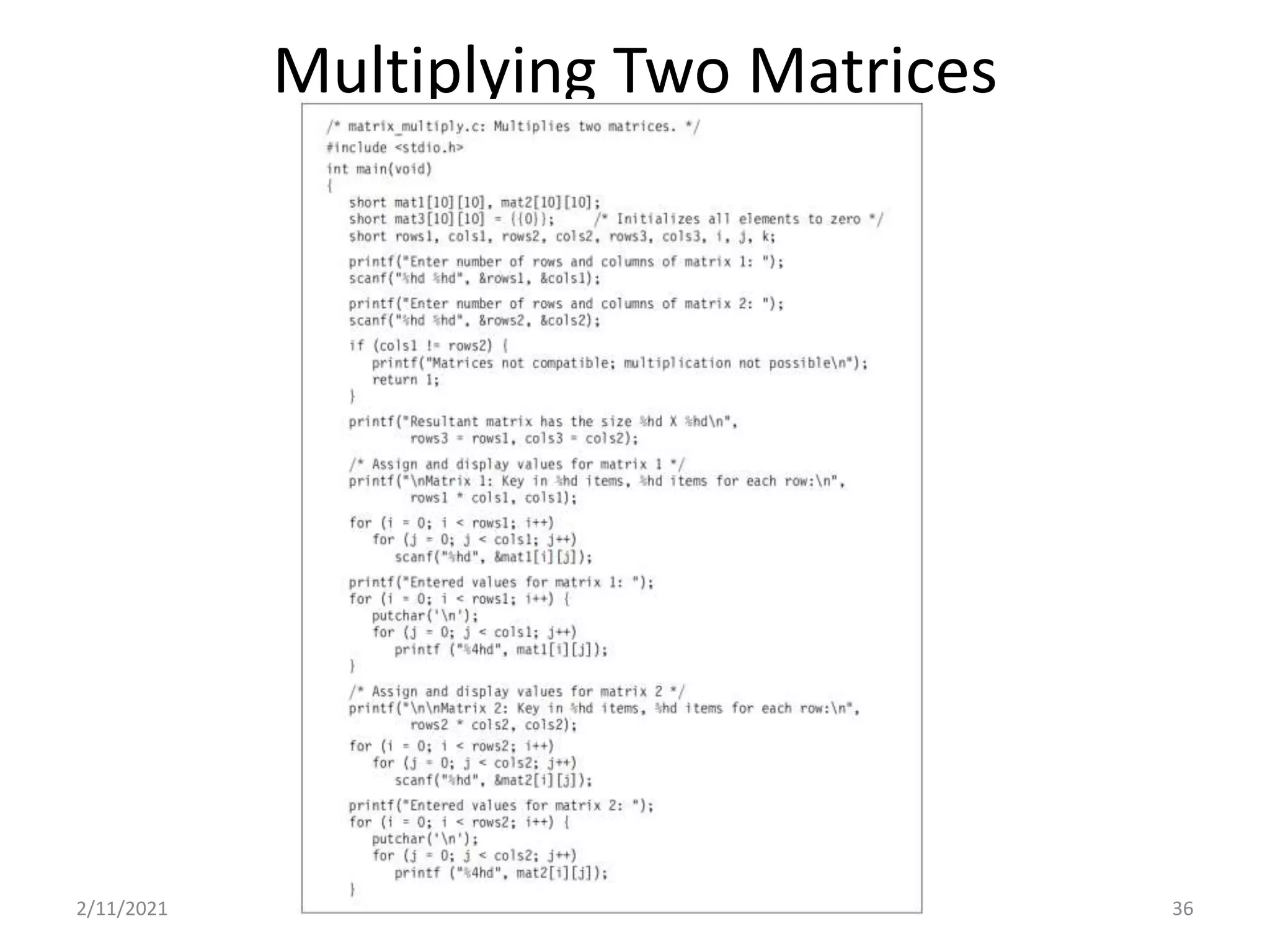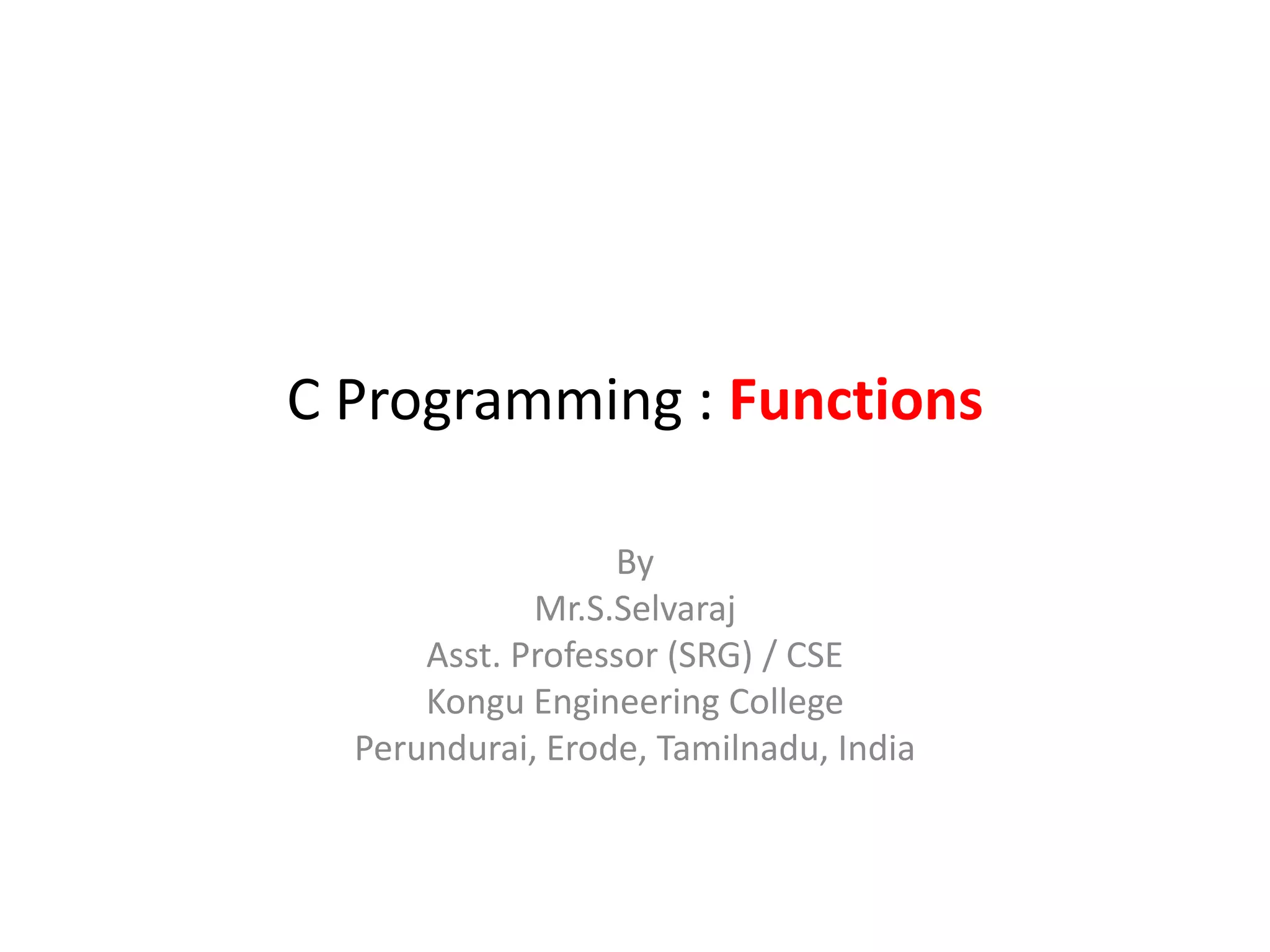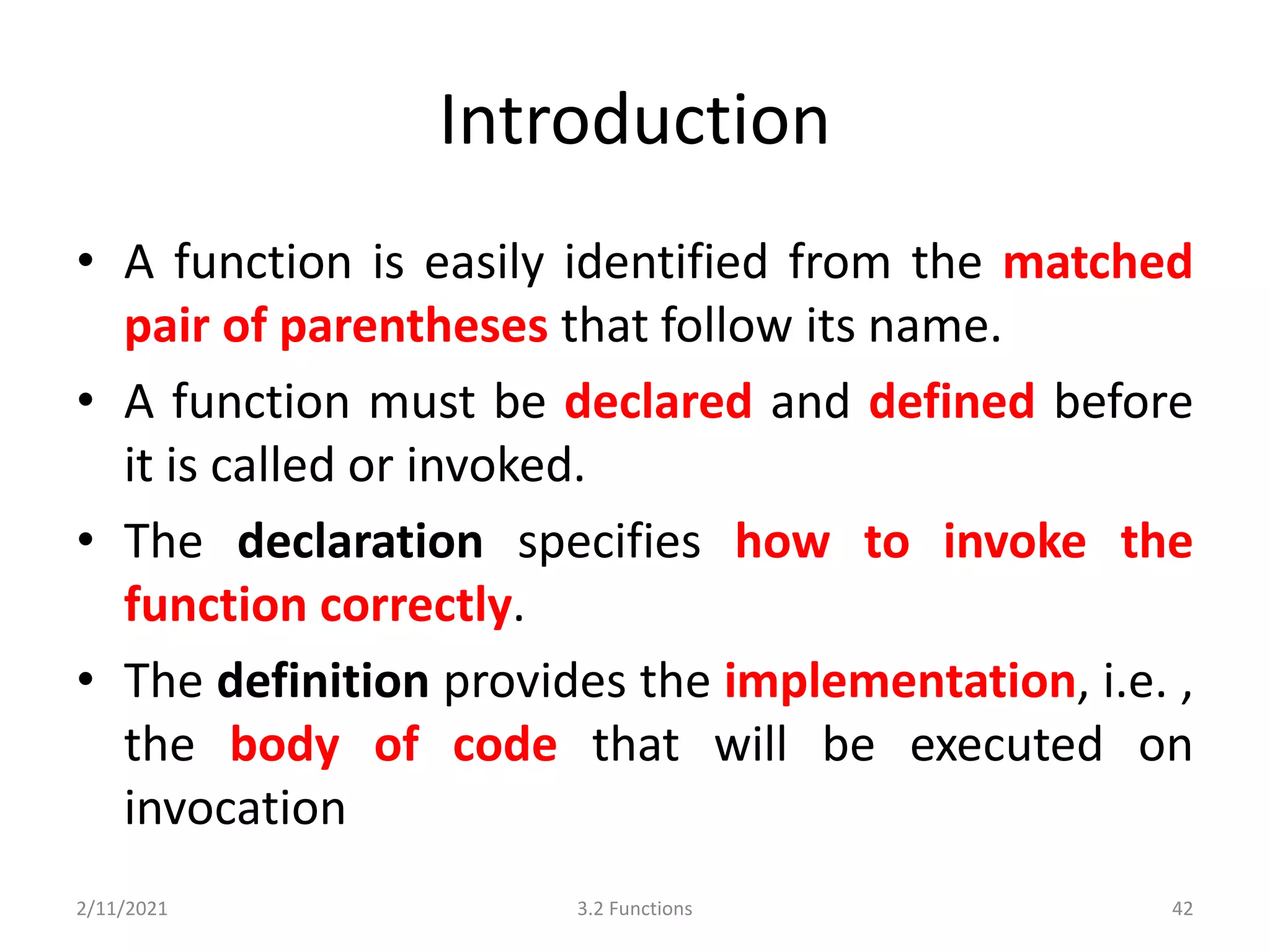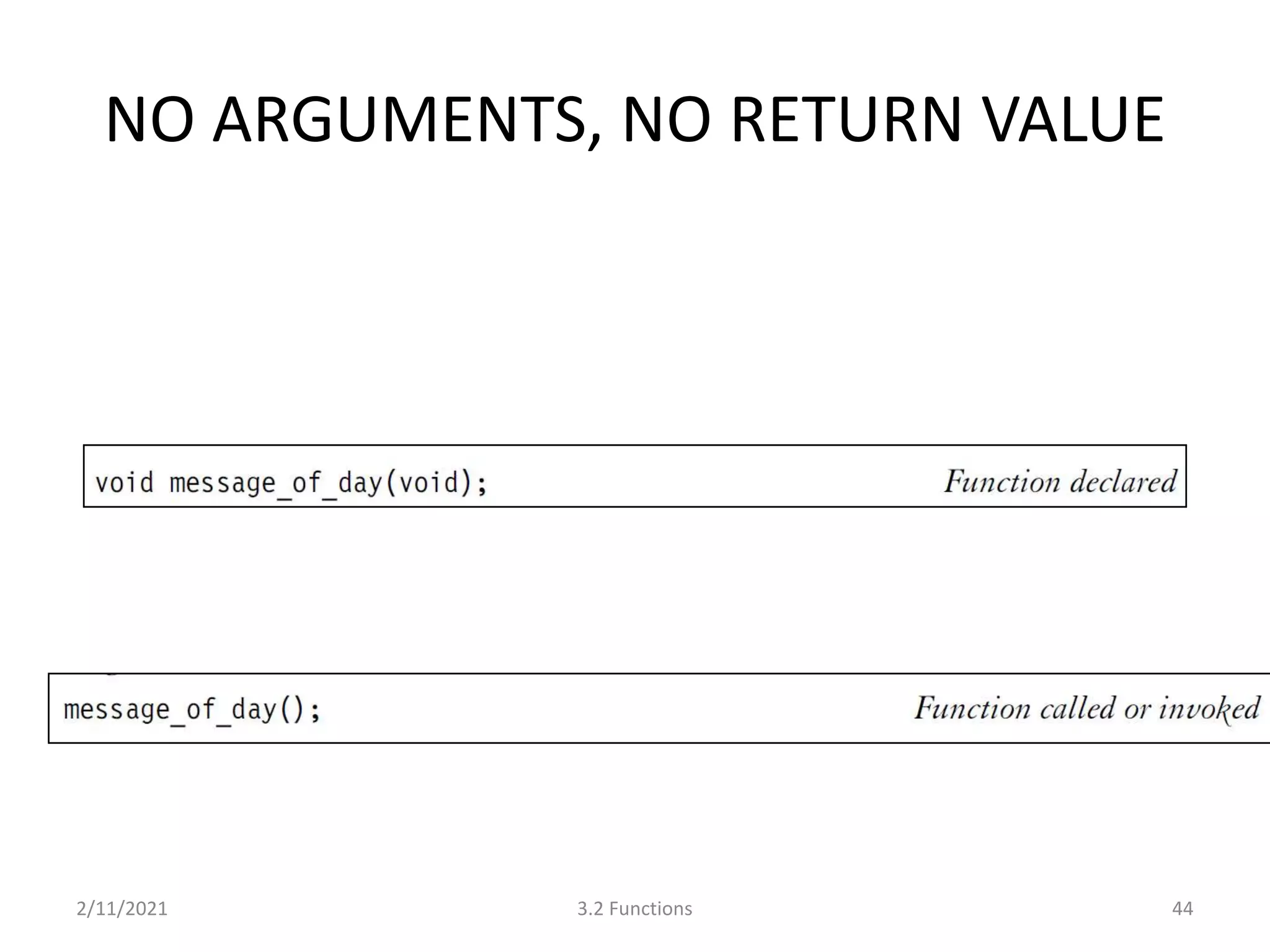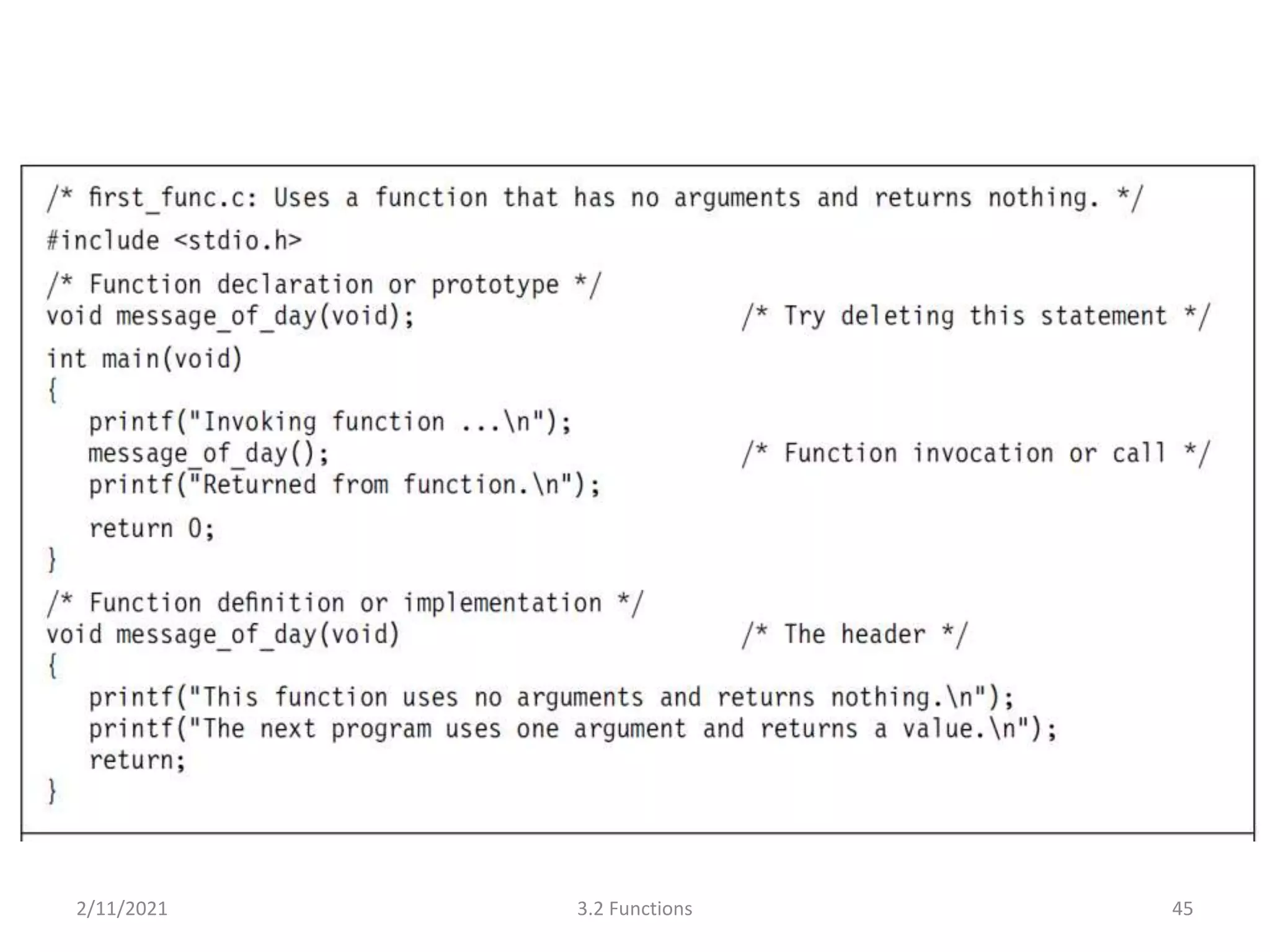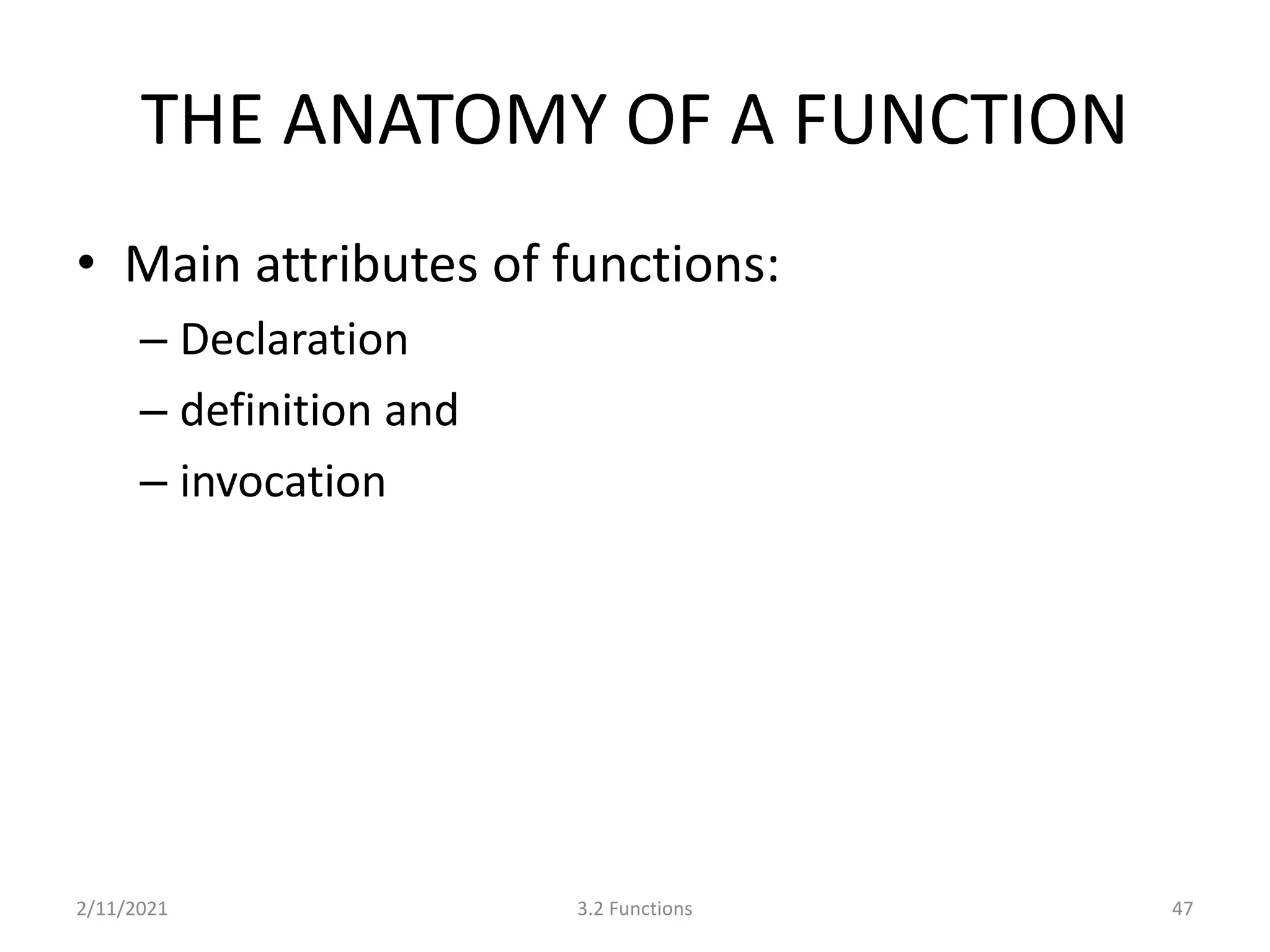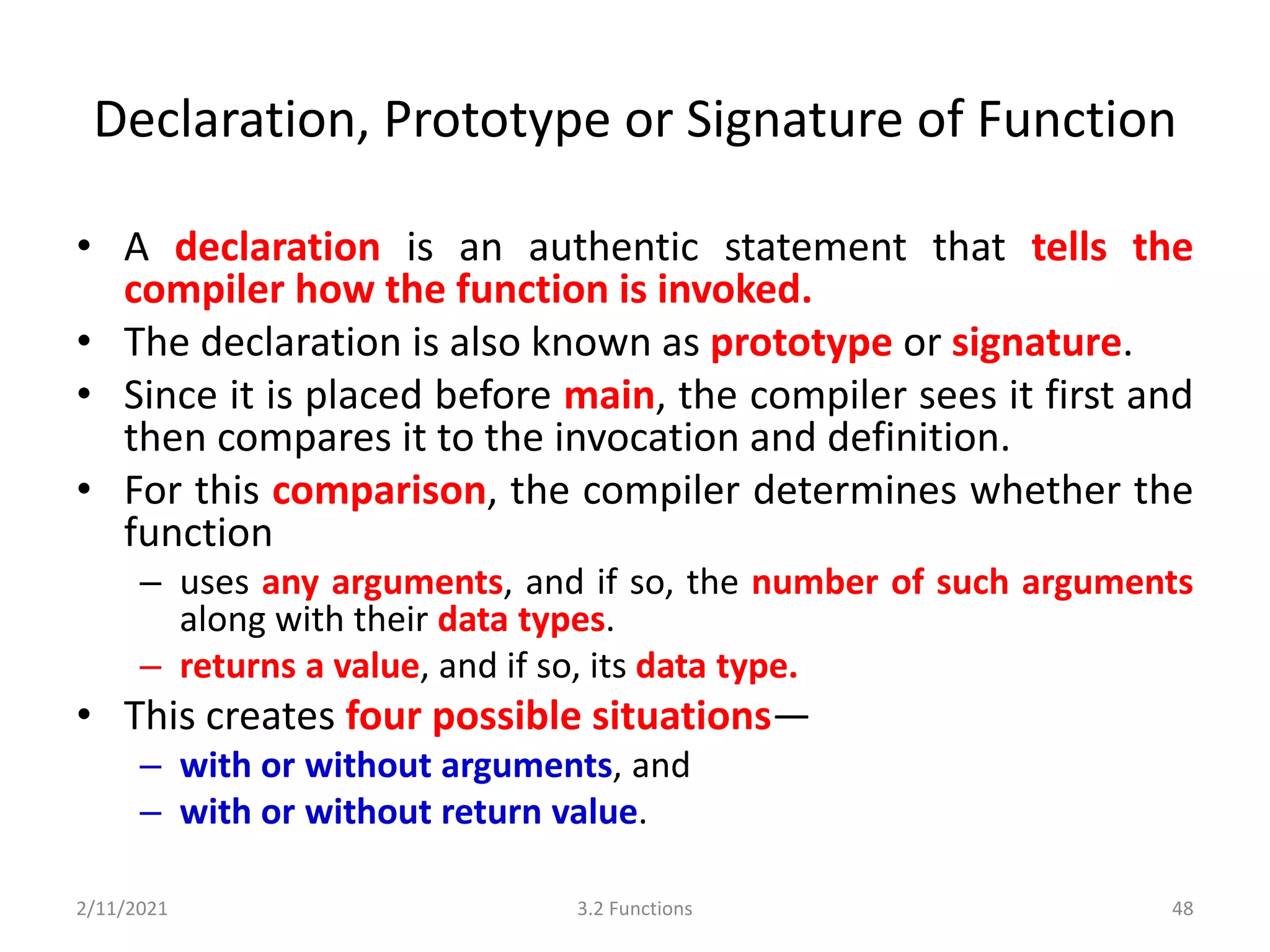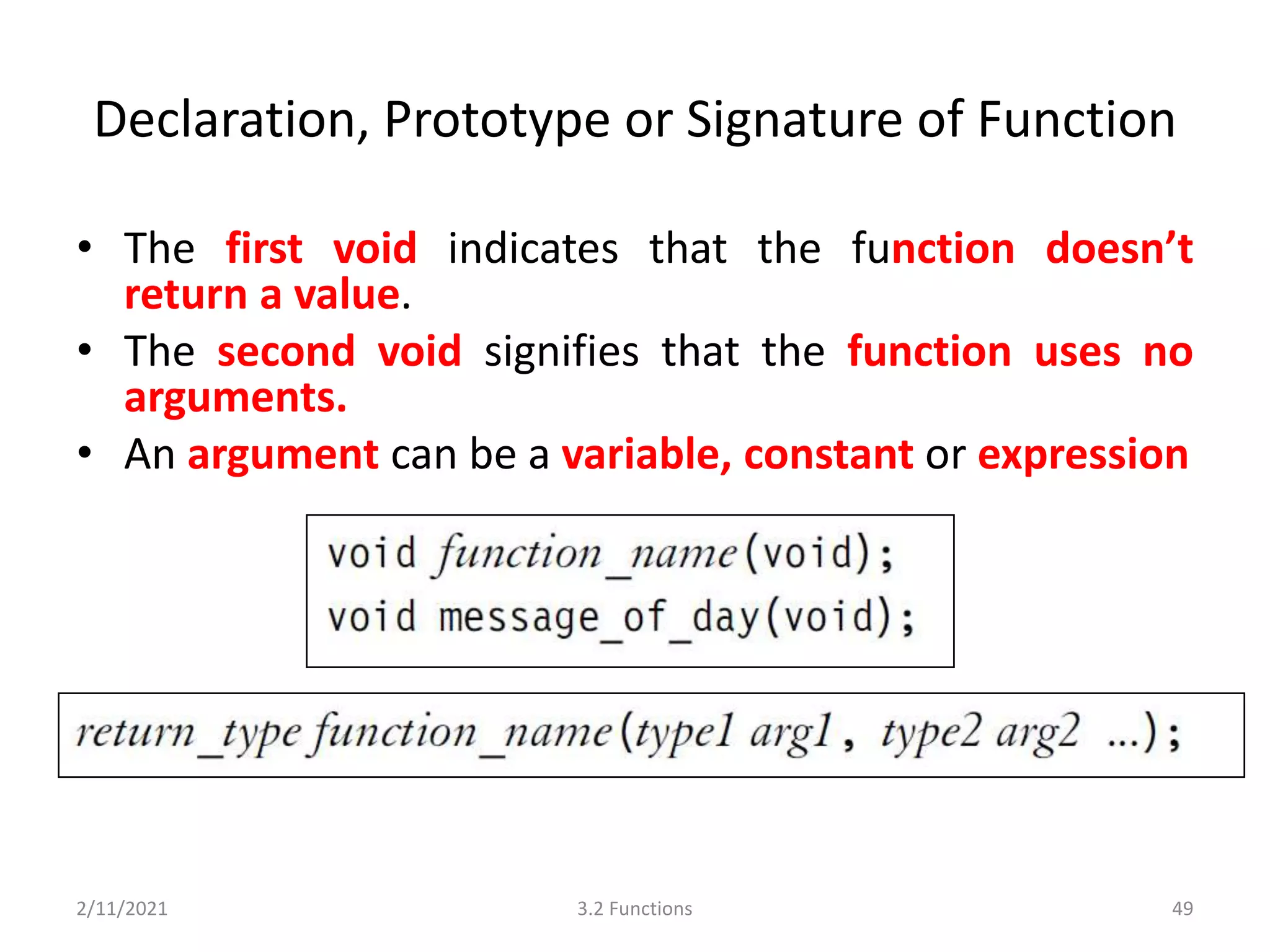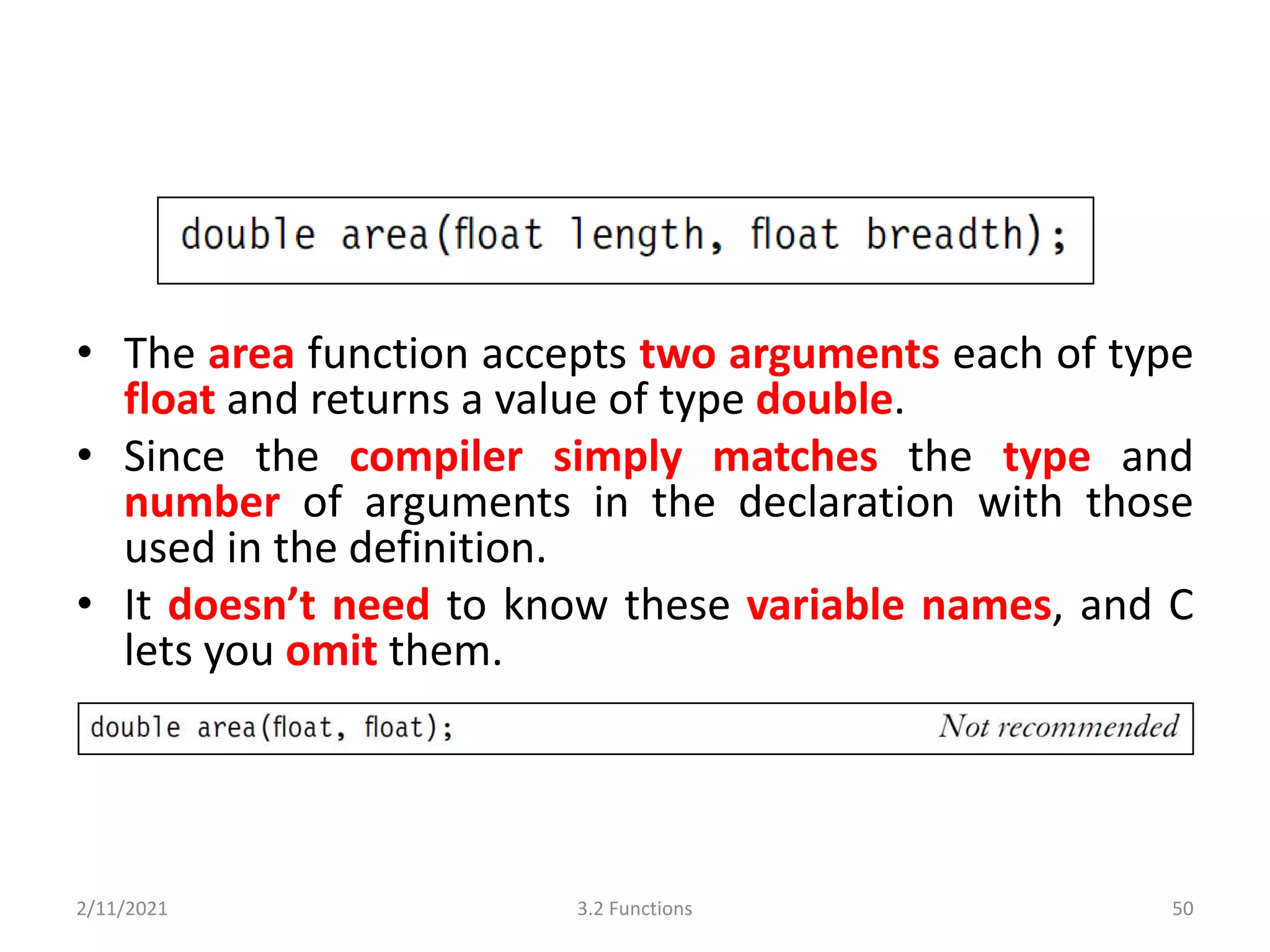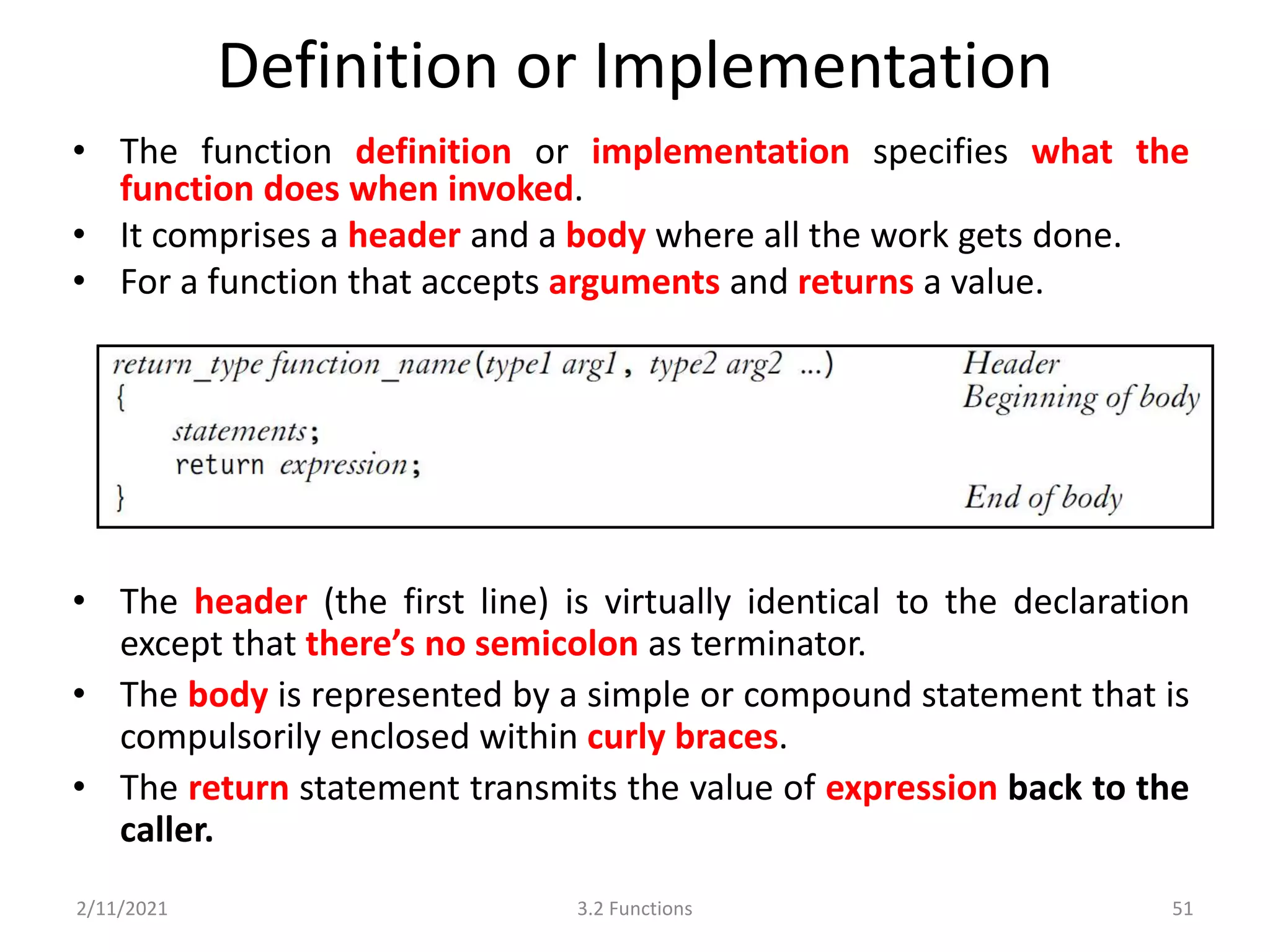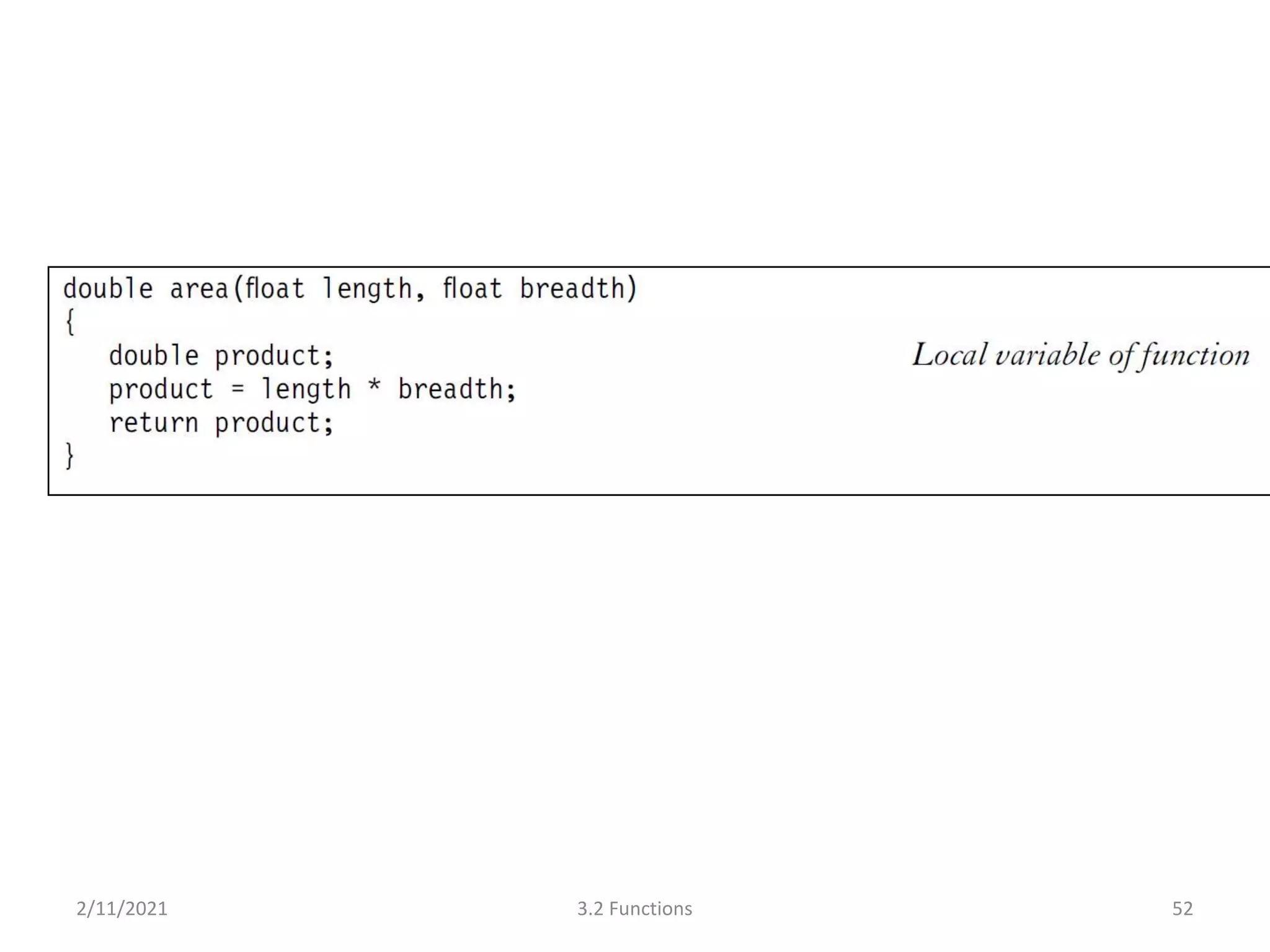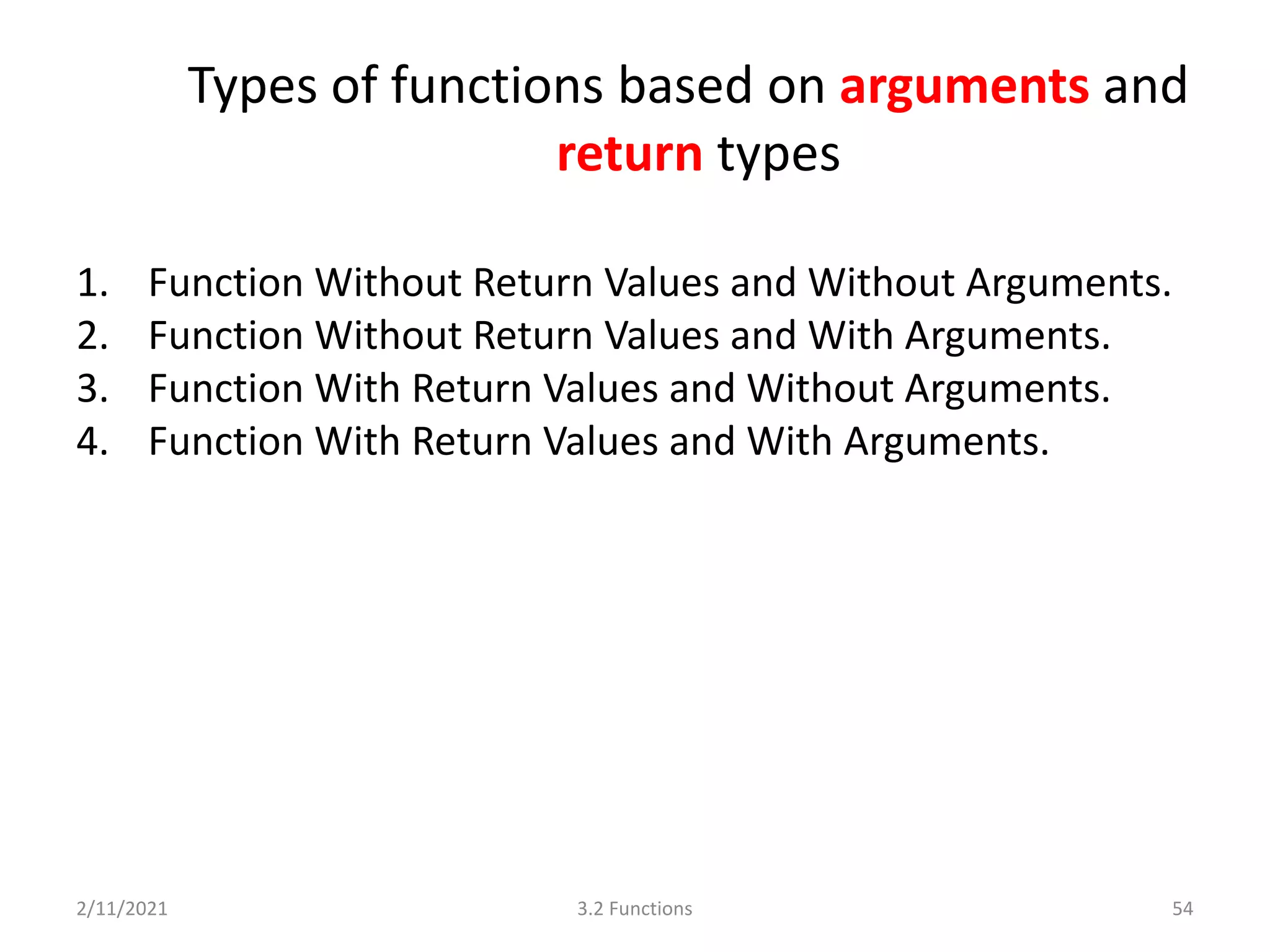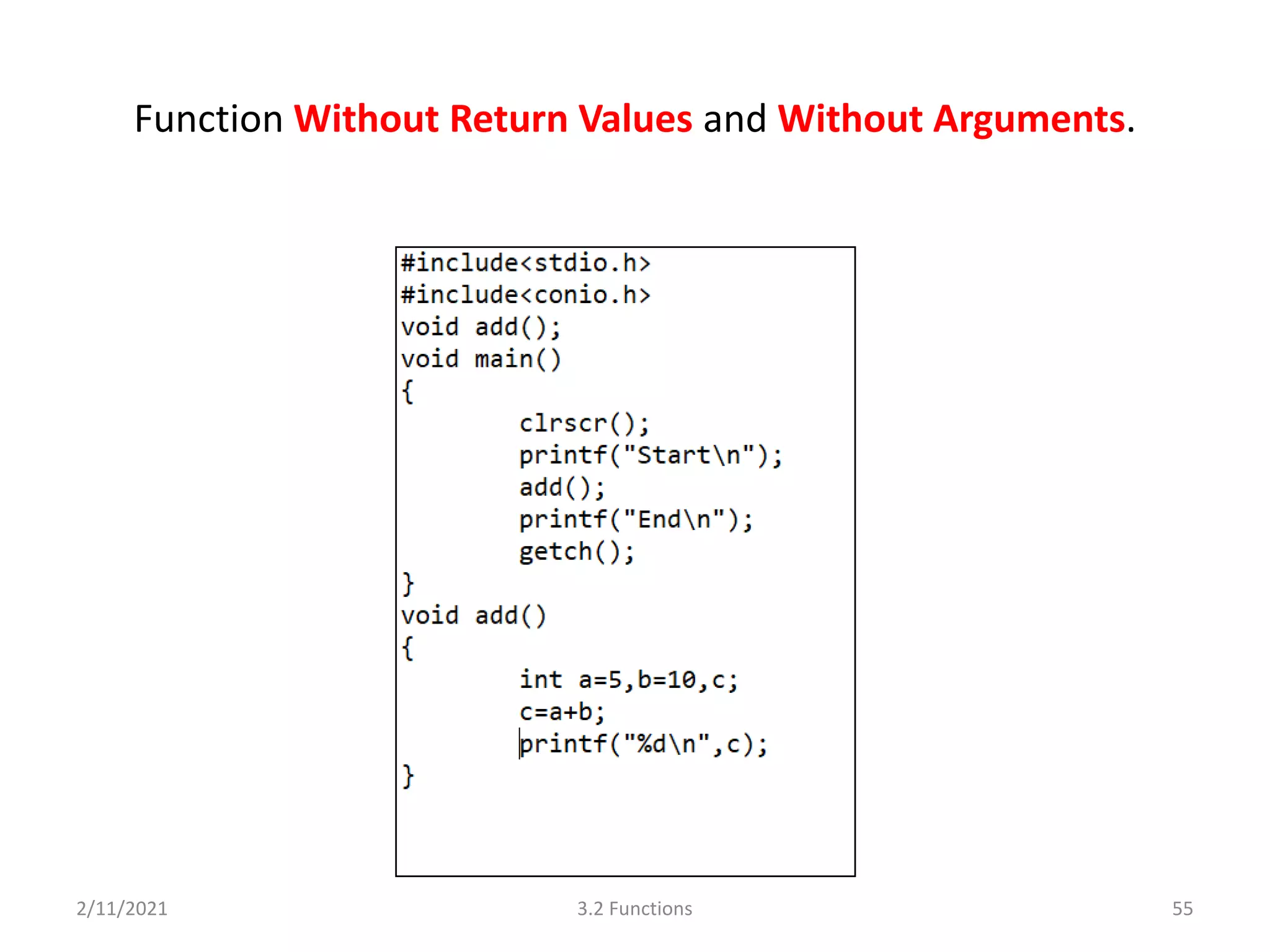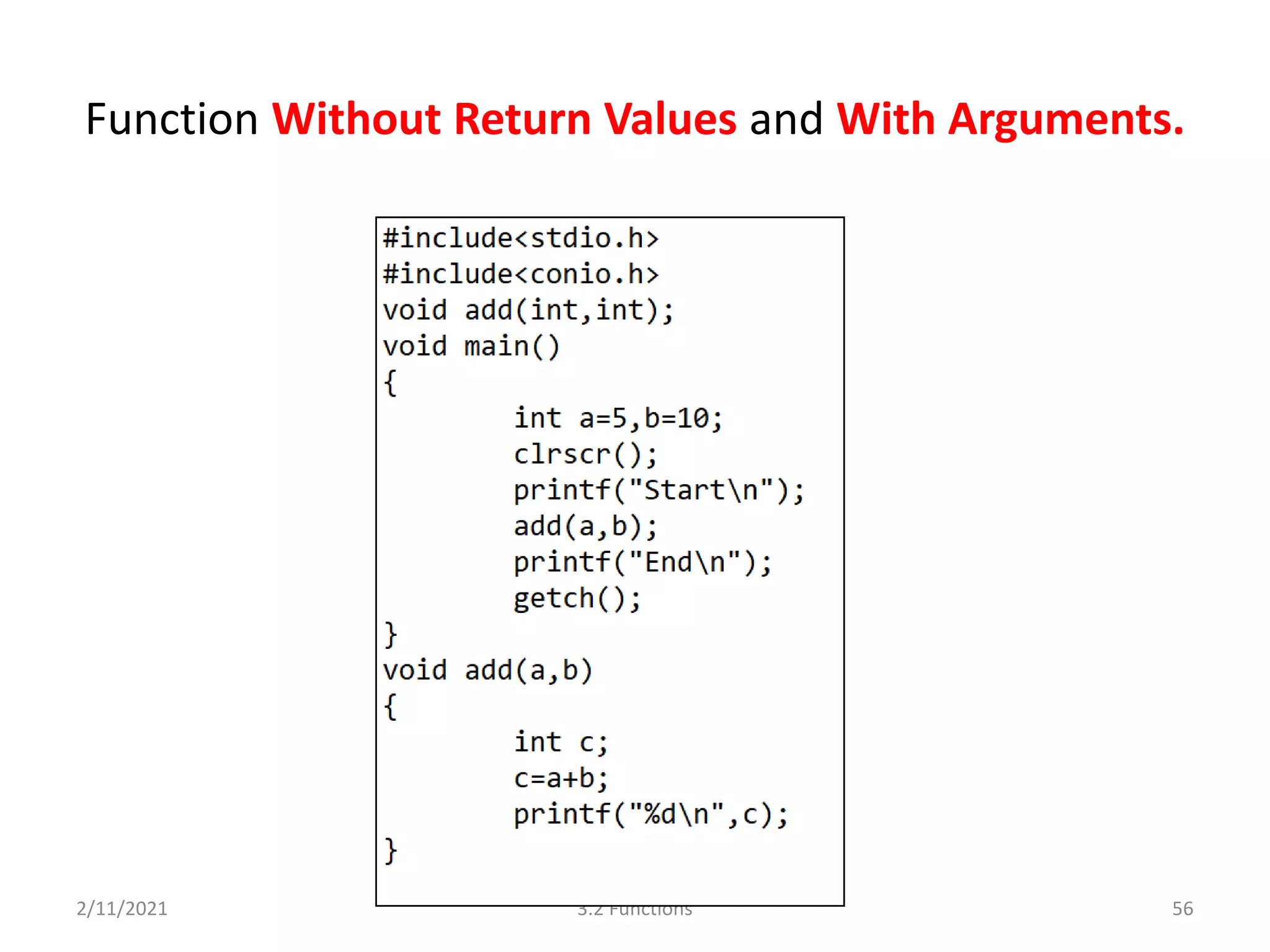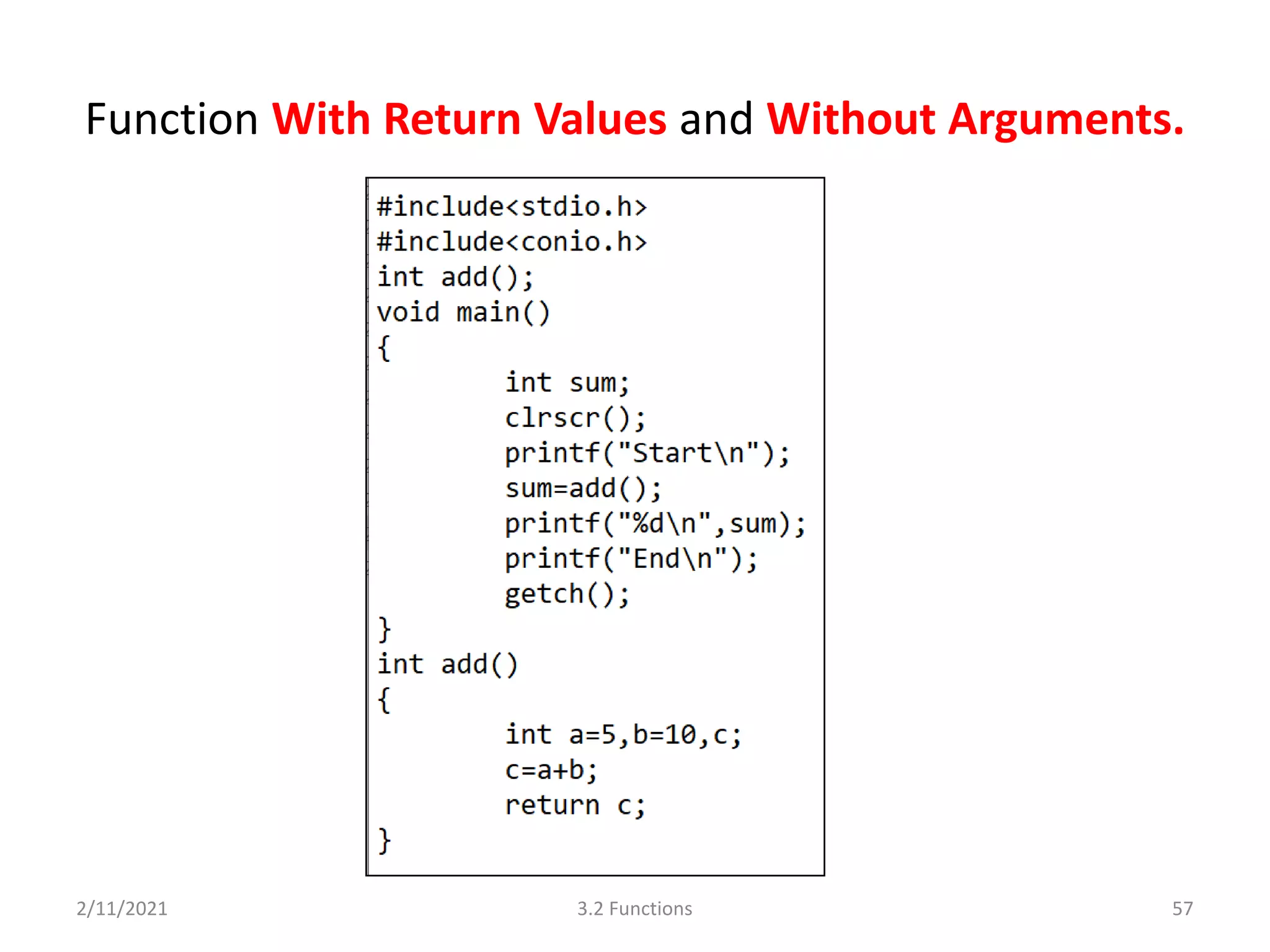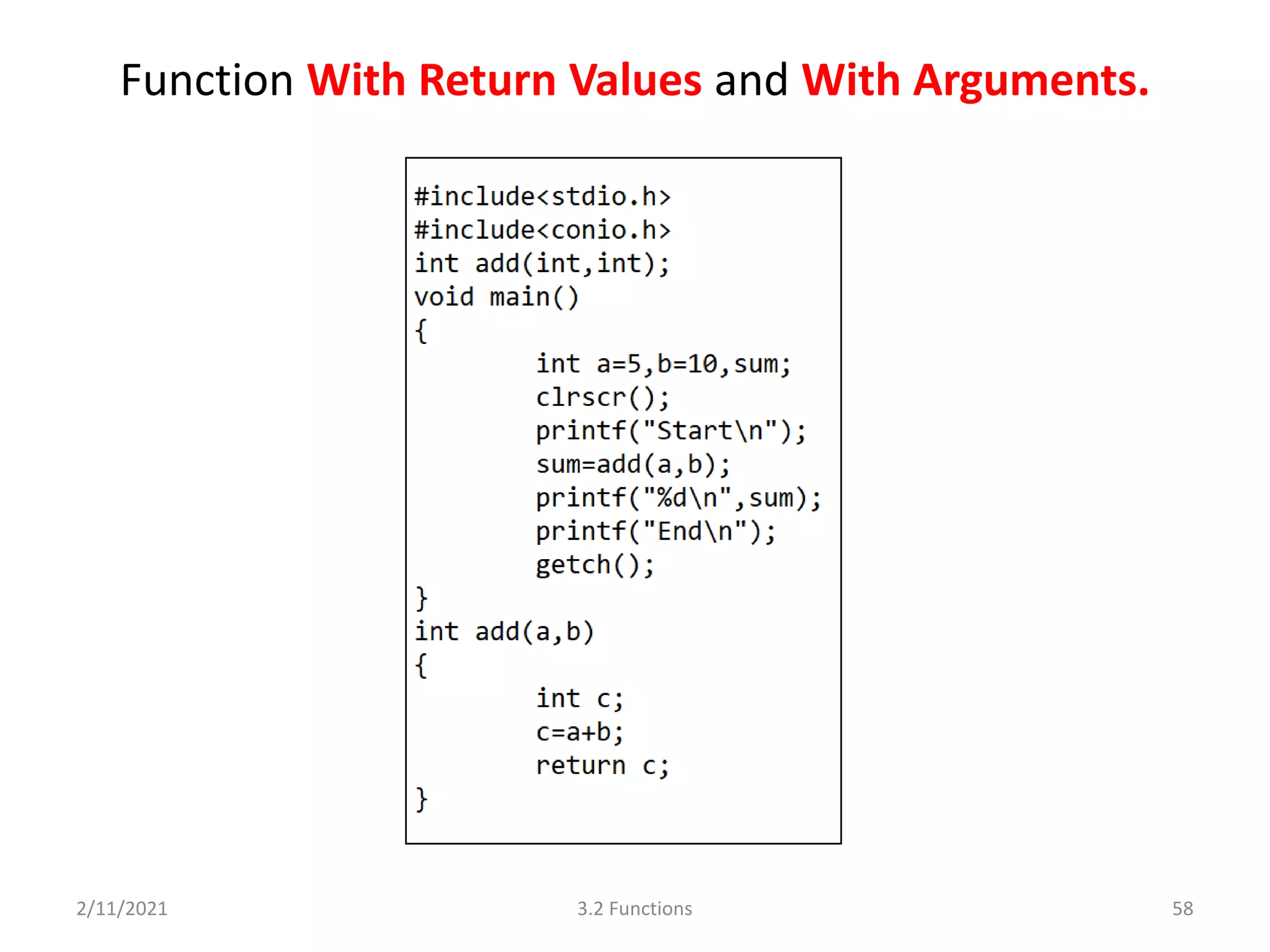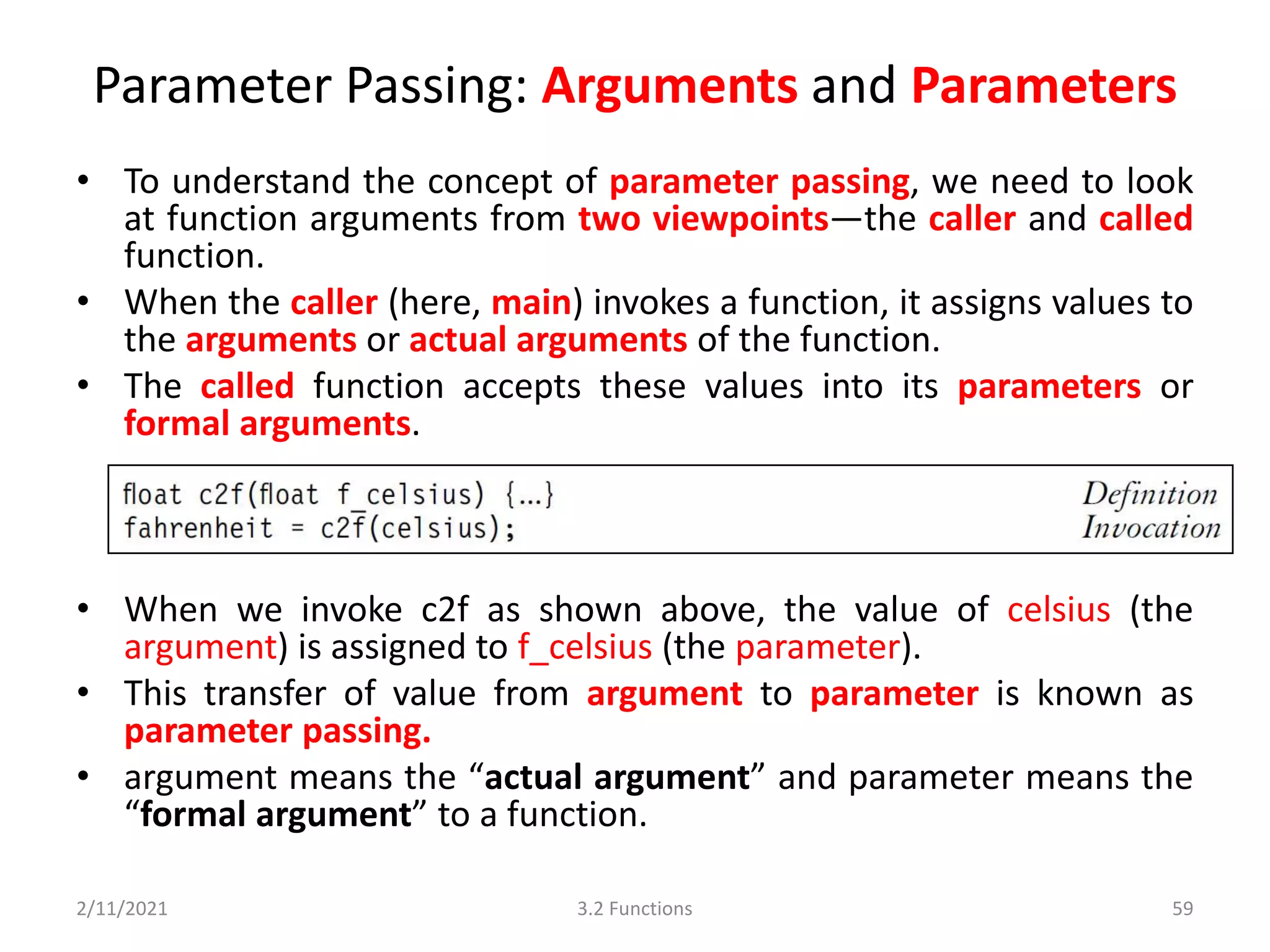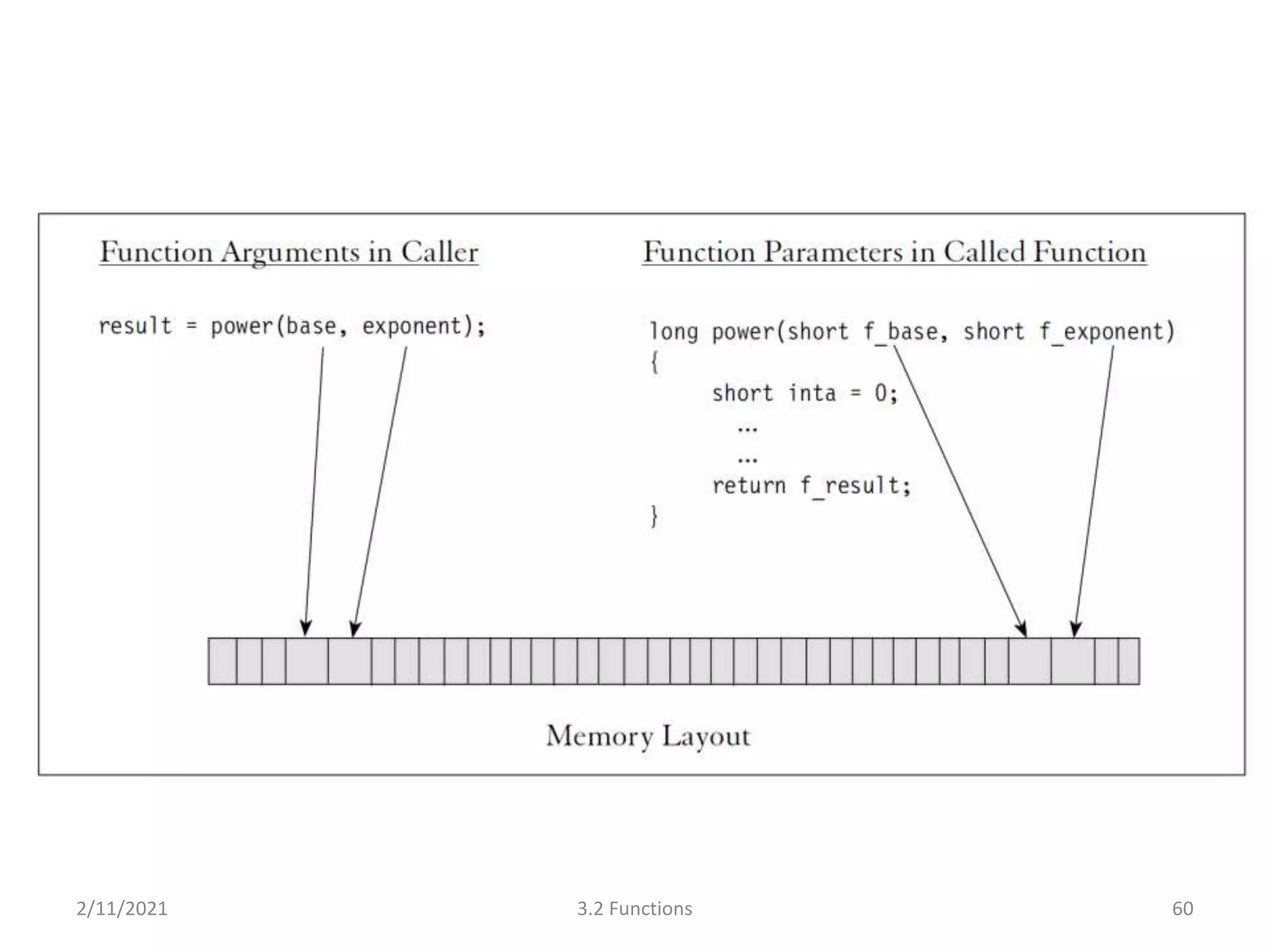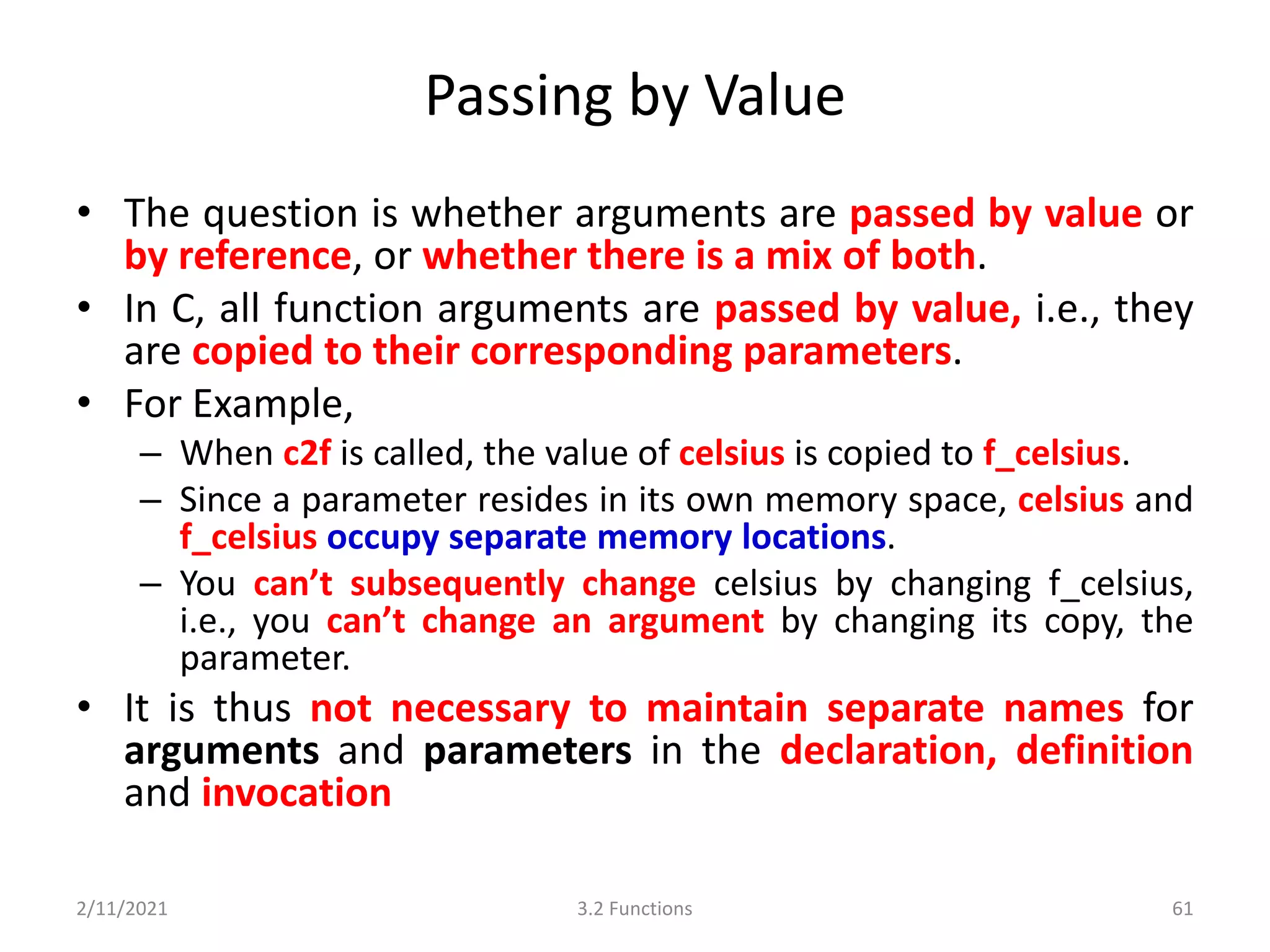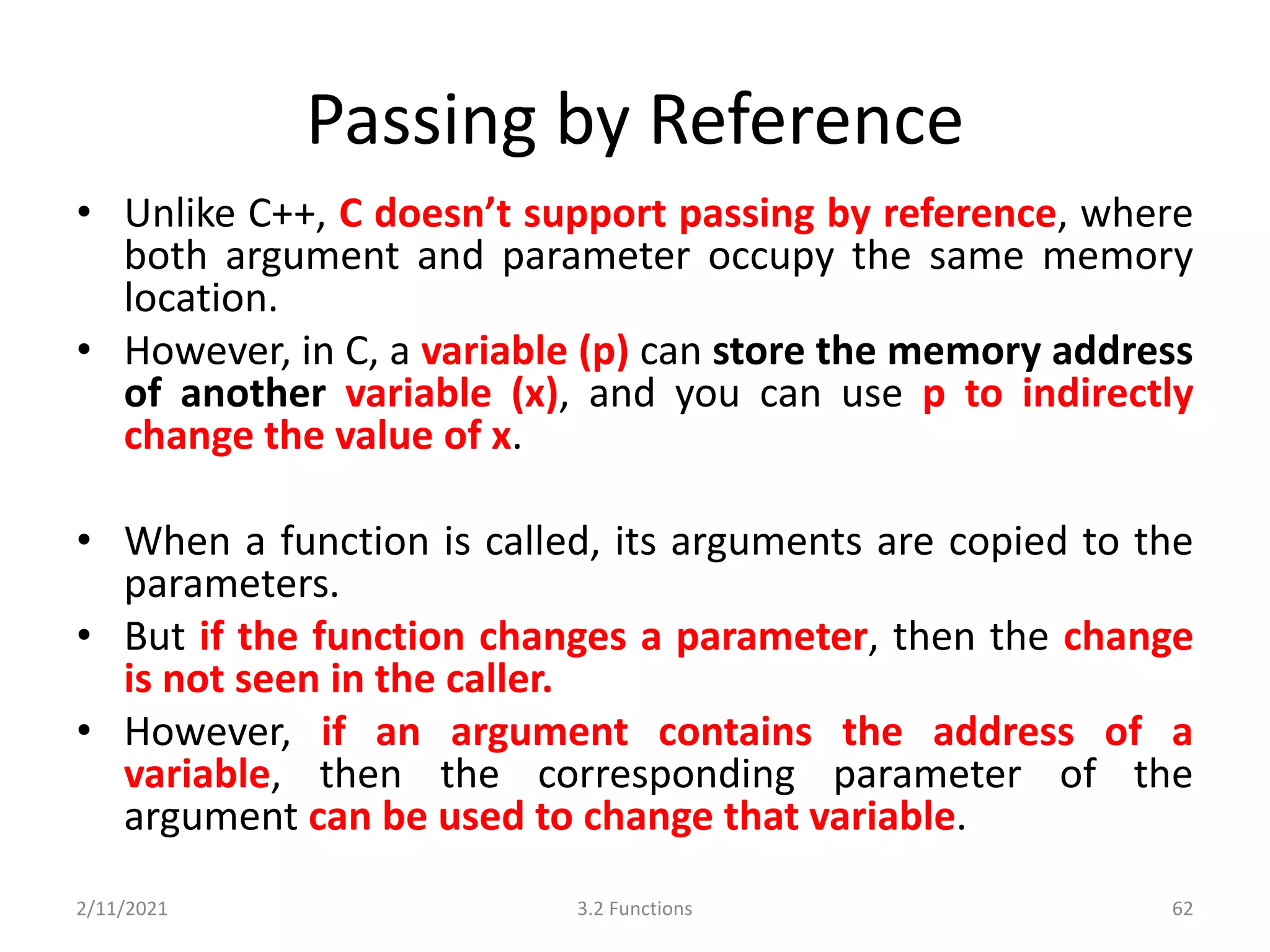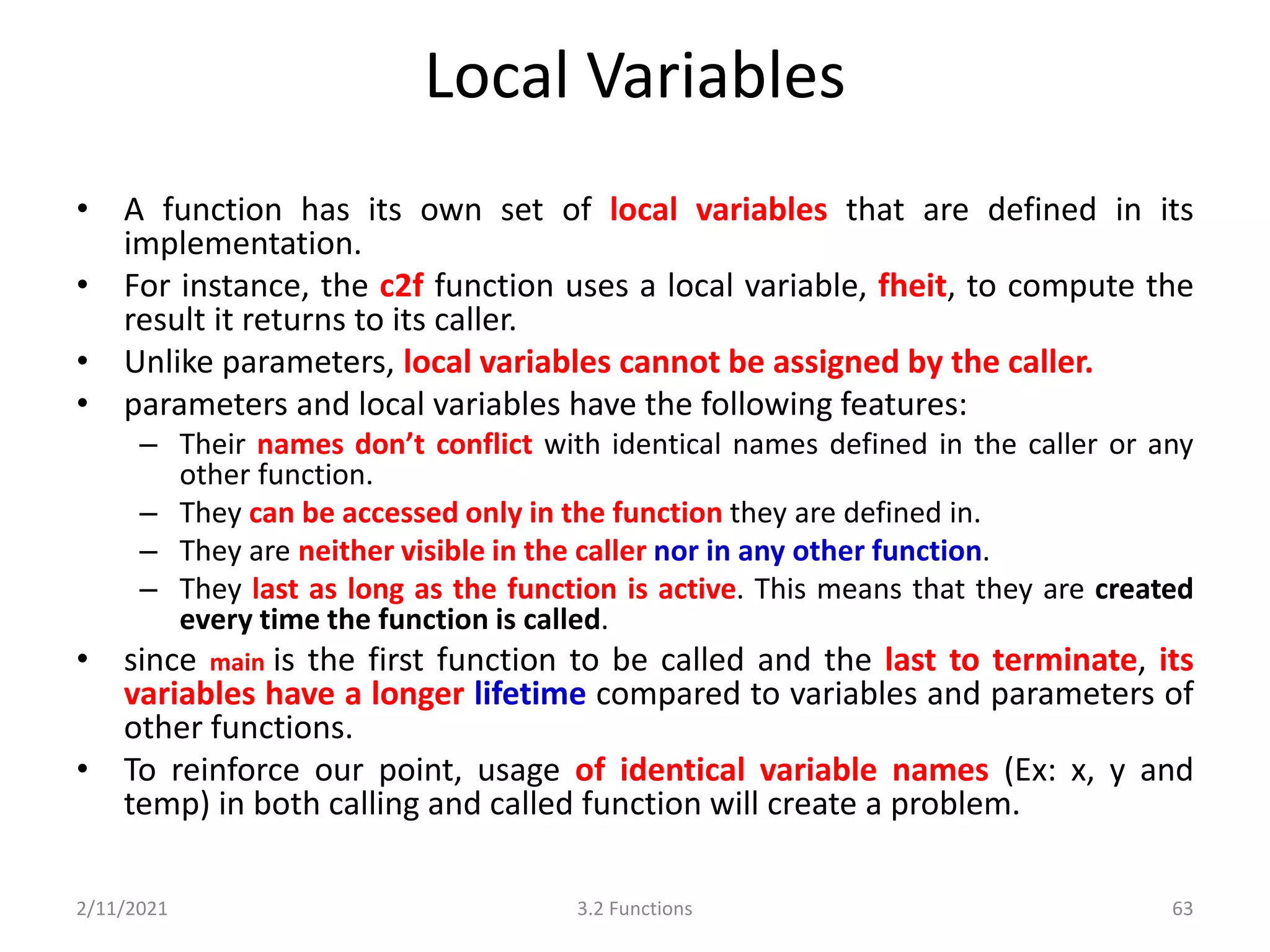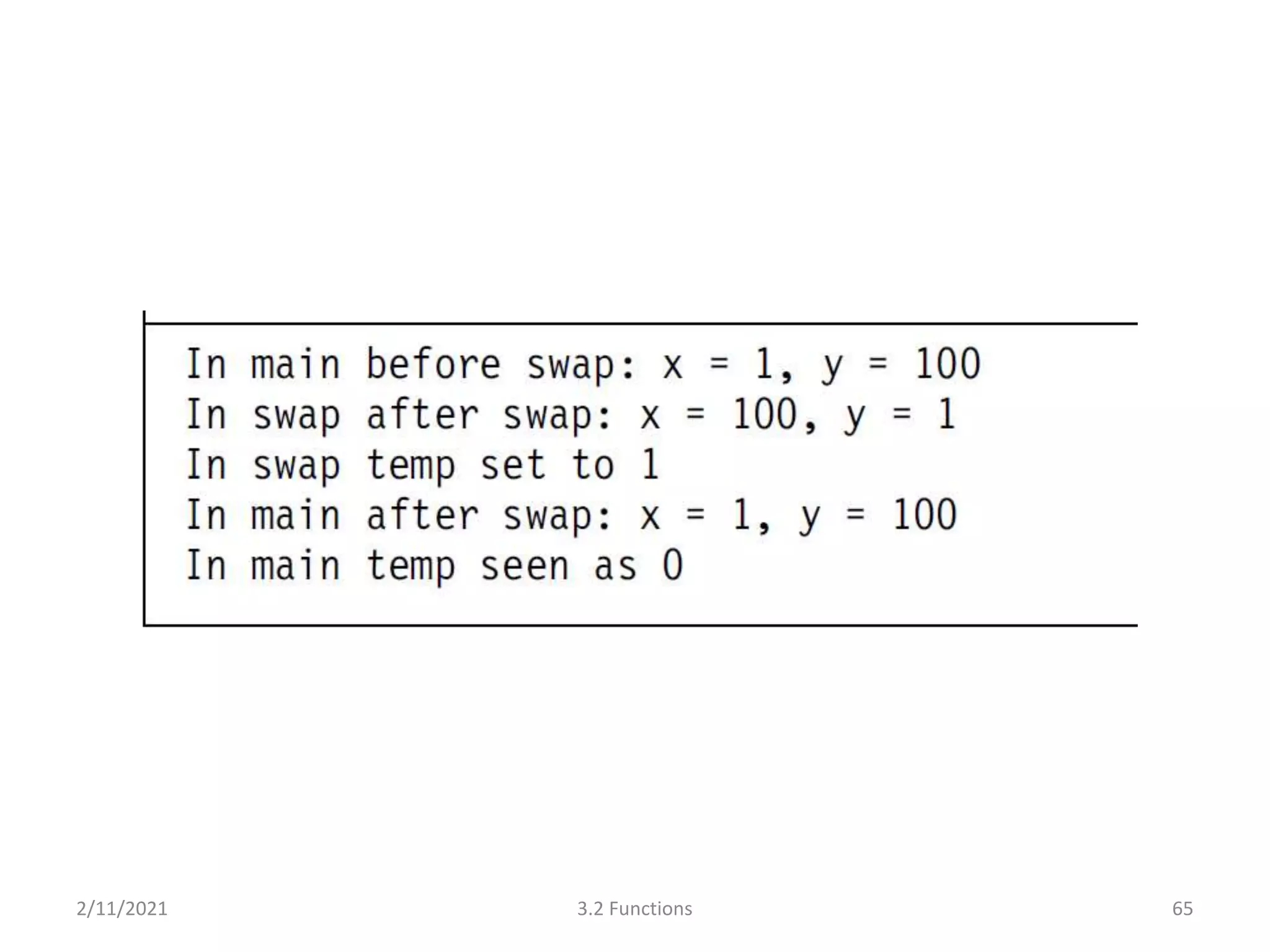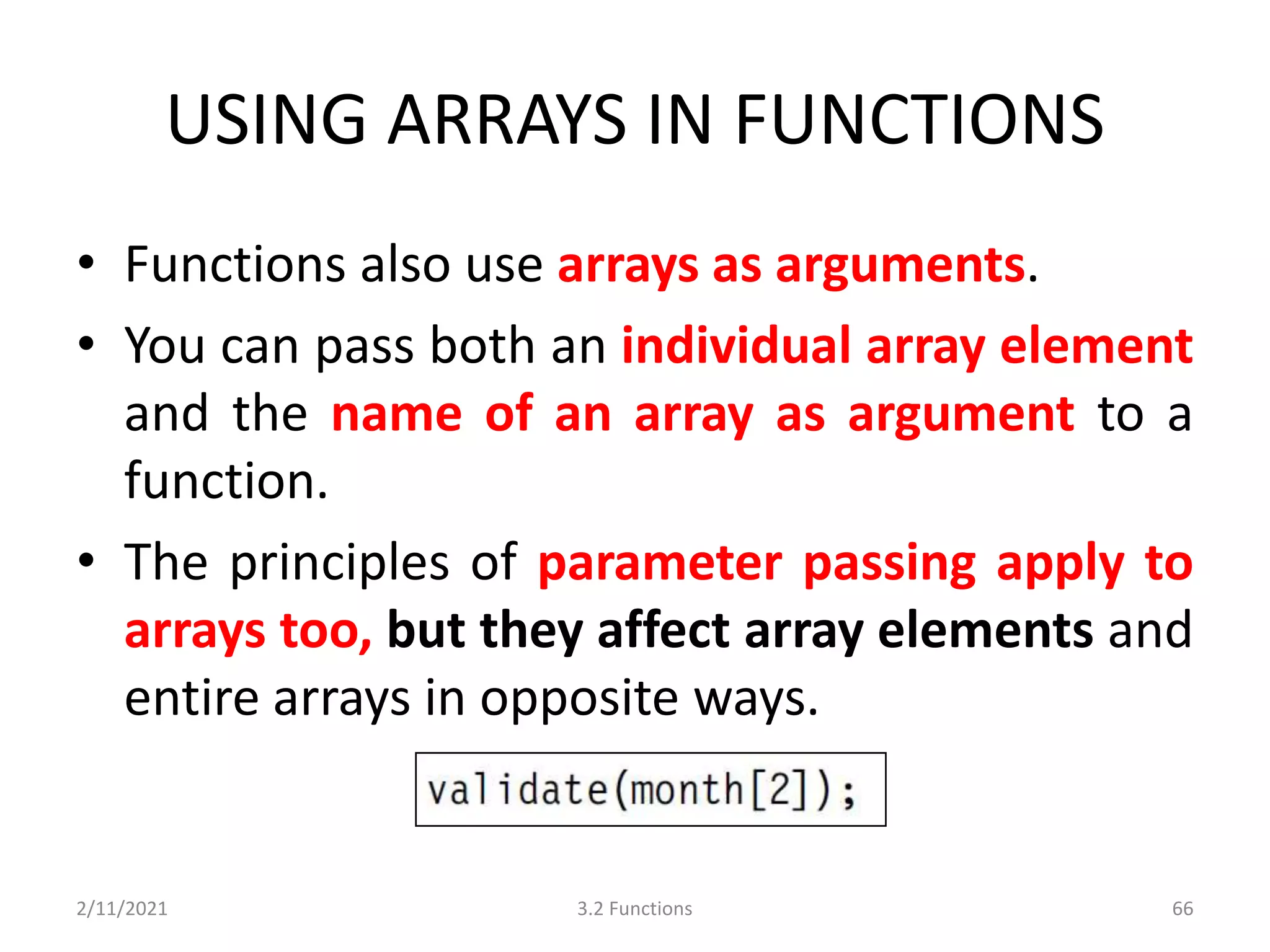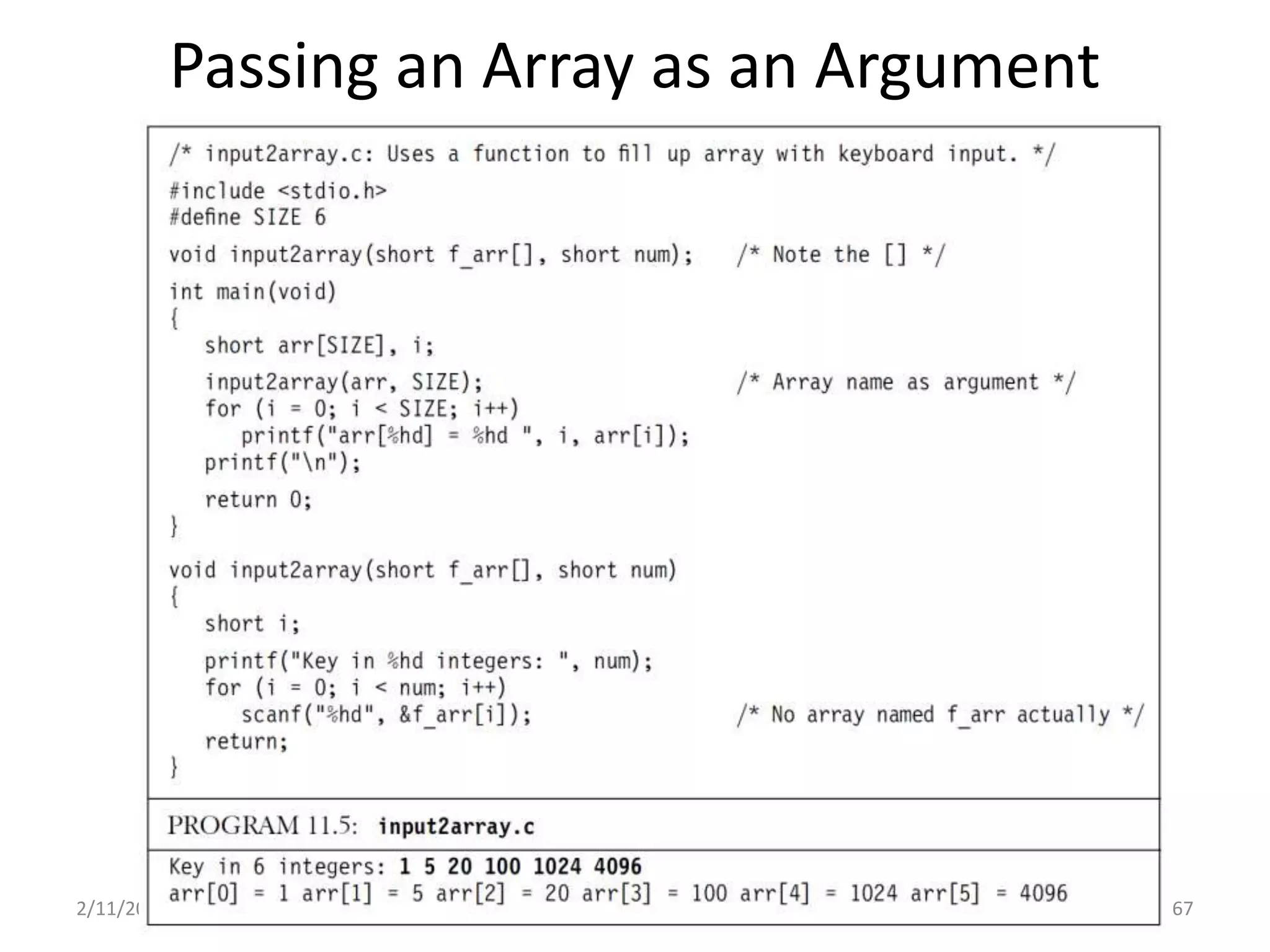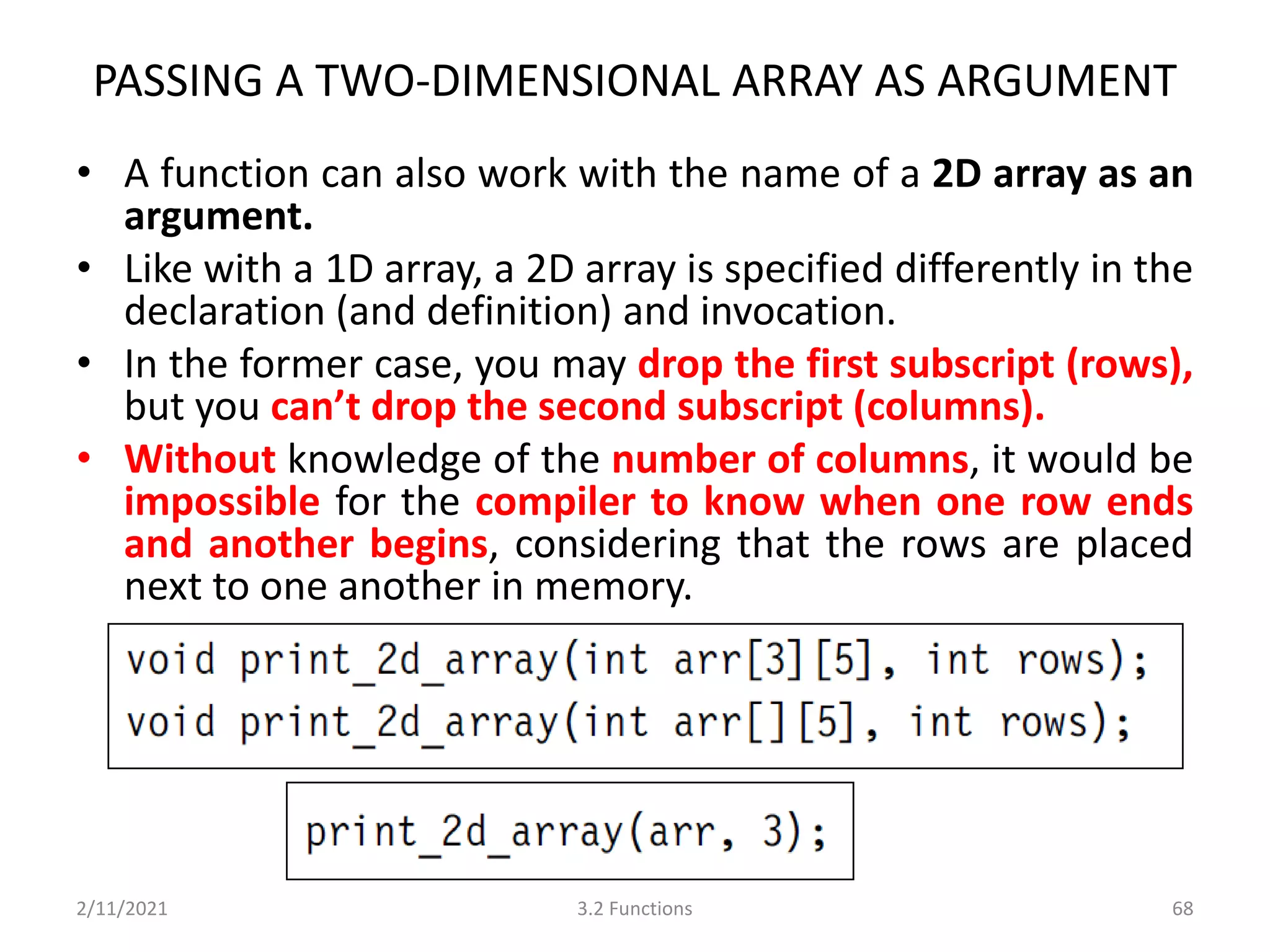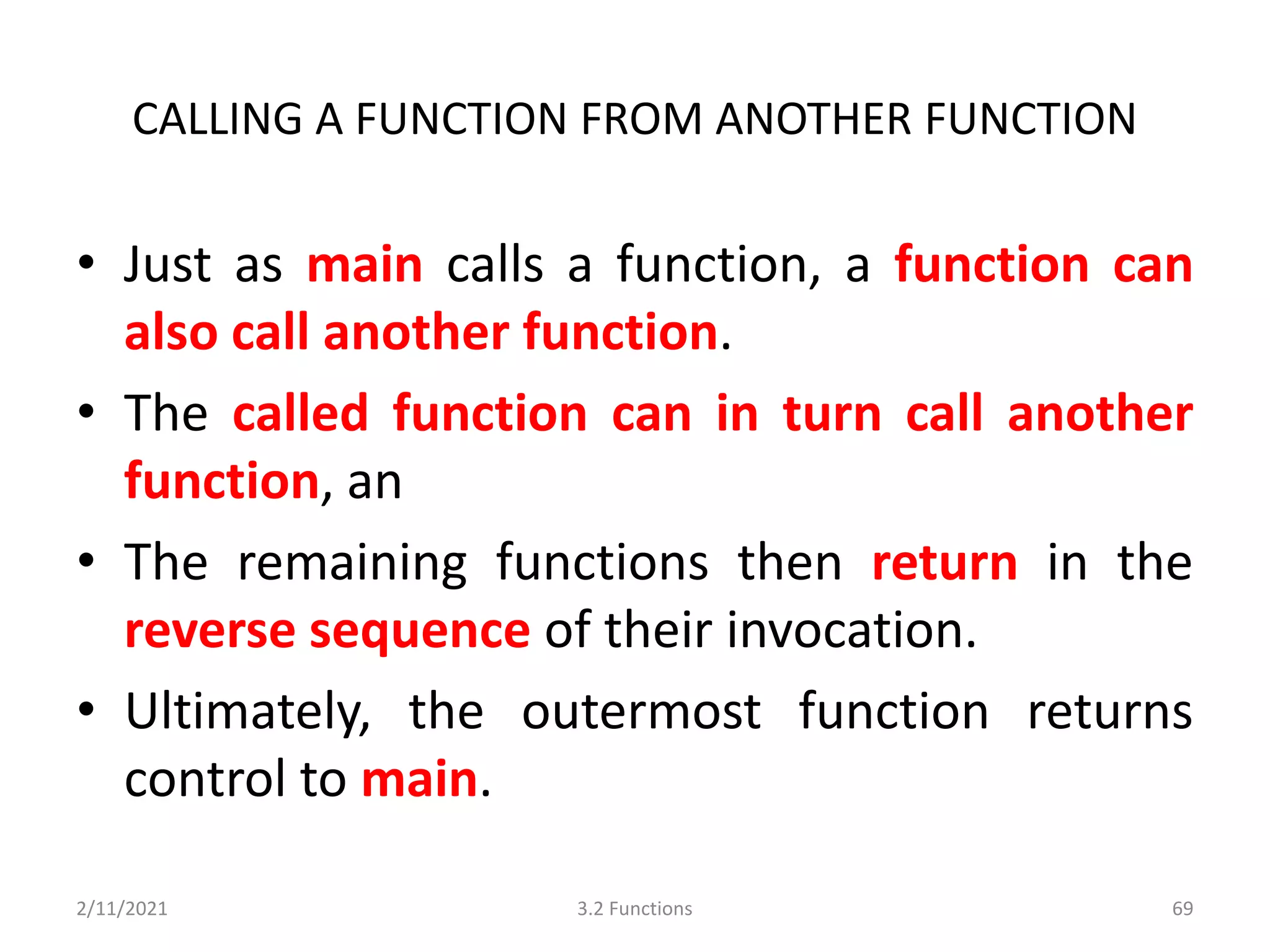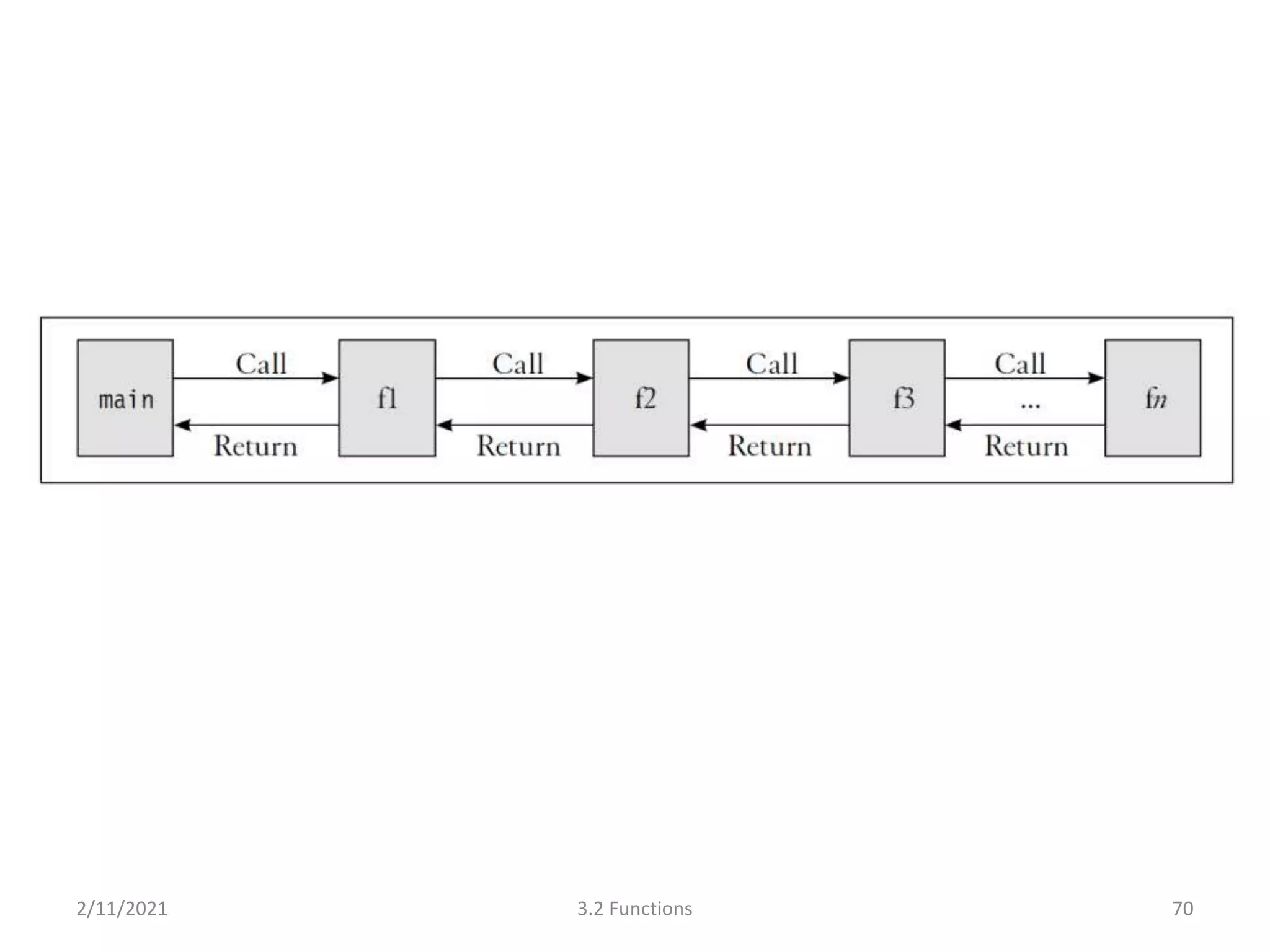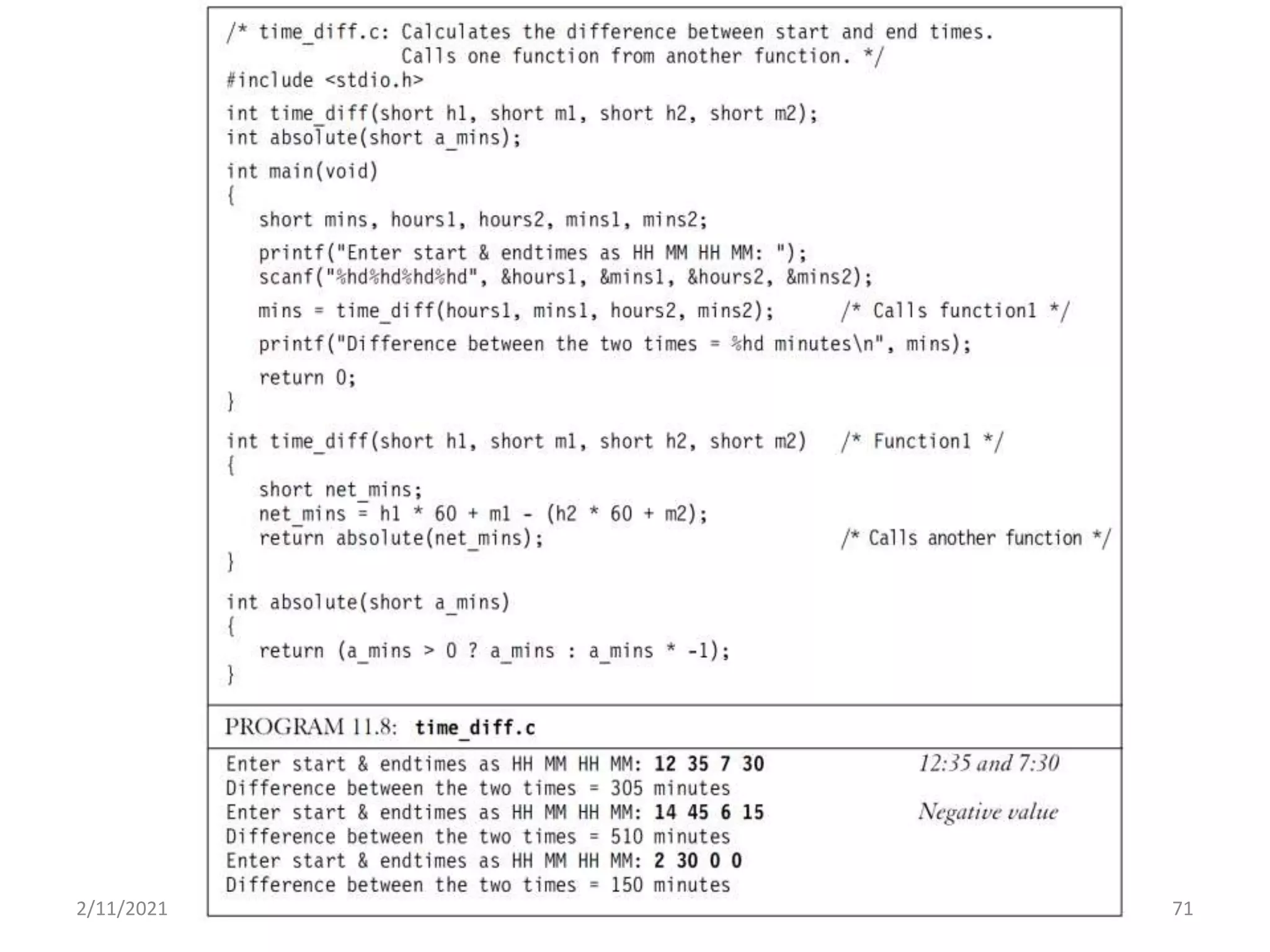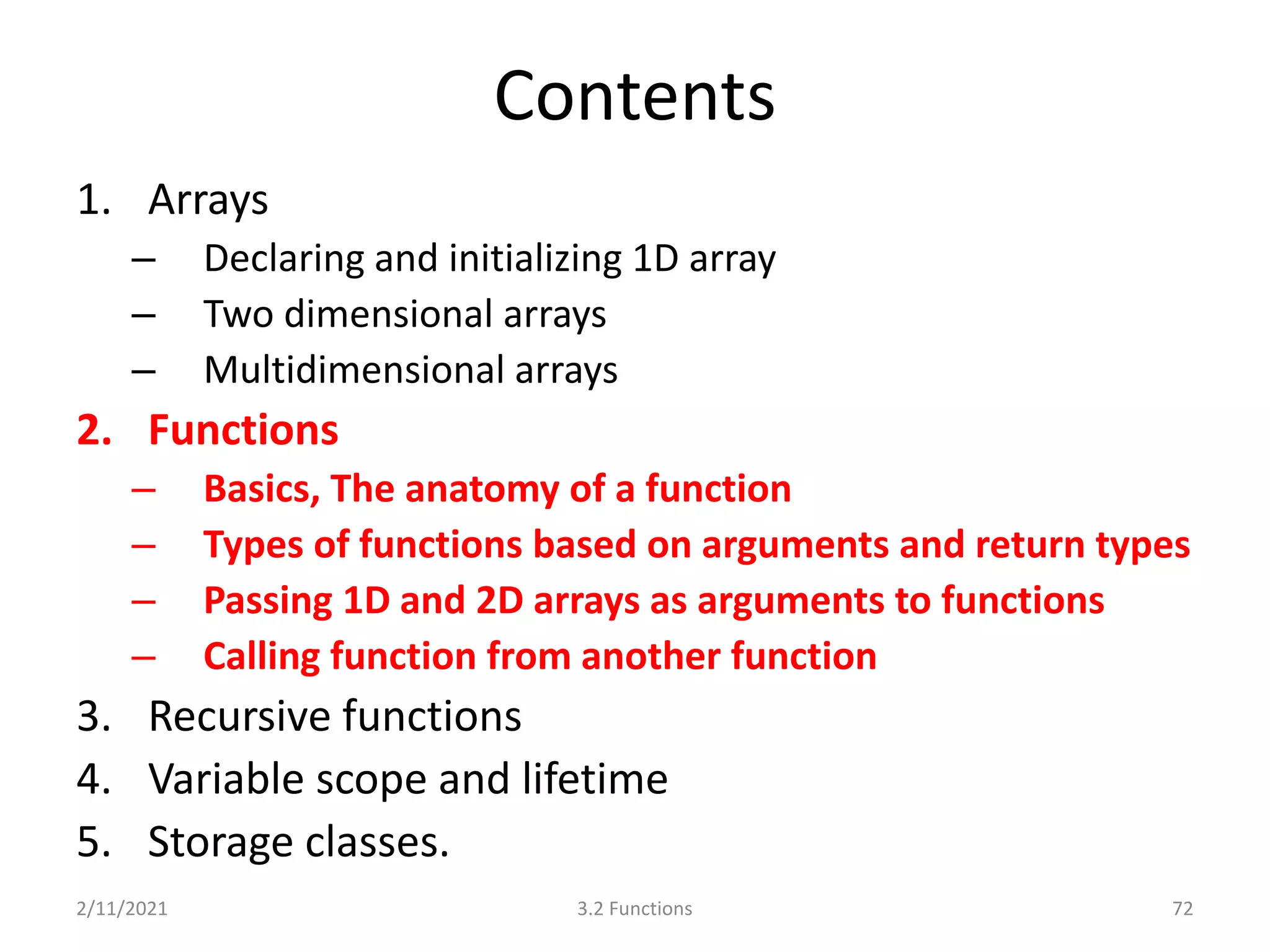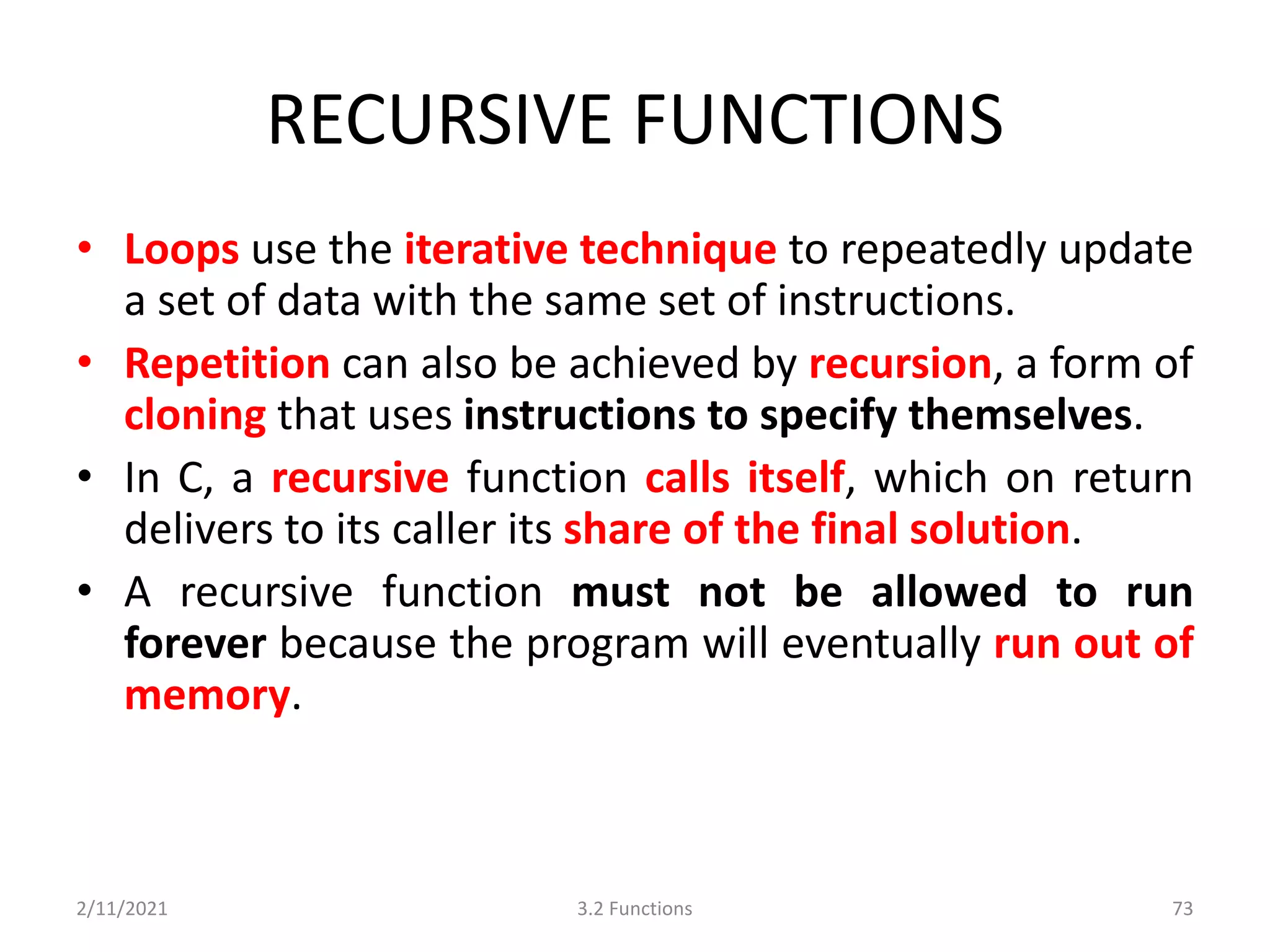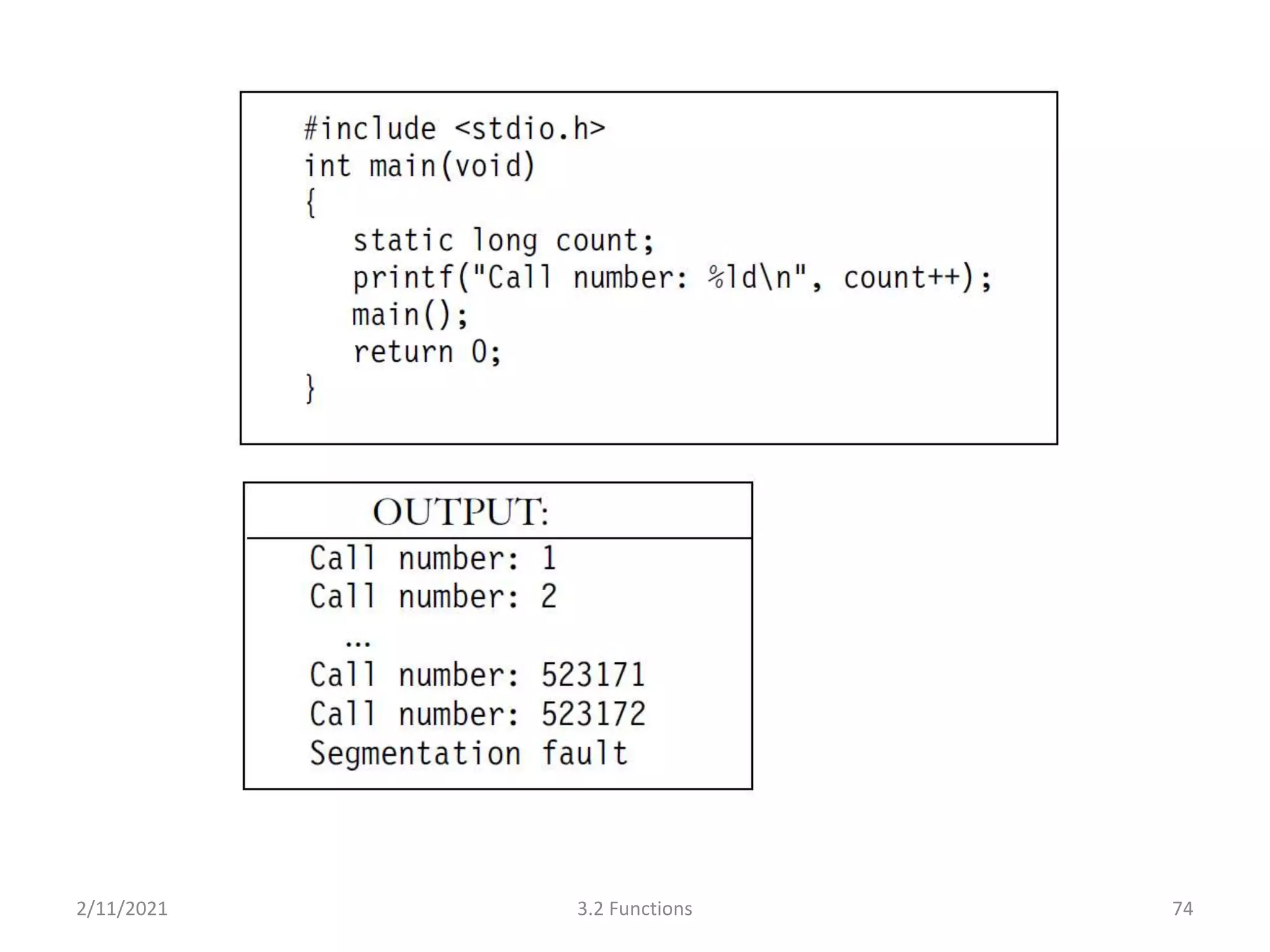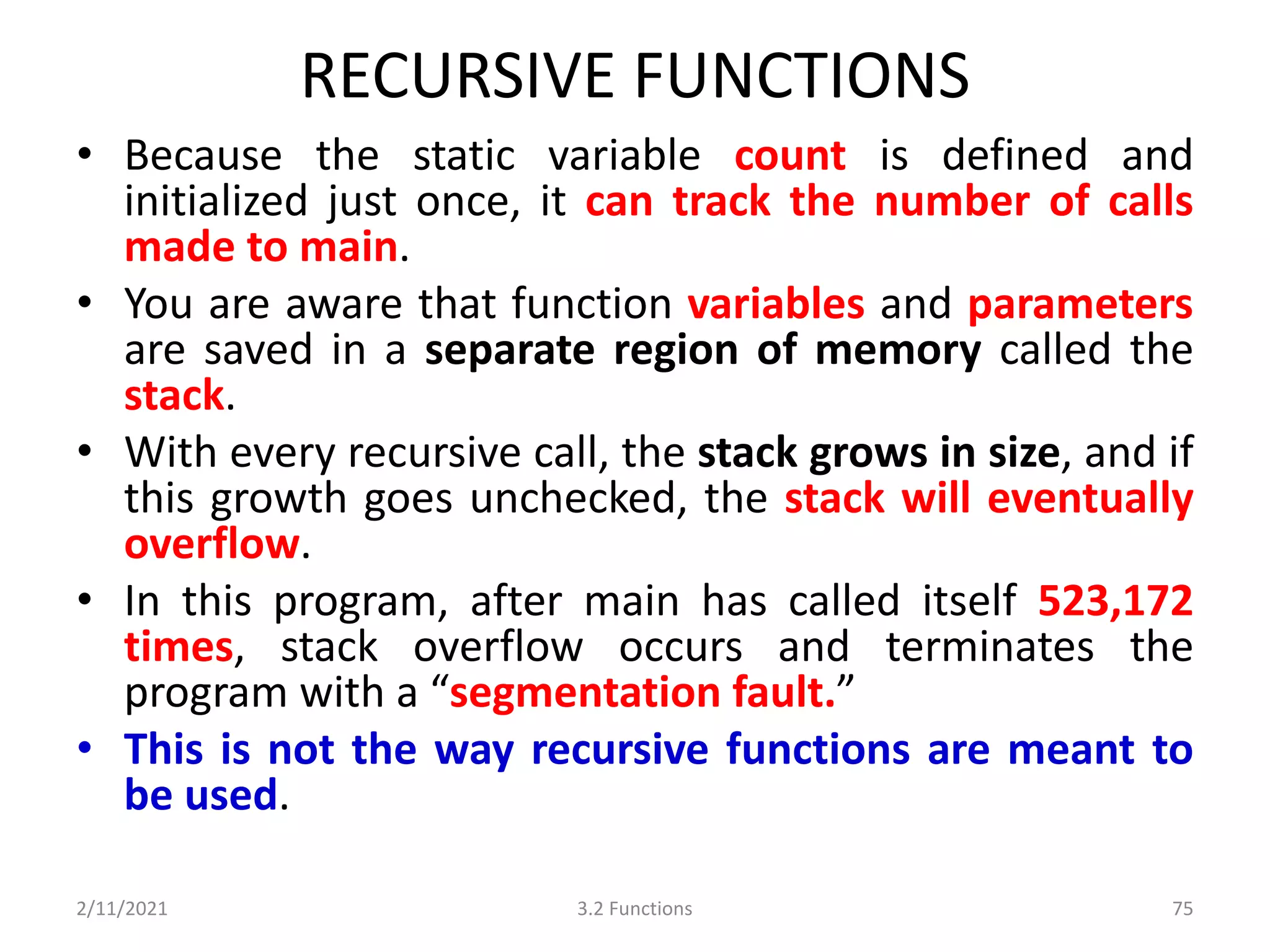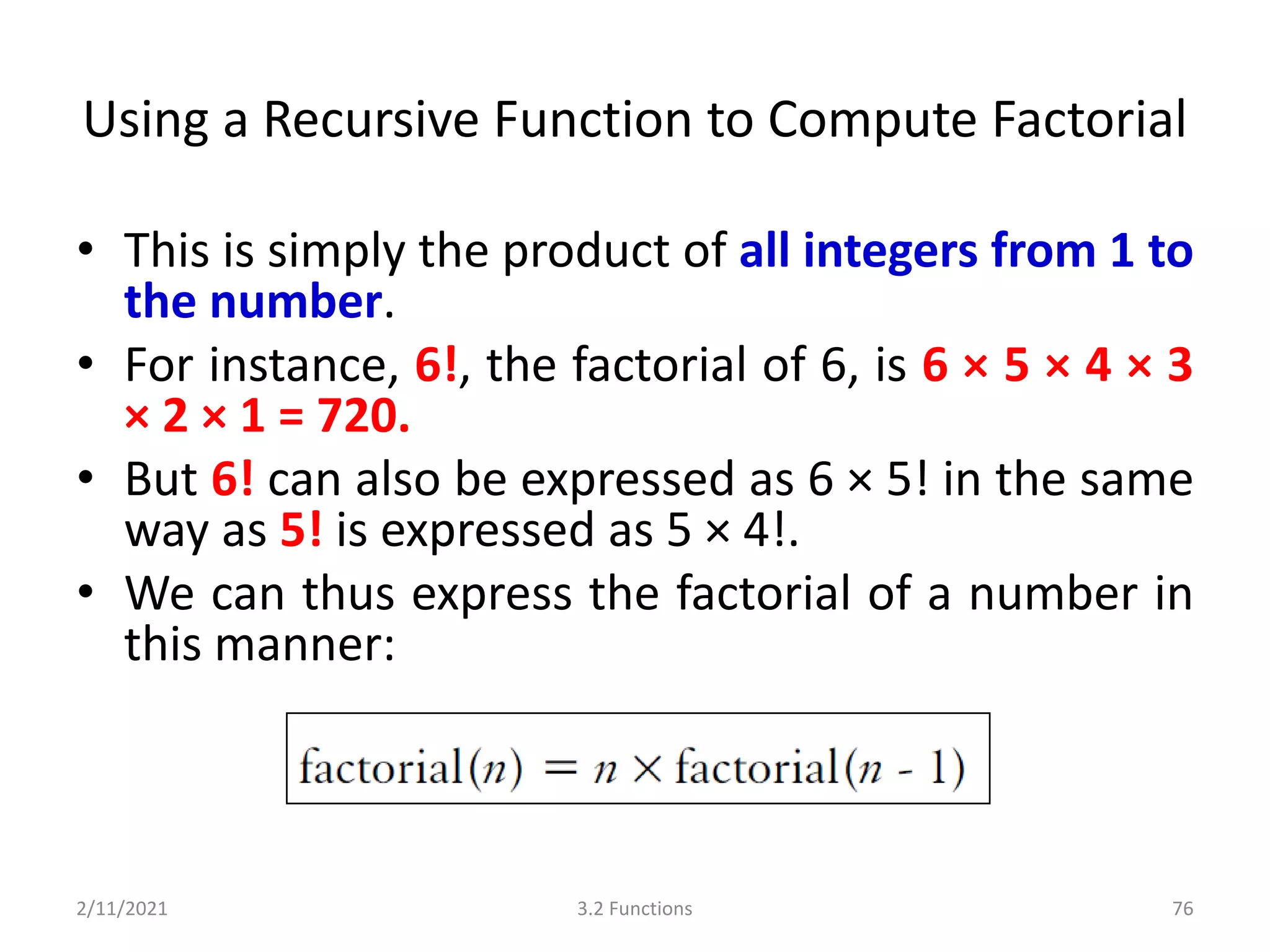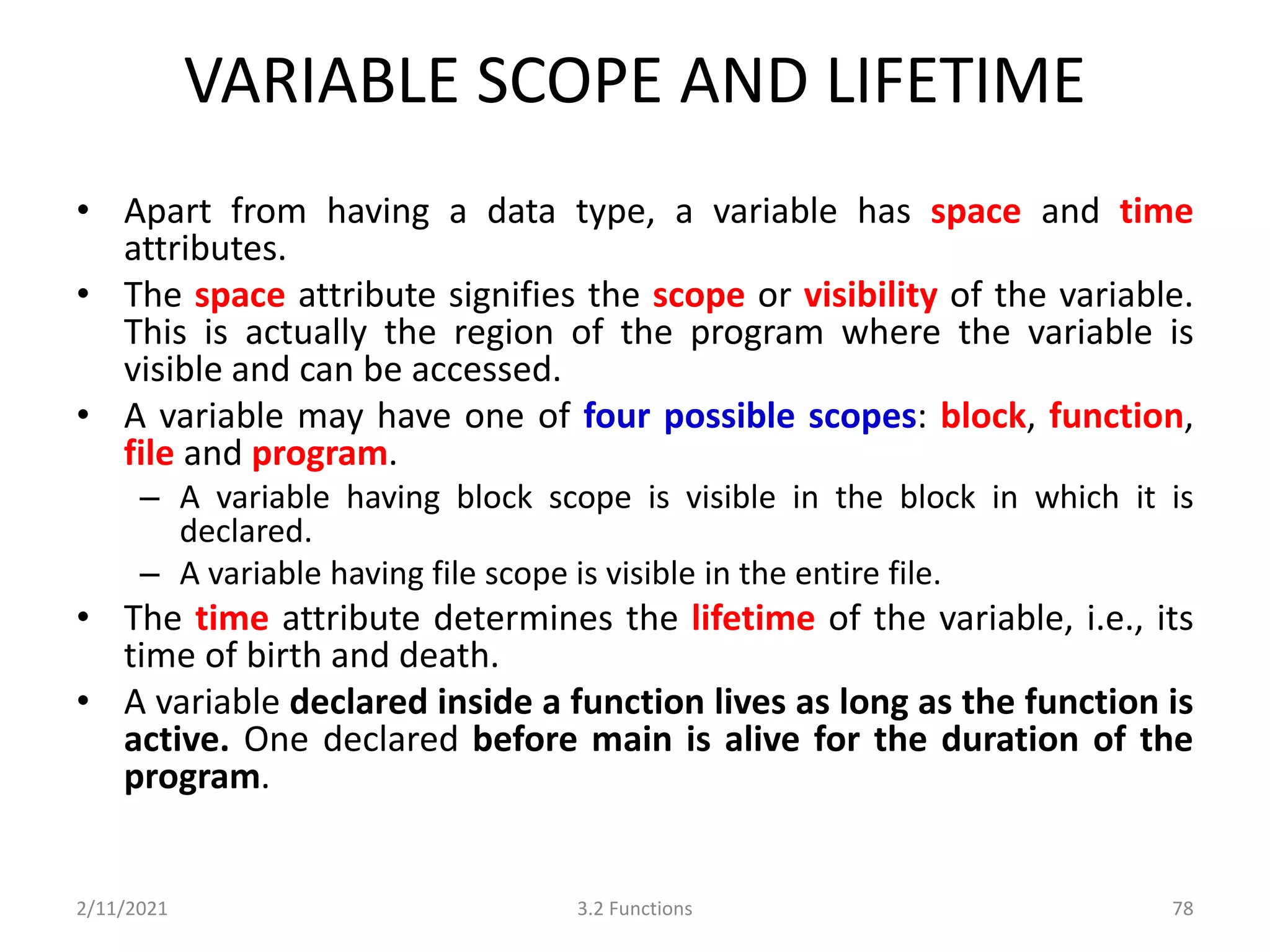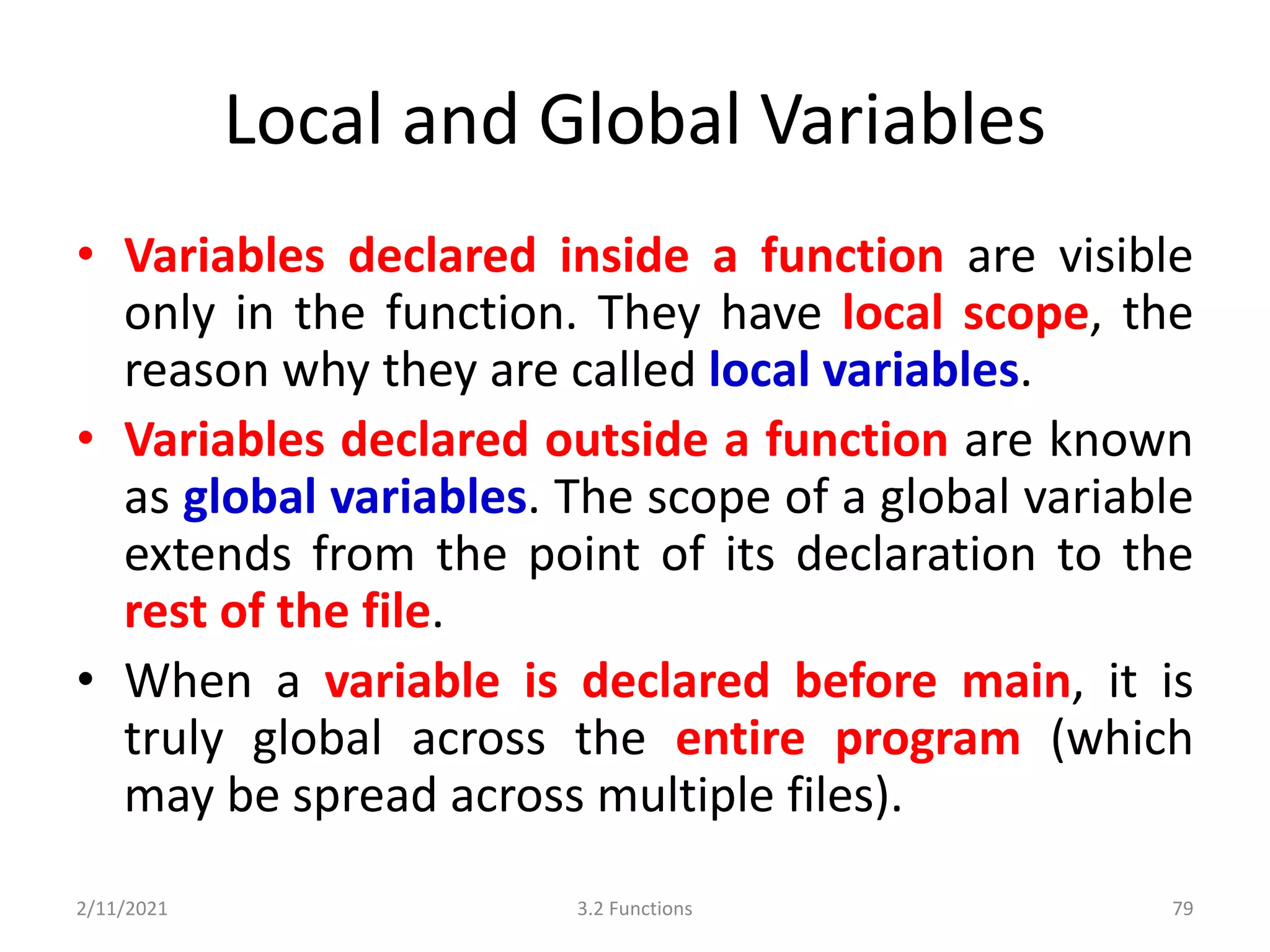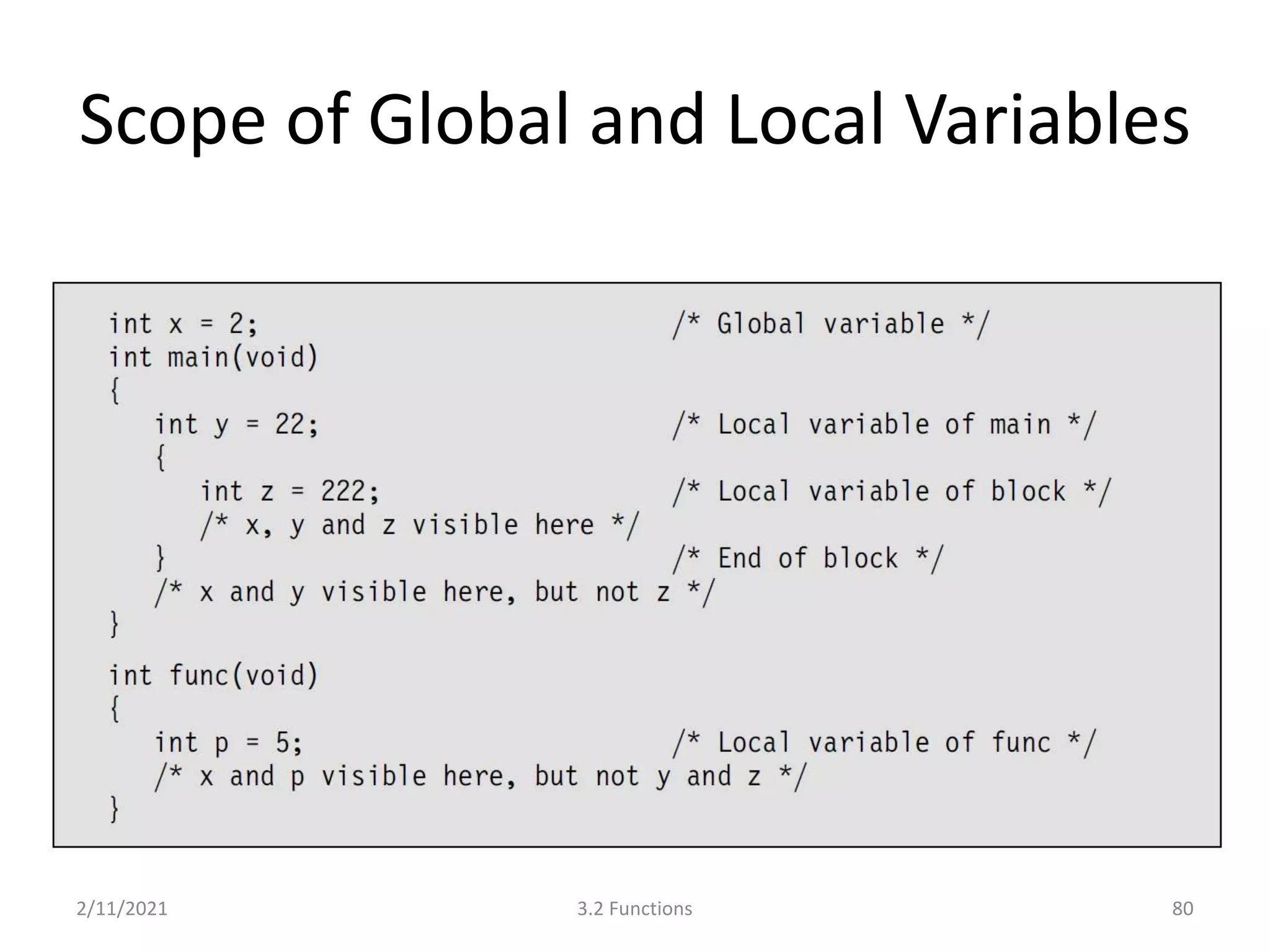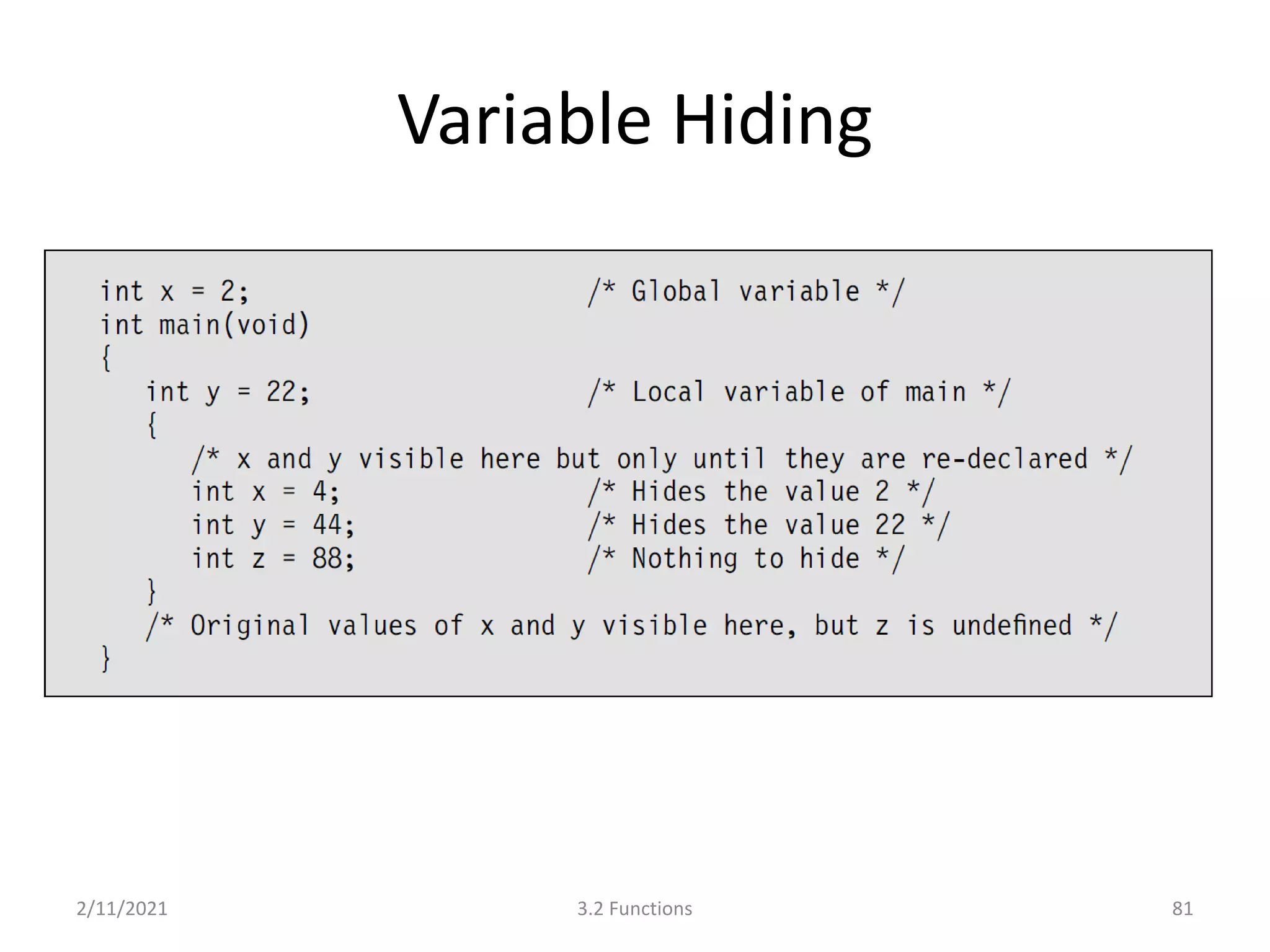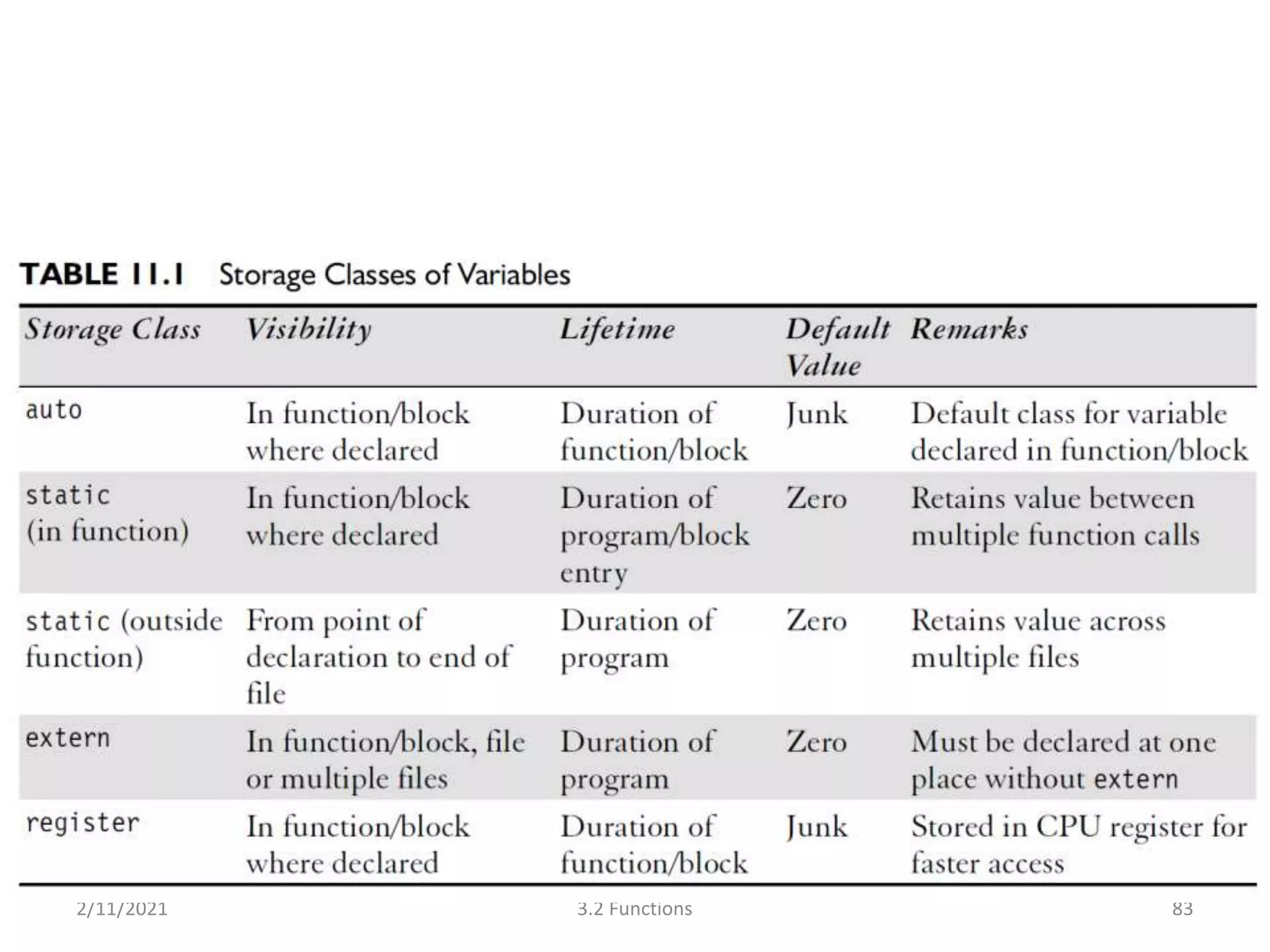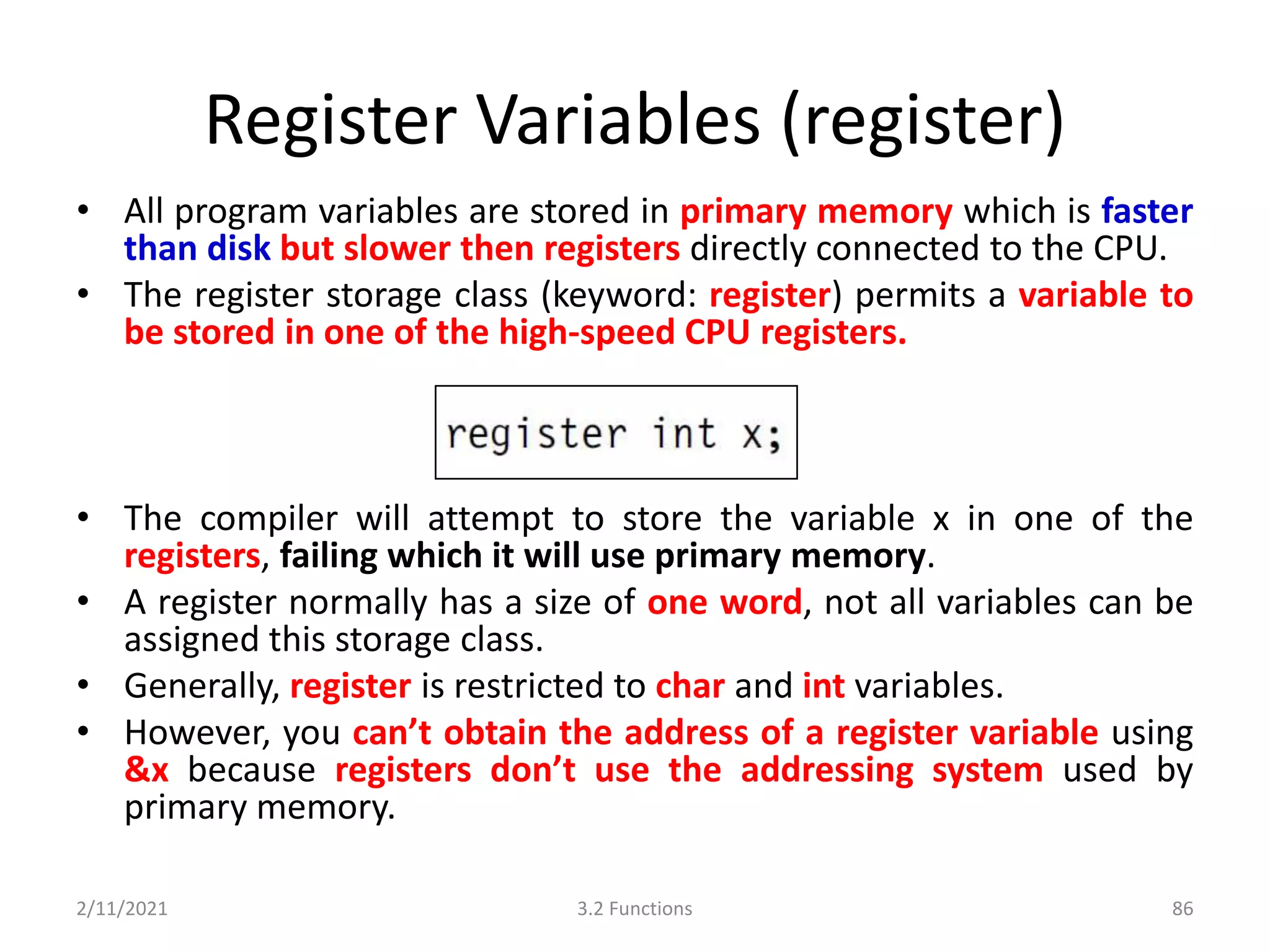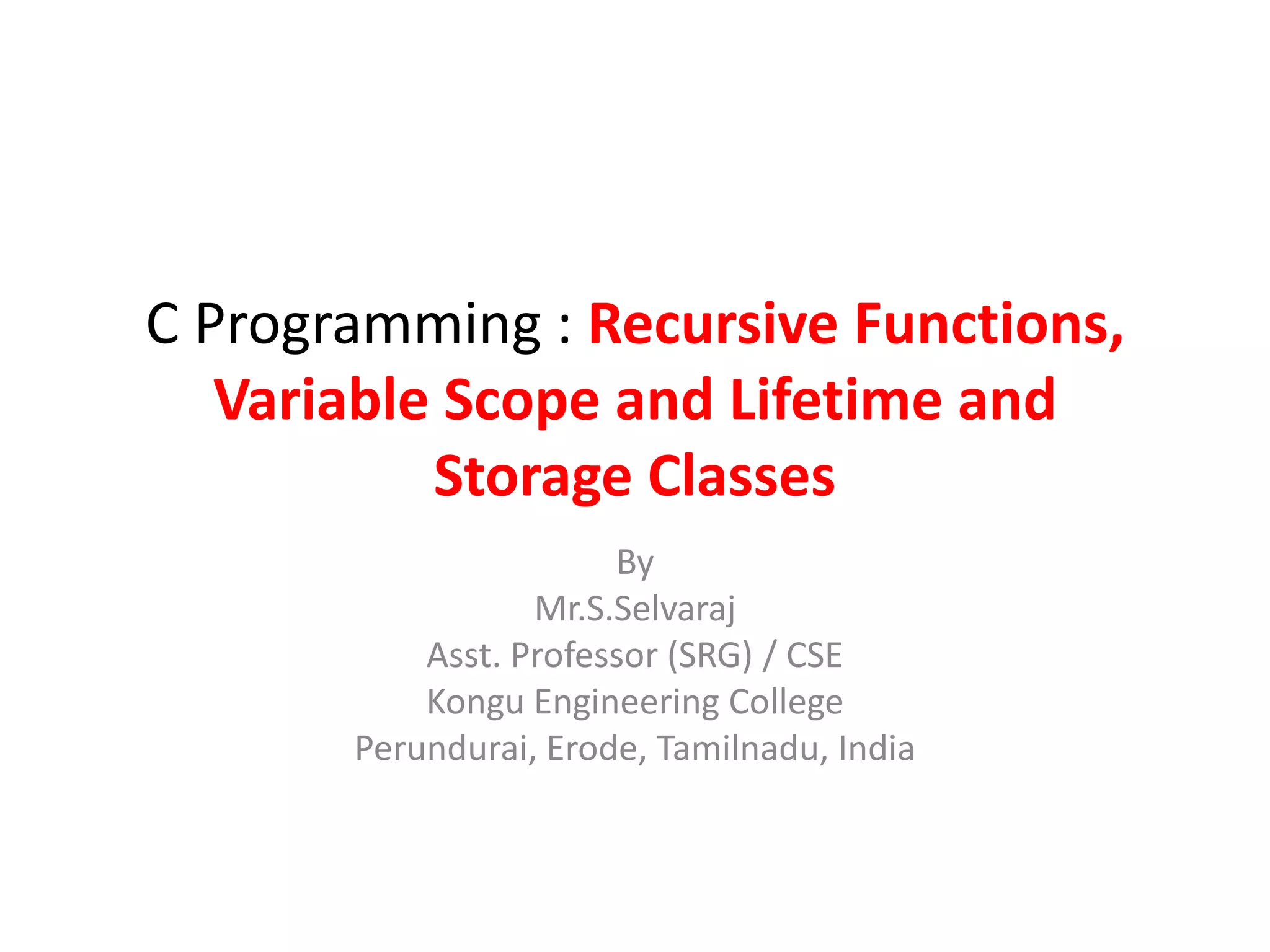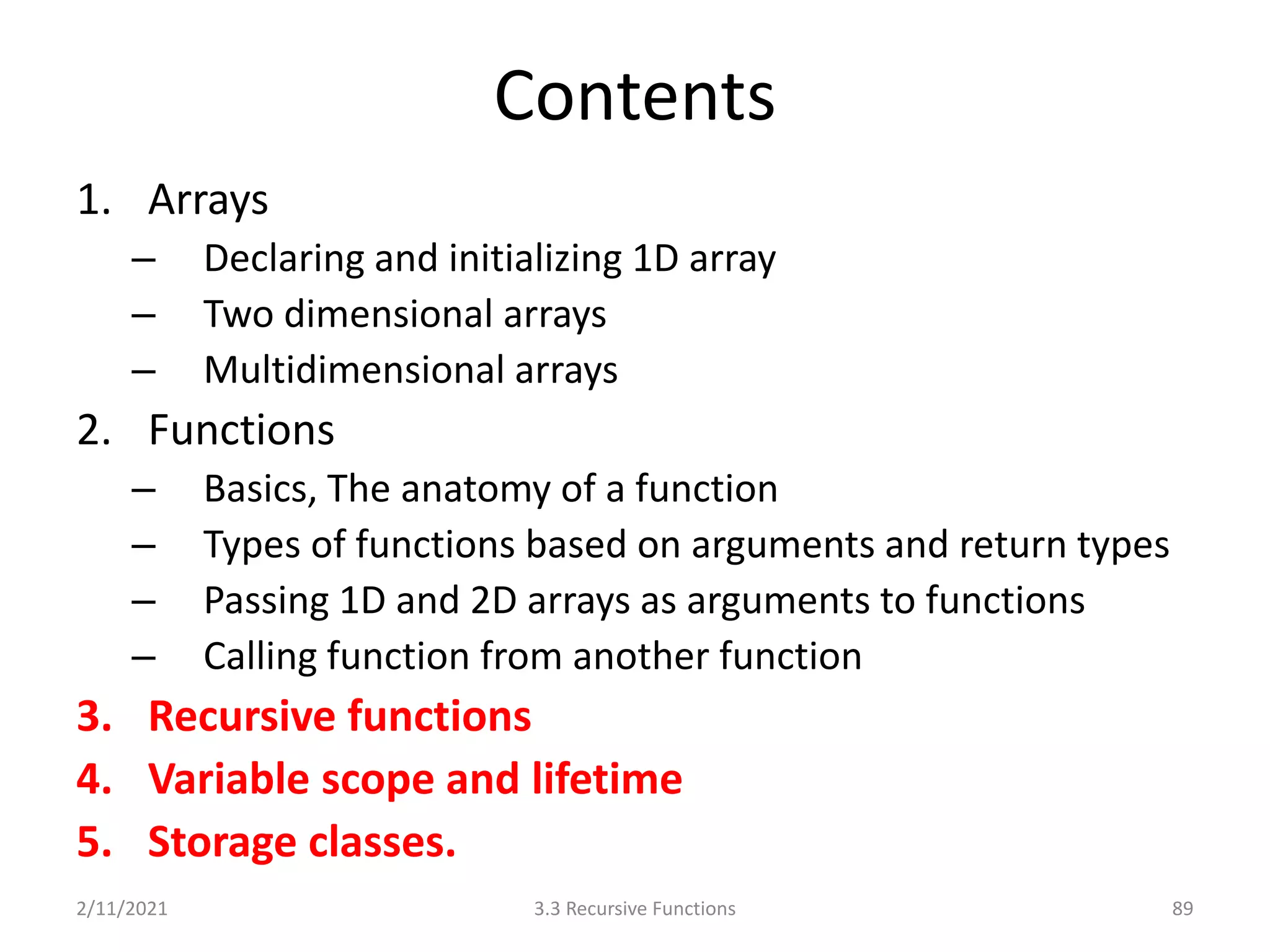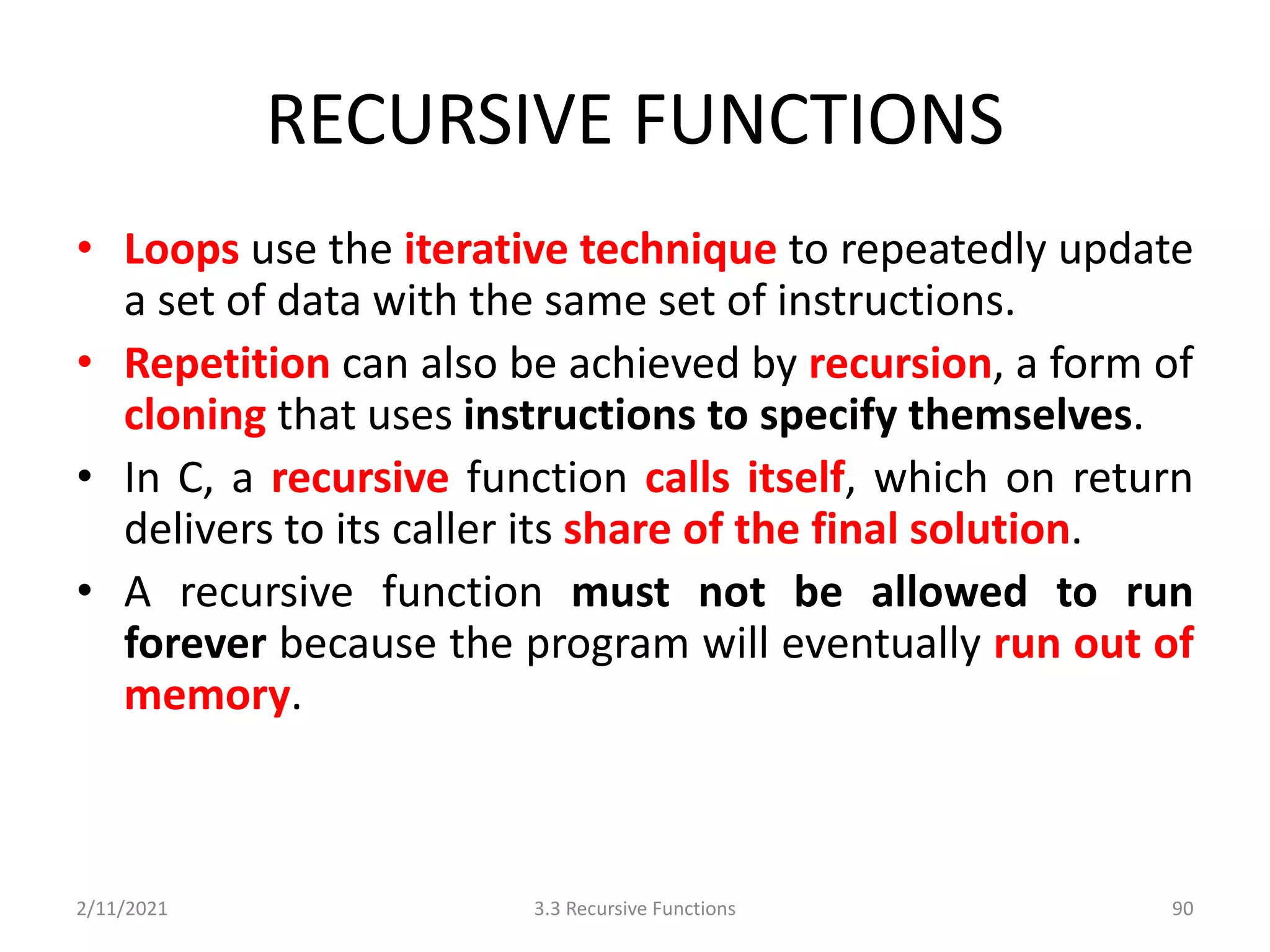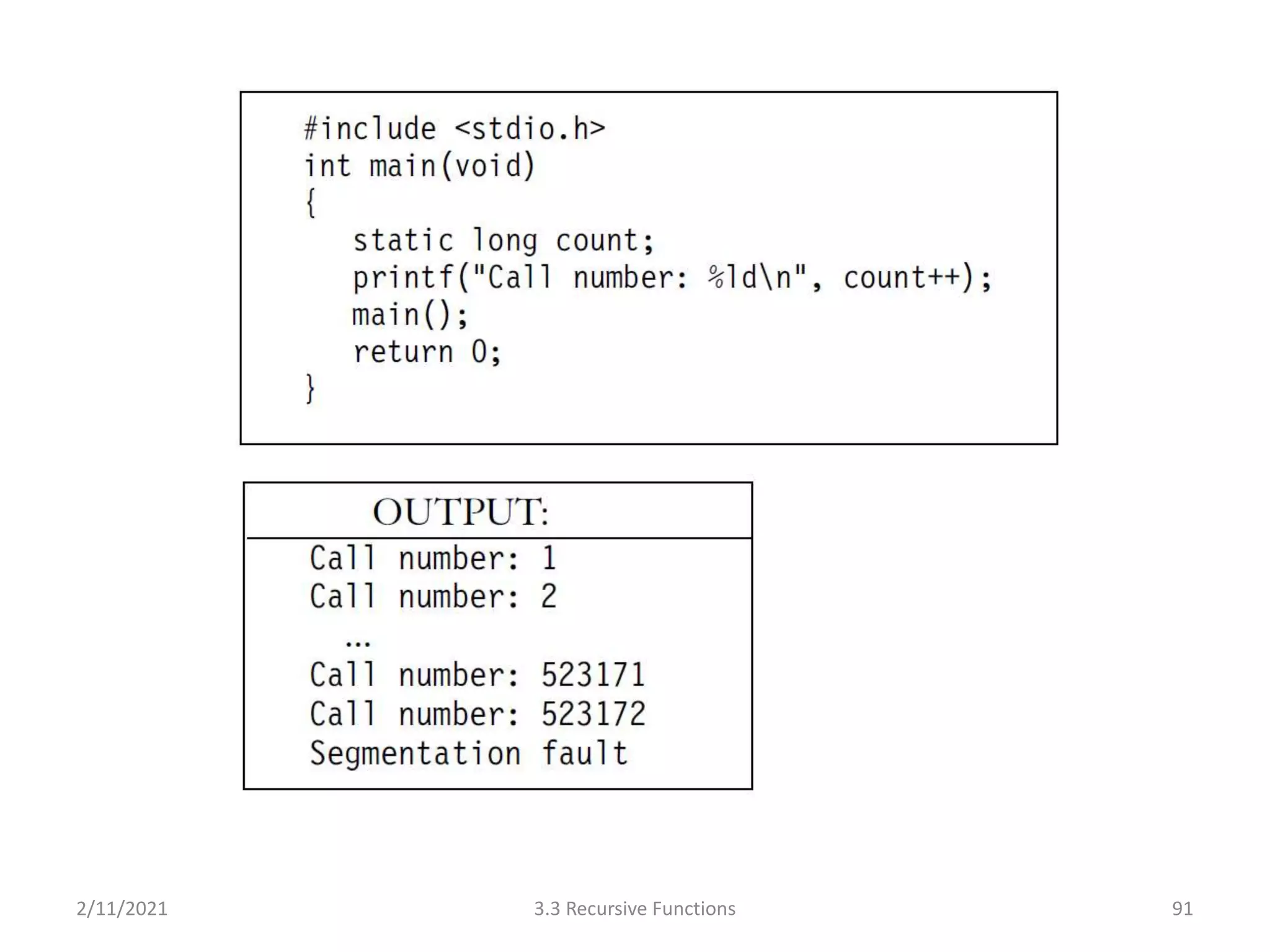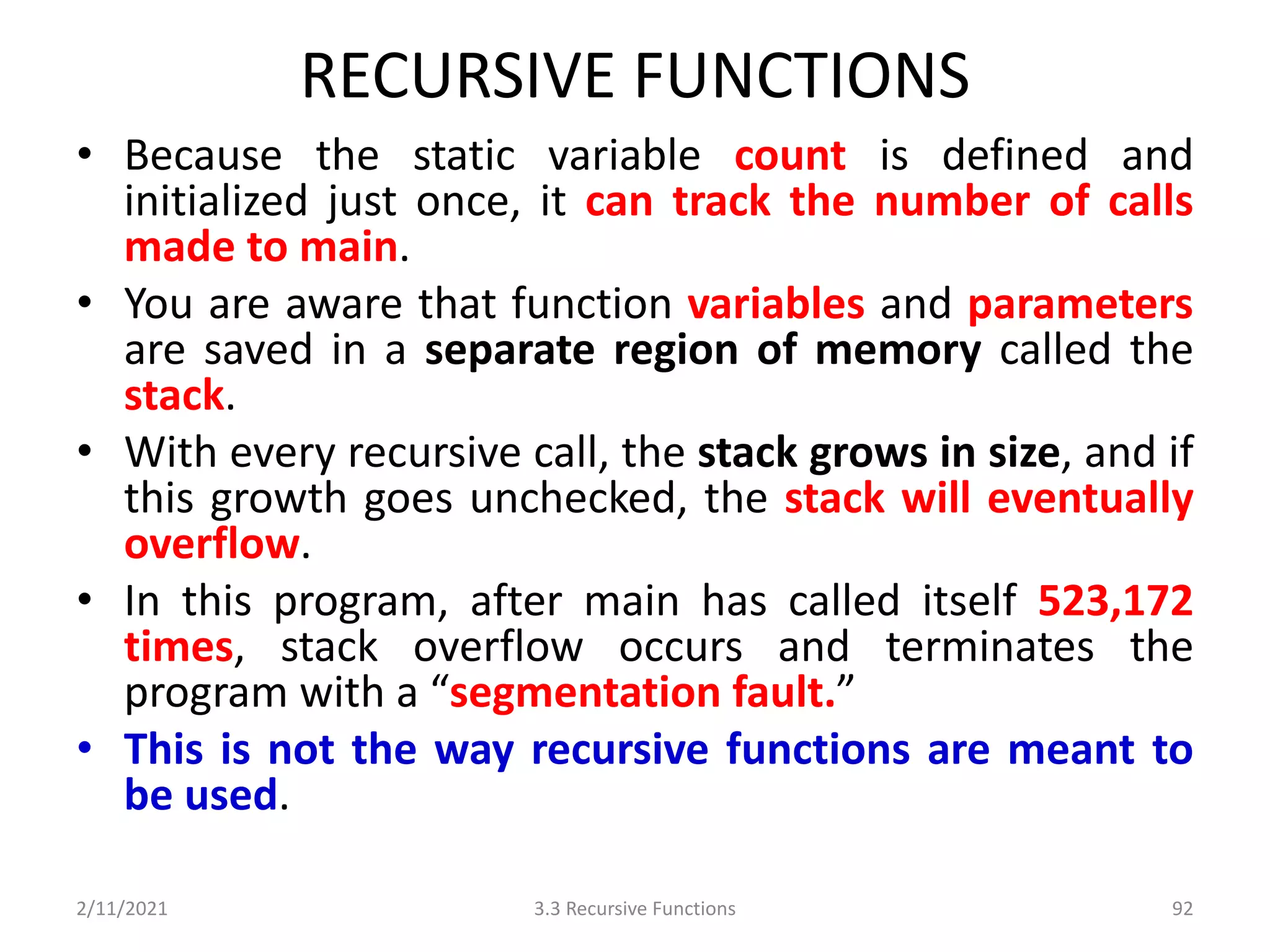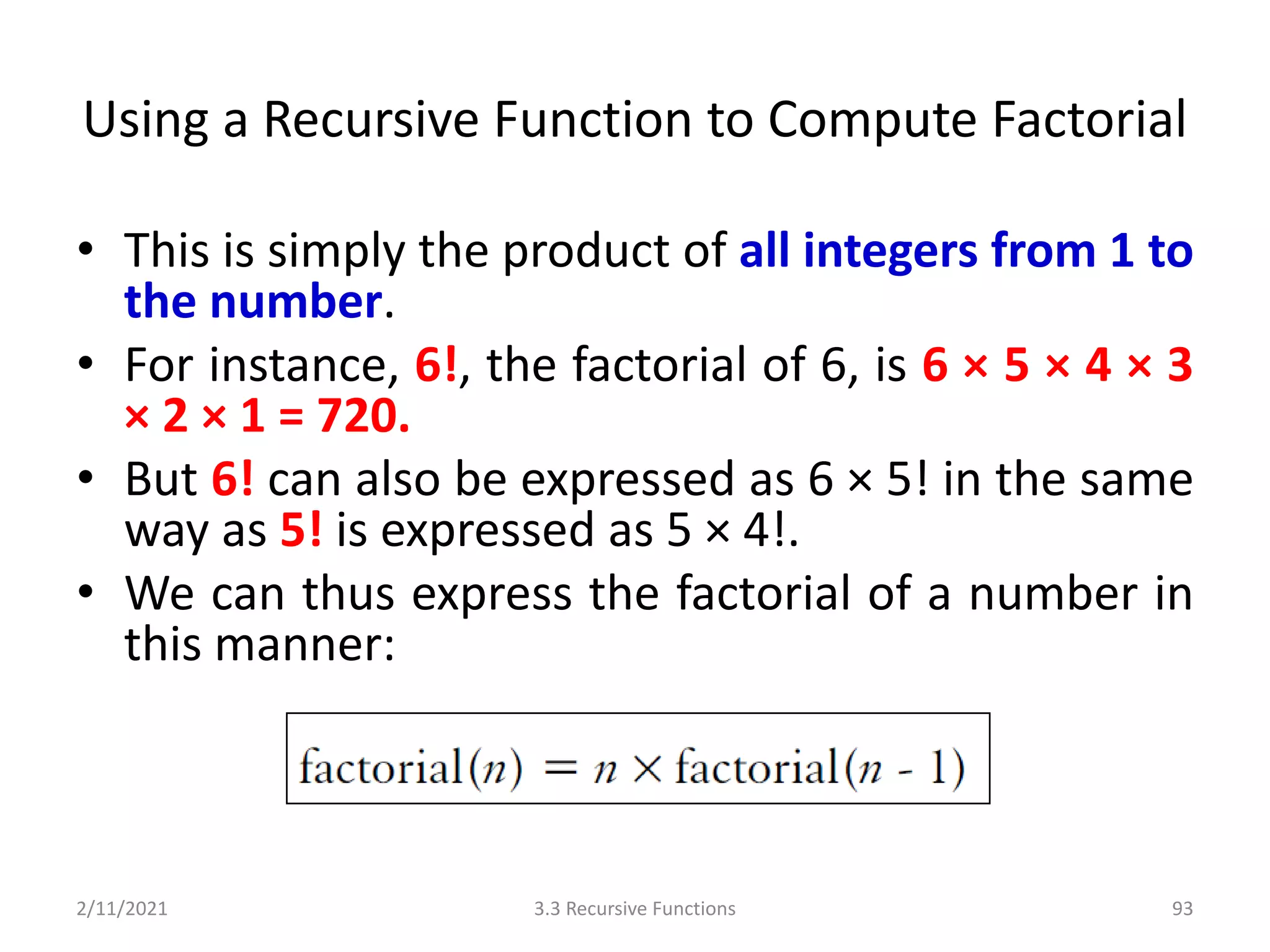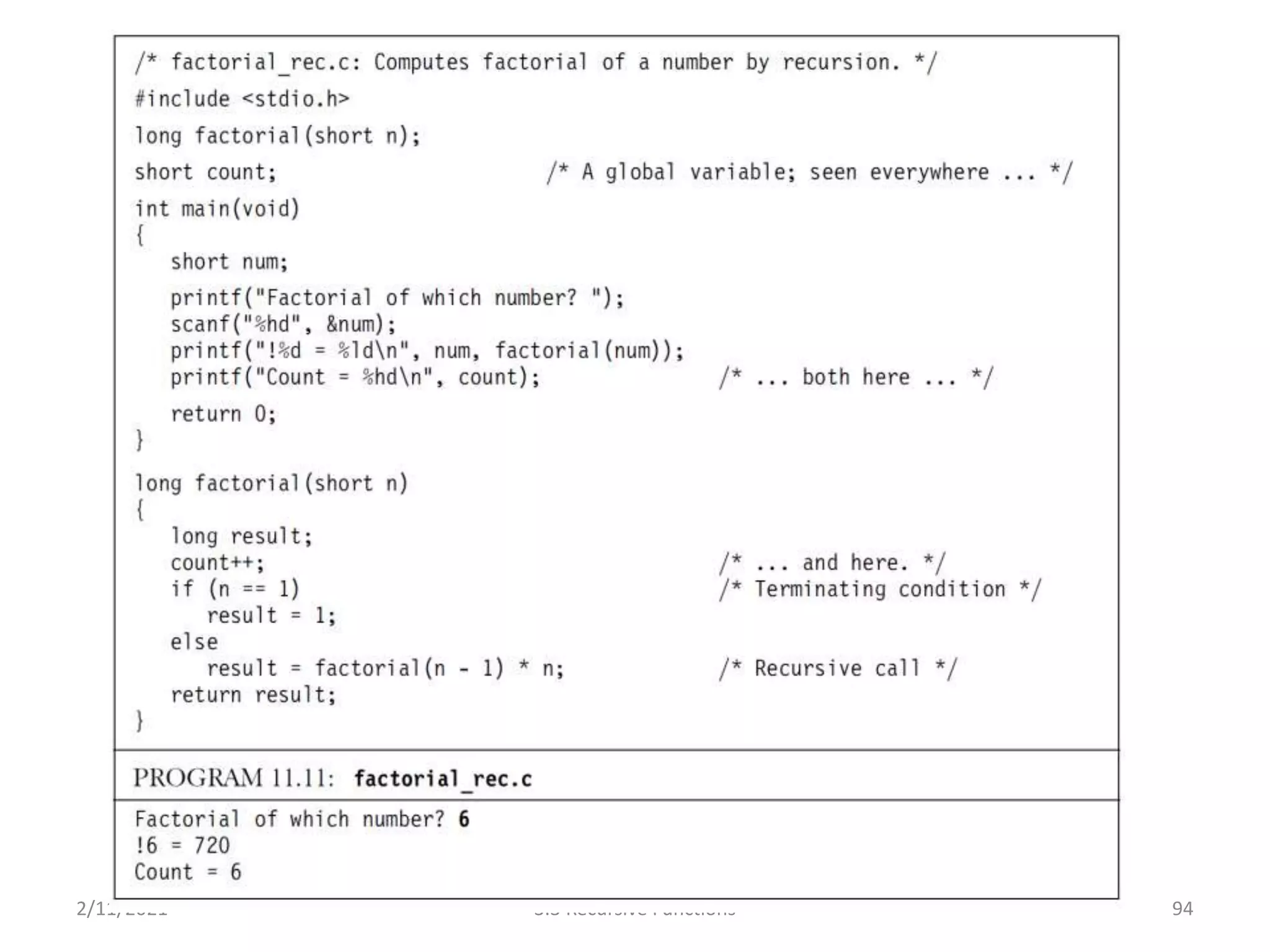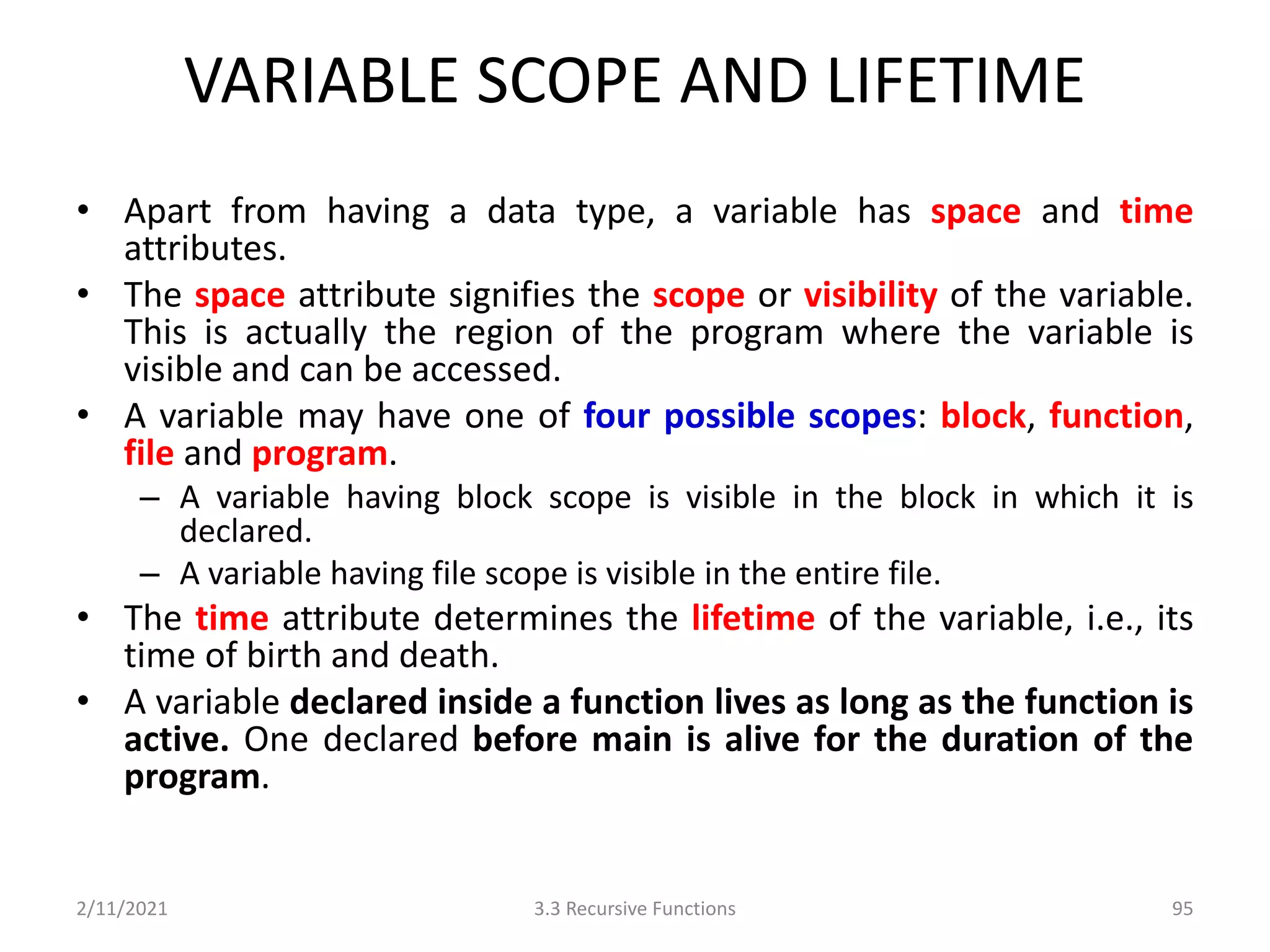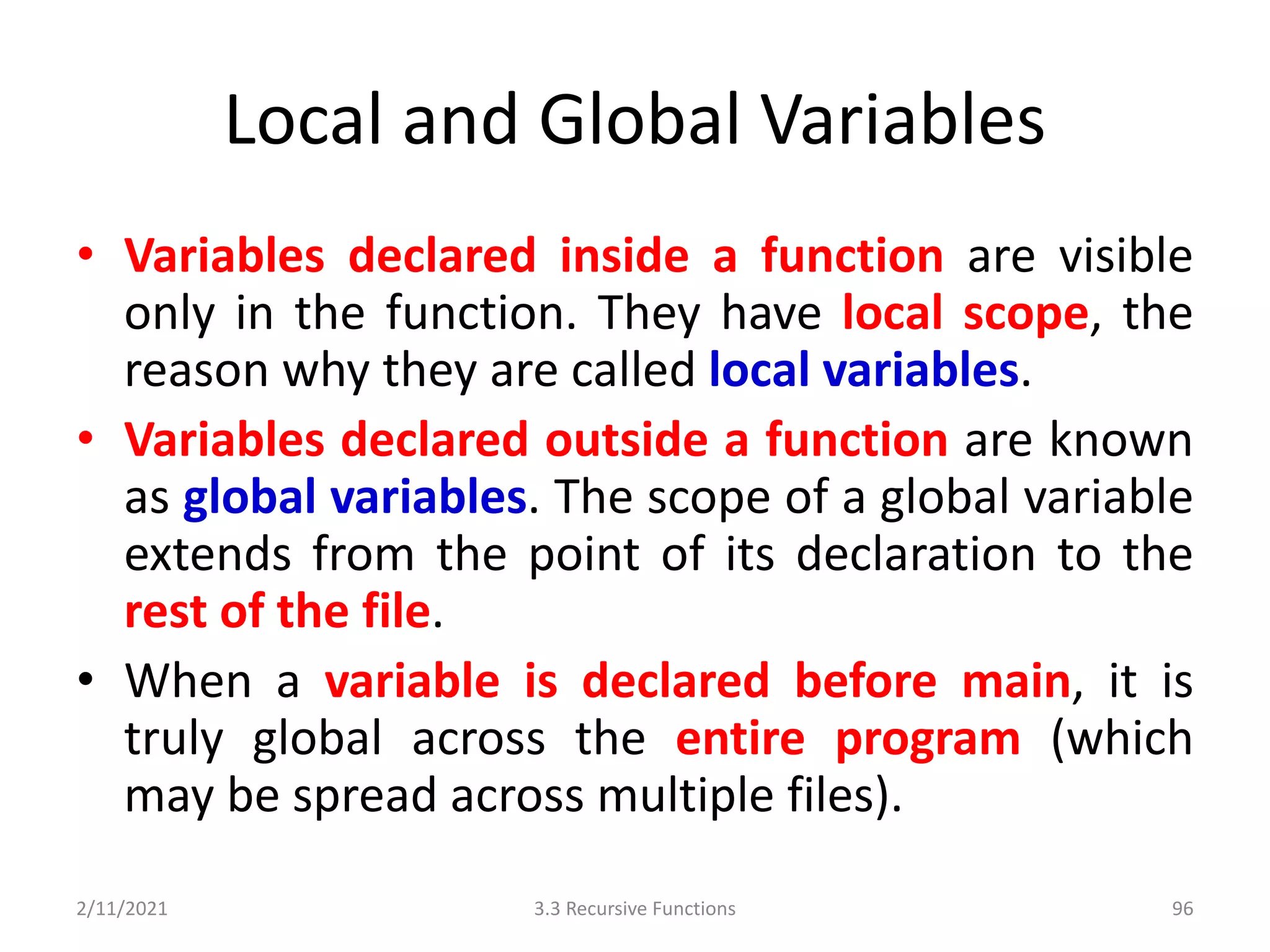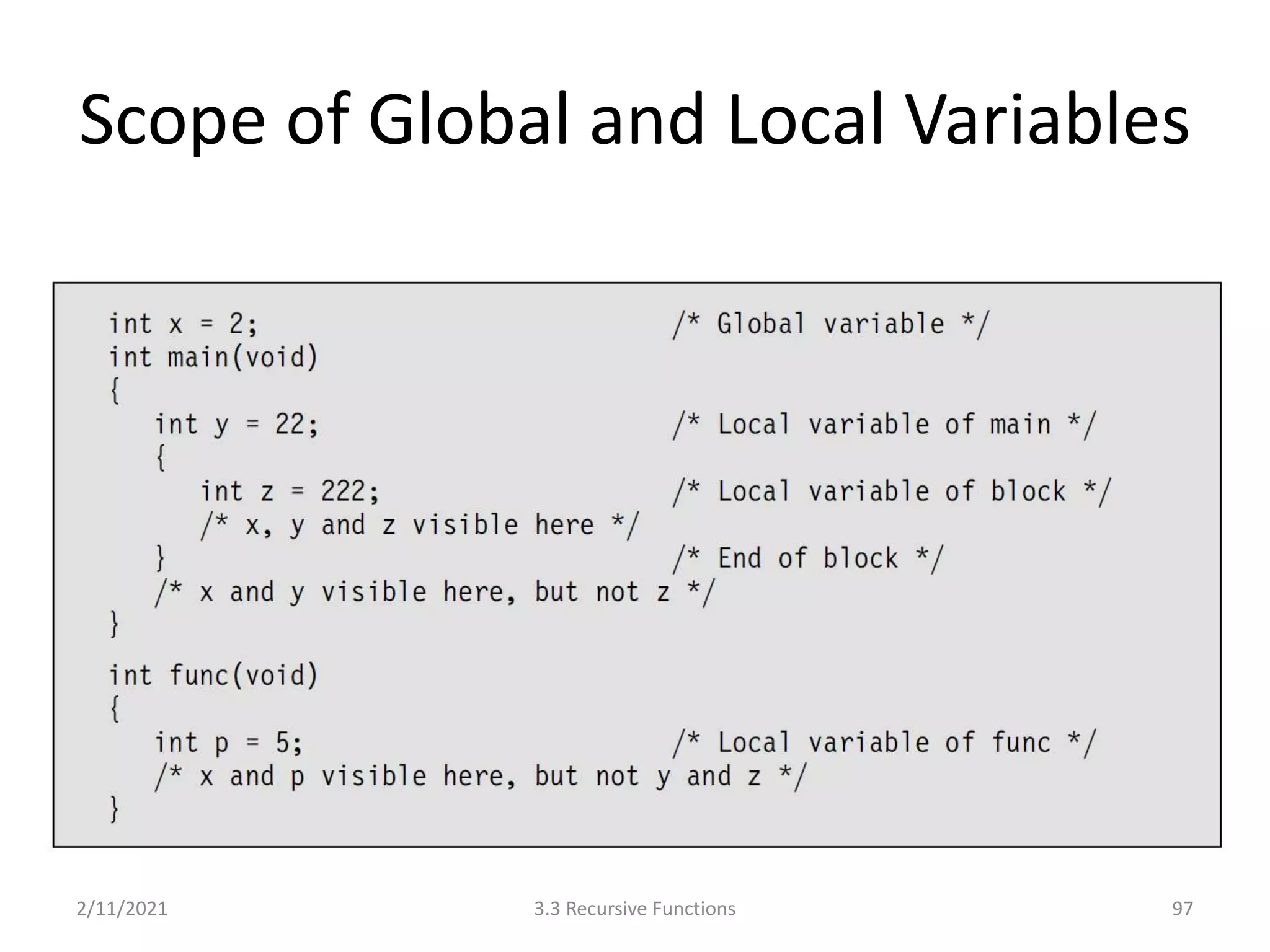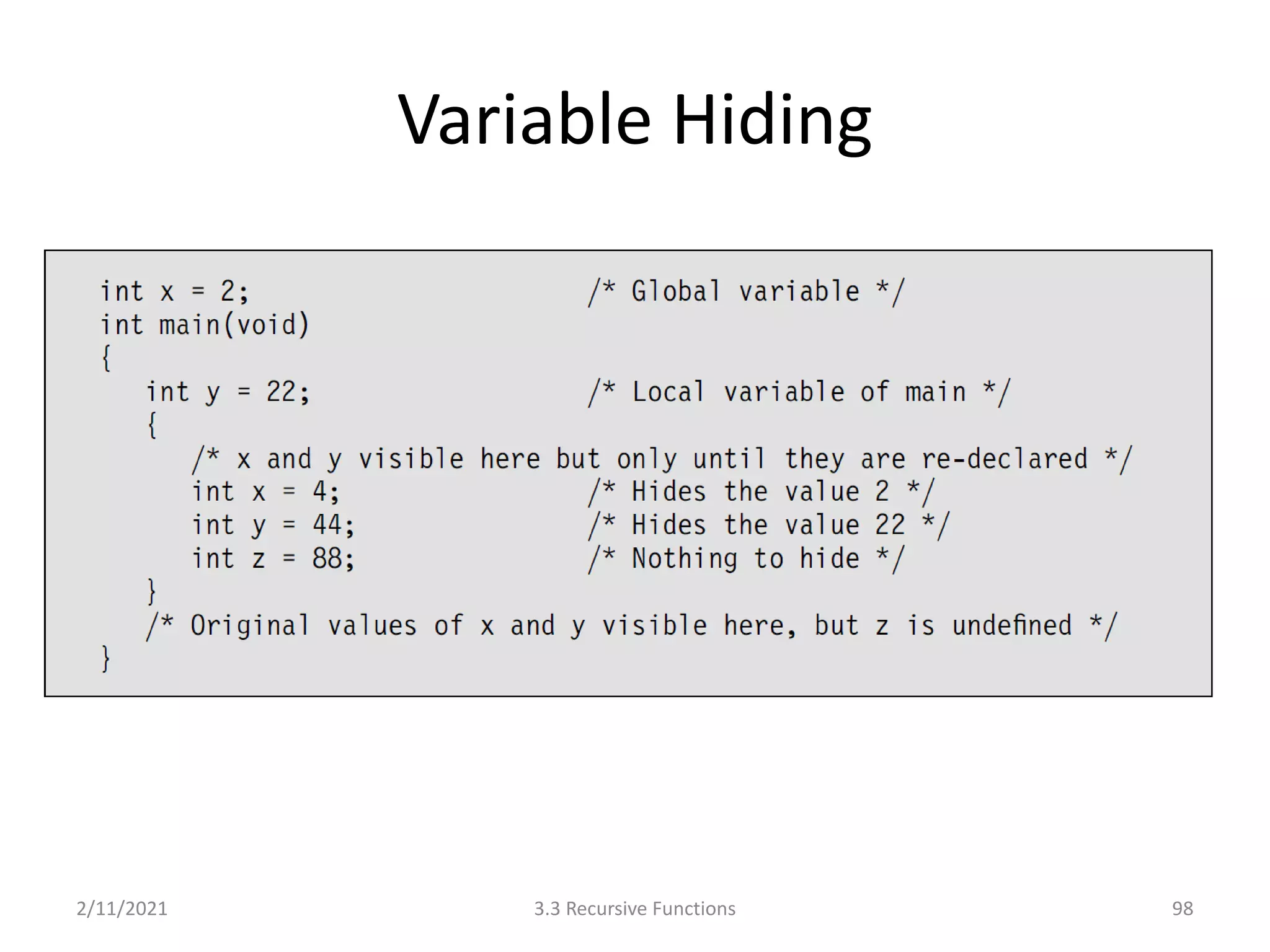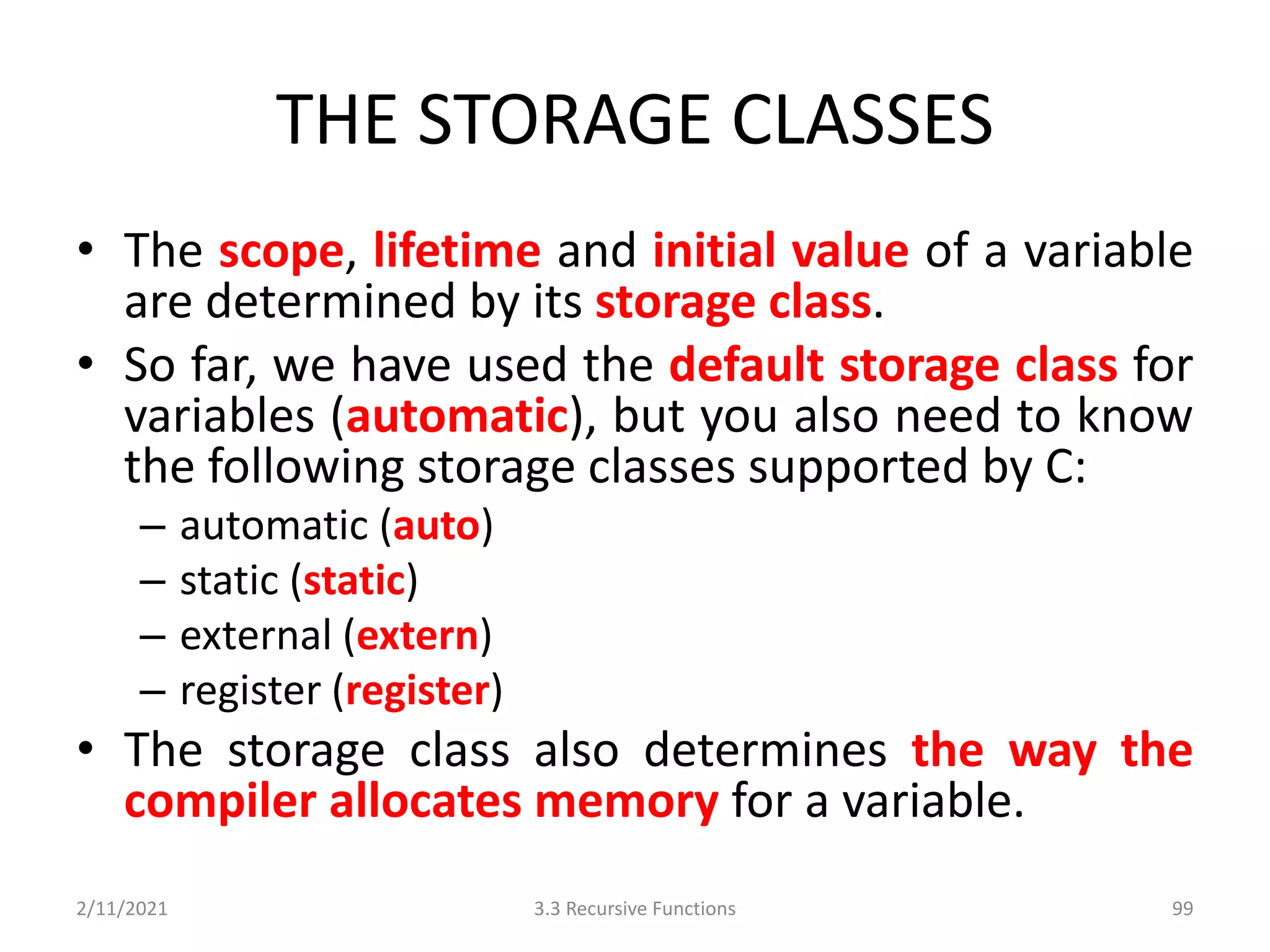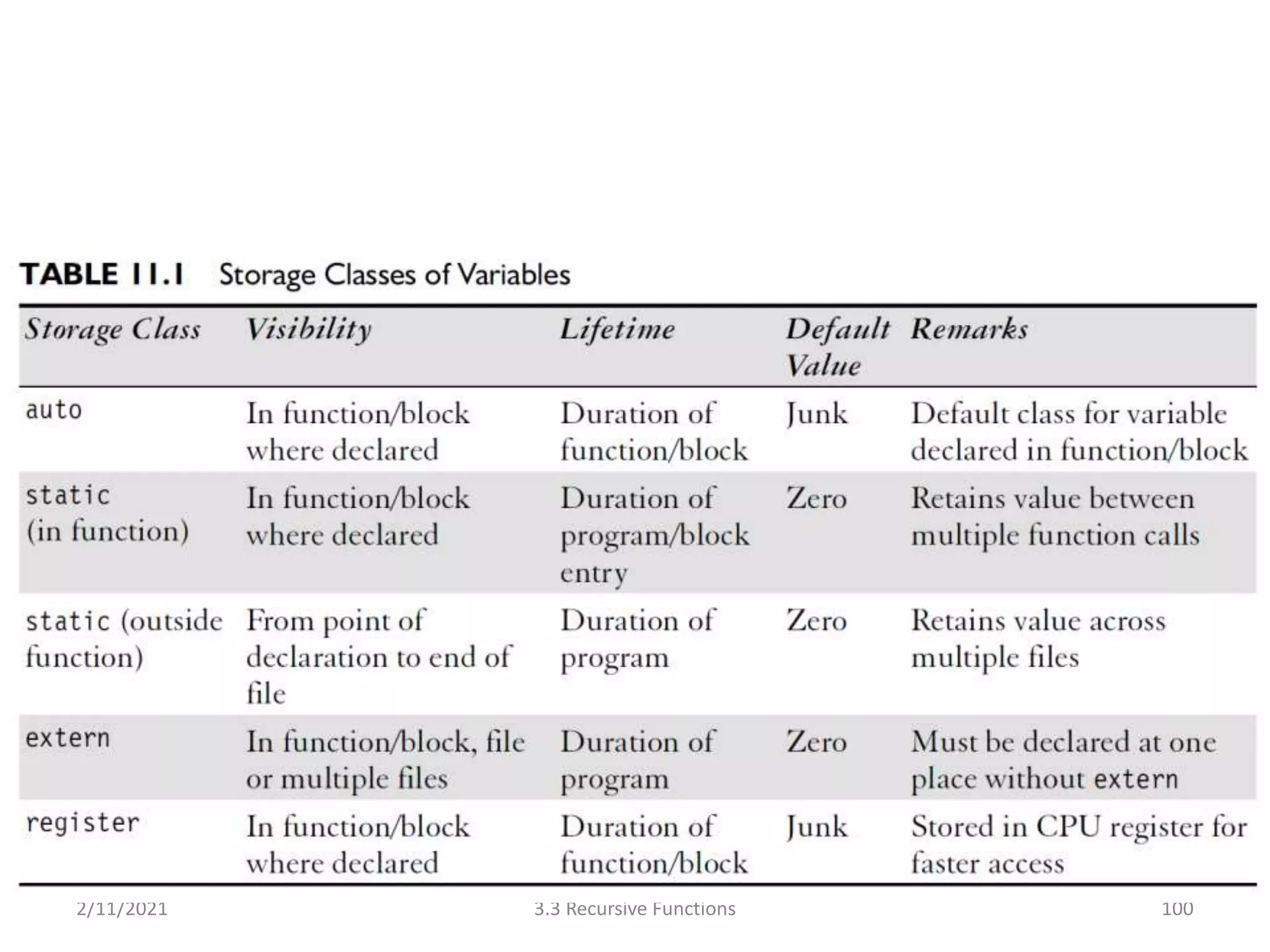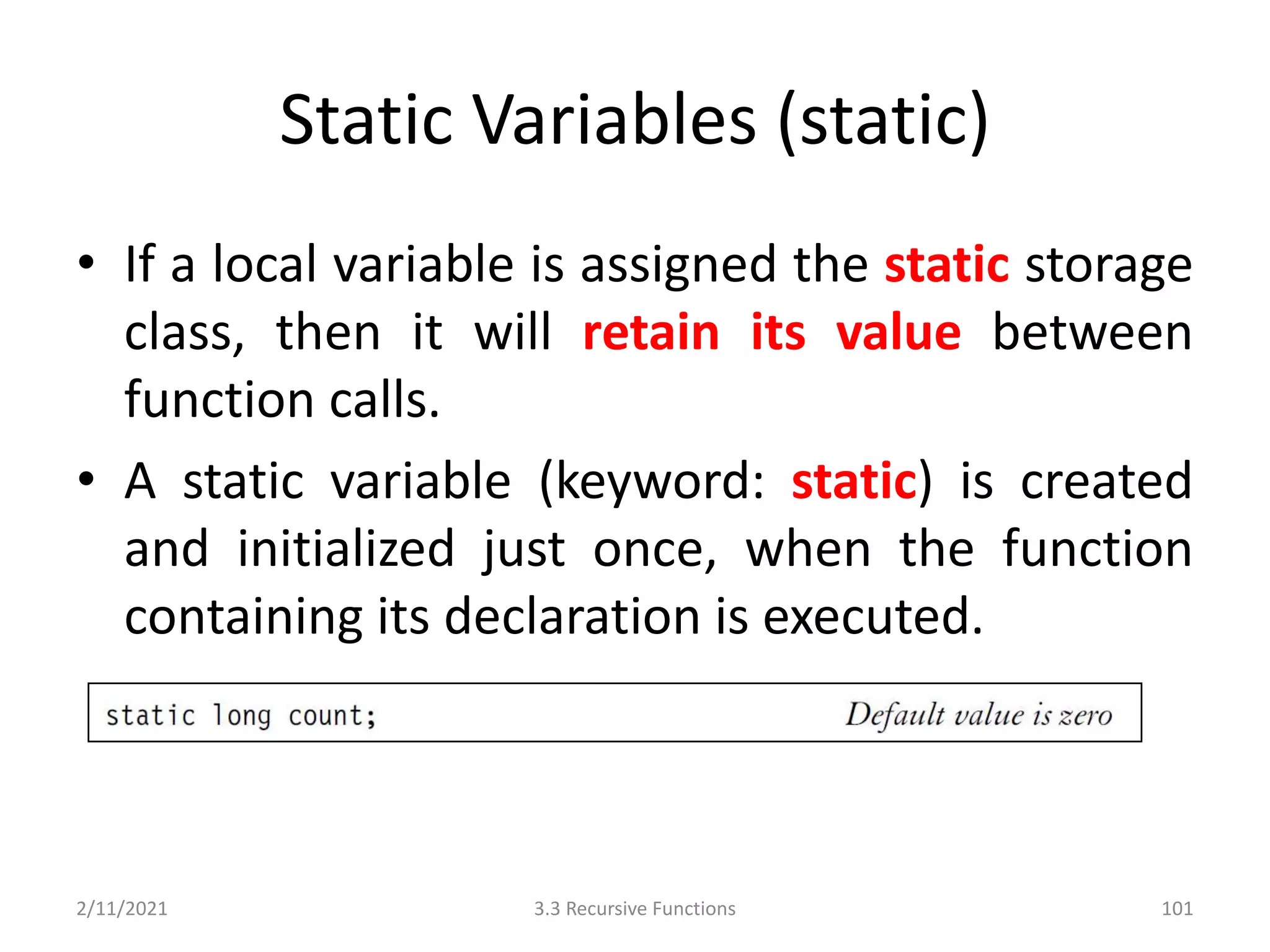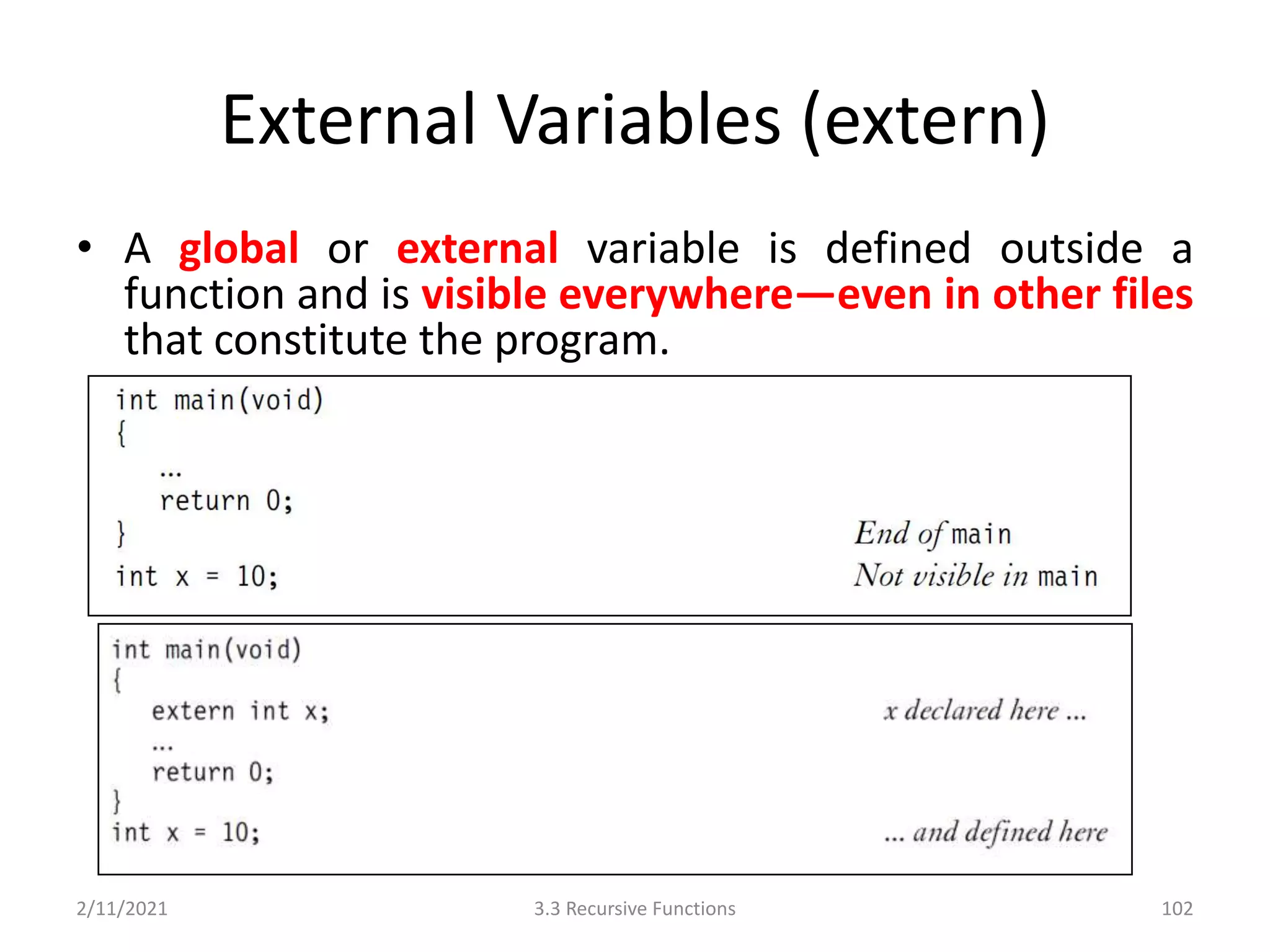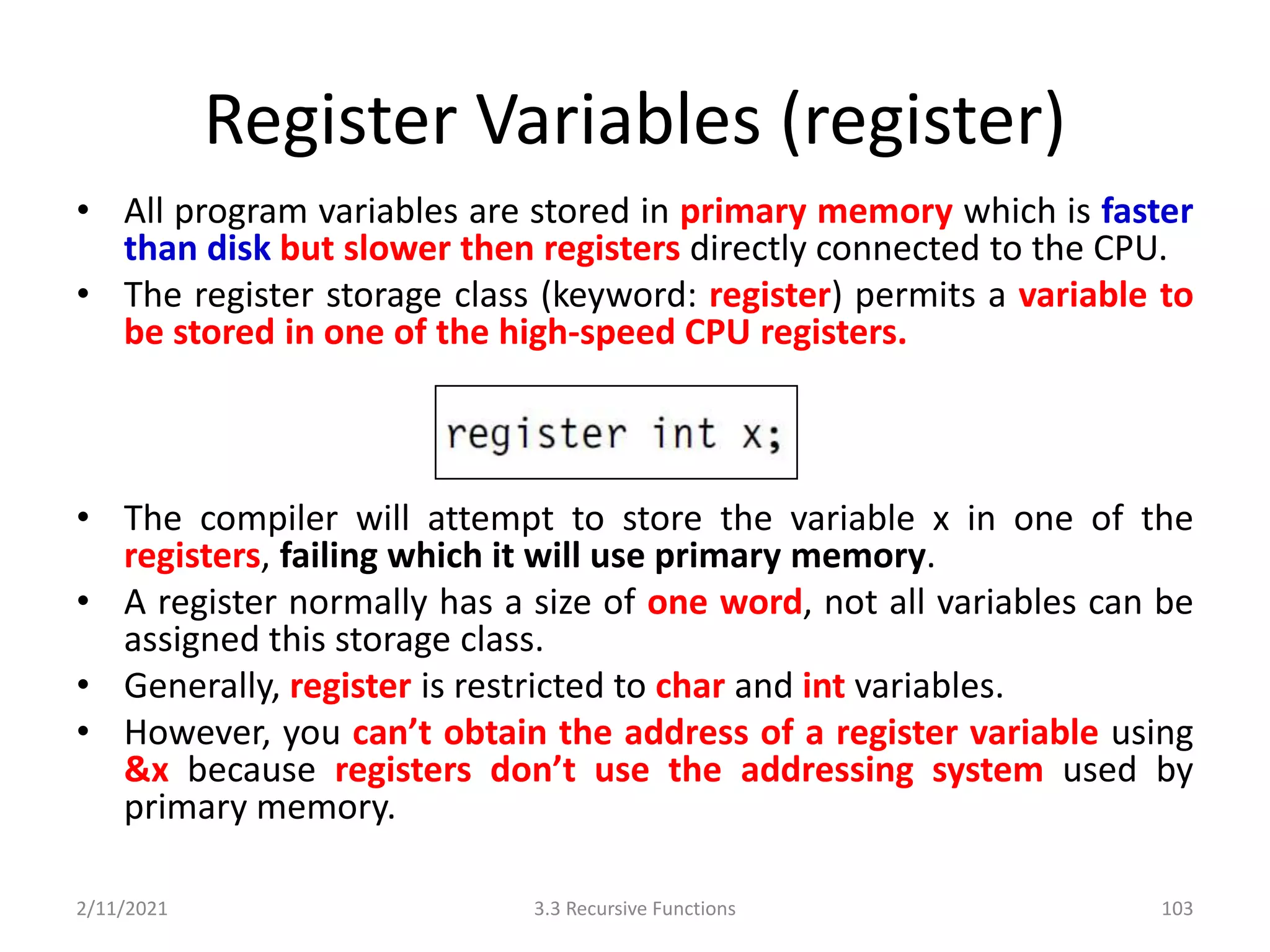The document discusses arrays and functions in C programming. It covers:
1) Declaring, initializing, and using one-dimensional and multi-dimensional arrays. Operations like sorting, searching and matrix operations are demonstrated.
2) The basics of functions including defining functions with and without arguments and return values. Passing arrays as arguments to functions is also covered.
3) The anatomy of a function including declarations, definitions, and invocations is explained.
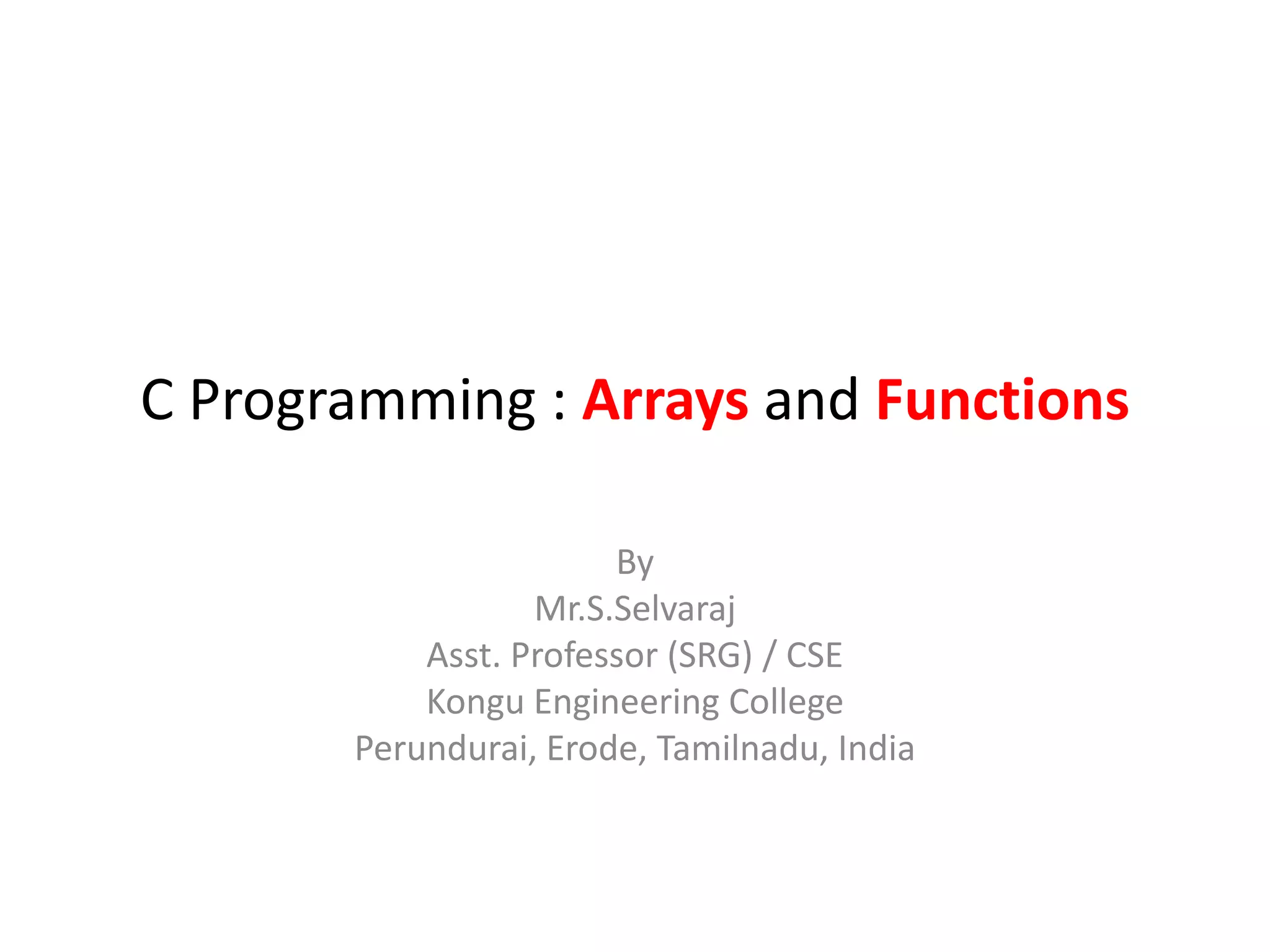
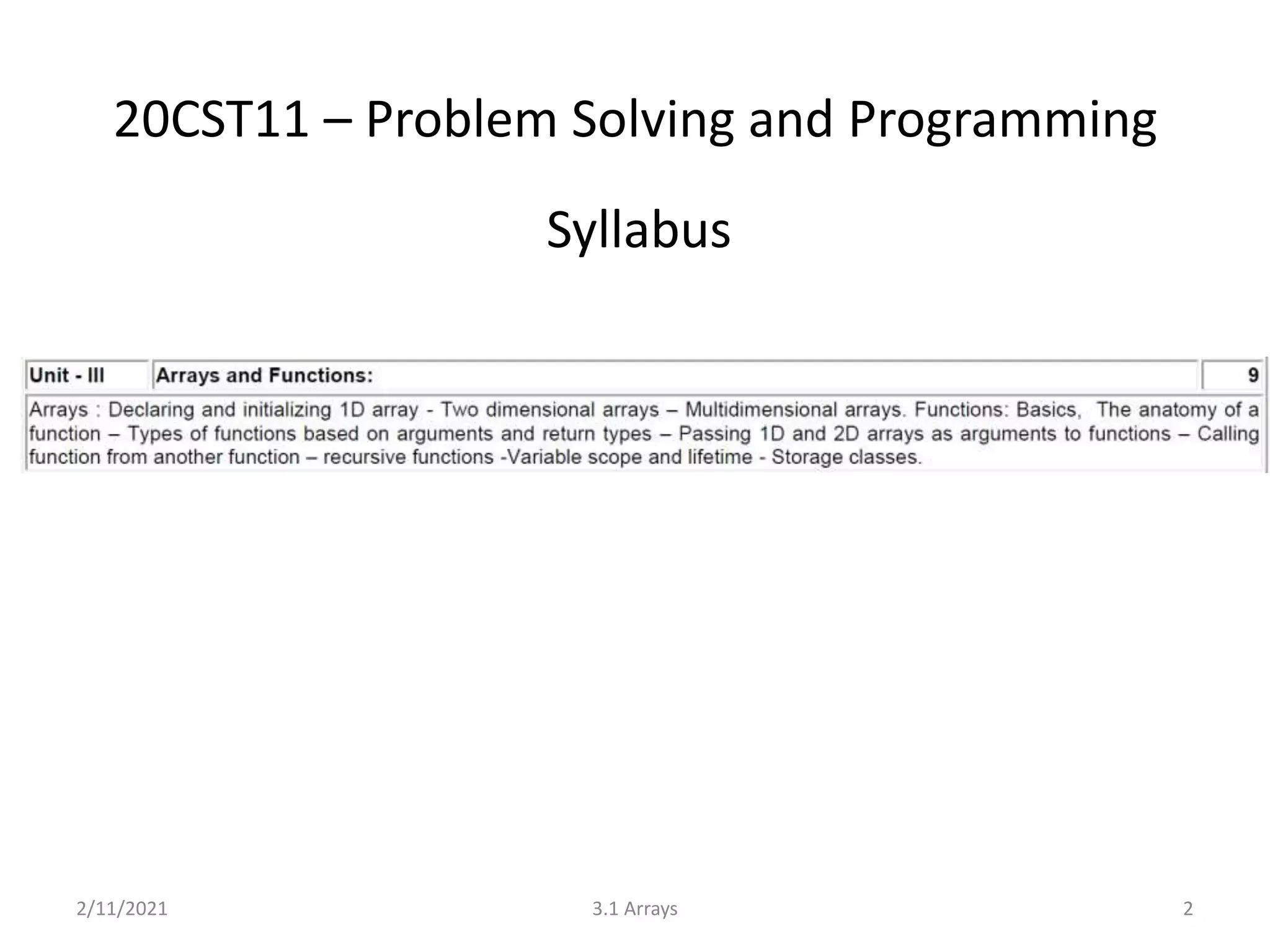

![Introduction
• Variables can’t handle voluminous data because a
hundred data items need a hundred variables to store
them.
• The solution is to use an array, which is an ordered set
of data items stored contiguously in memory.
• Each data item represents an element of the array and
is accessed with an index or subscript.
• For instance, the elements of an array named signal
are accessed as signal[0], signal[1], signal[2], and so
forth.
• The first subscript is 0 and the last subscript is one less
than the size of the array.
2/11/2021 3.1 Arrays 4](https://image.slidesharecdn.com/pptunitiii-210211034343/75/C-Programming-Arrays-and-Functions-4-2048.jpg)
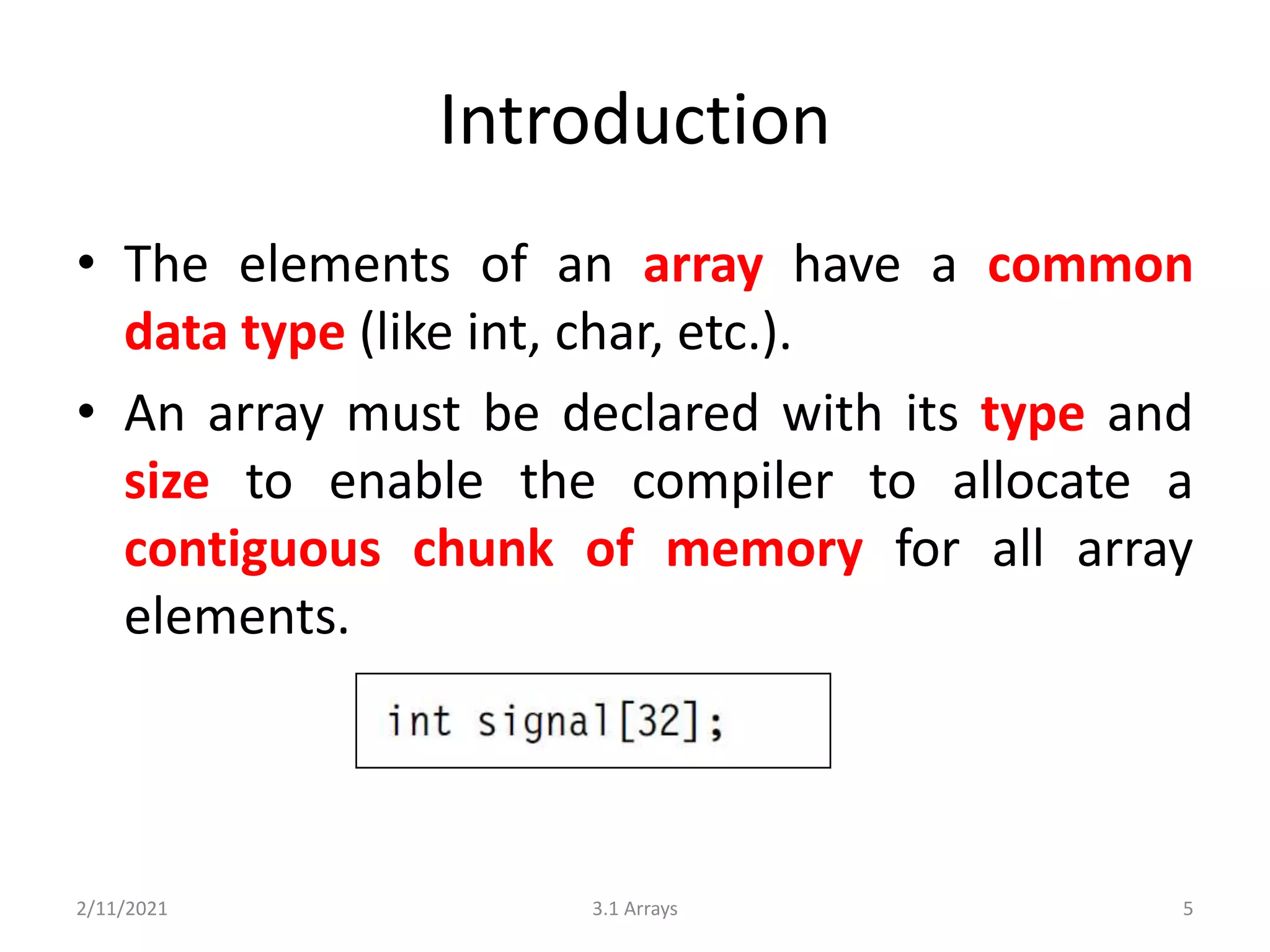
![Introduction
• The first element is accessed as signal[0] and the last
element is signal[31] (not 32).
• The subscript is either zero, a positive integer or an
expression that evaluates to an integer value.
• An array element can be assigned to a variable
– (say, int x = signal[2];),
– which means we can use signal[2] wherever we use x.
• By the same logic, &signal[2] is also a valid scanf
argument like &x.
• It is easy to cycle through all array elements by using
the array subscript as a key variable in a loop.
2/11/2021 3.1 Arrays 6](https://image.slidesharecdn.com/pptunitiii-210211034343/75/C-Programming-Arrays-and-Functions-6-2048.jpg)
![Introduction
• C doesn’t offer bounds checking for arrays, i.e. it doesn’t
validate the index used to access an array element.
• For instance, the compiler will not generate an error if you
attempt to access signal[35] even though the array has 32
elements.
• A negative index (as in signal[-5]) doesn’t generate an
error either.
• C also supports multi-dimensional arrays where an
element is handled with multiple subscripts.
• Since there is virtually no limit to the number of indexes
and dimensions an array can have.
• arrays in C are very powerful data structures that can
easily gobble up a lot of memory.
2/11/2021 3.1 Arrays 7](https://image.slidesharecdn.com/pptunitiii-210211034343/75/C-Programming-Arrays-and-Functions-7-2048.jpg)
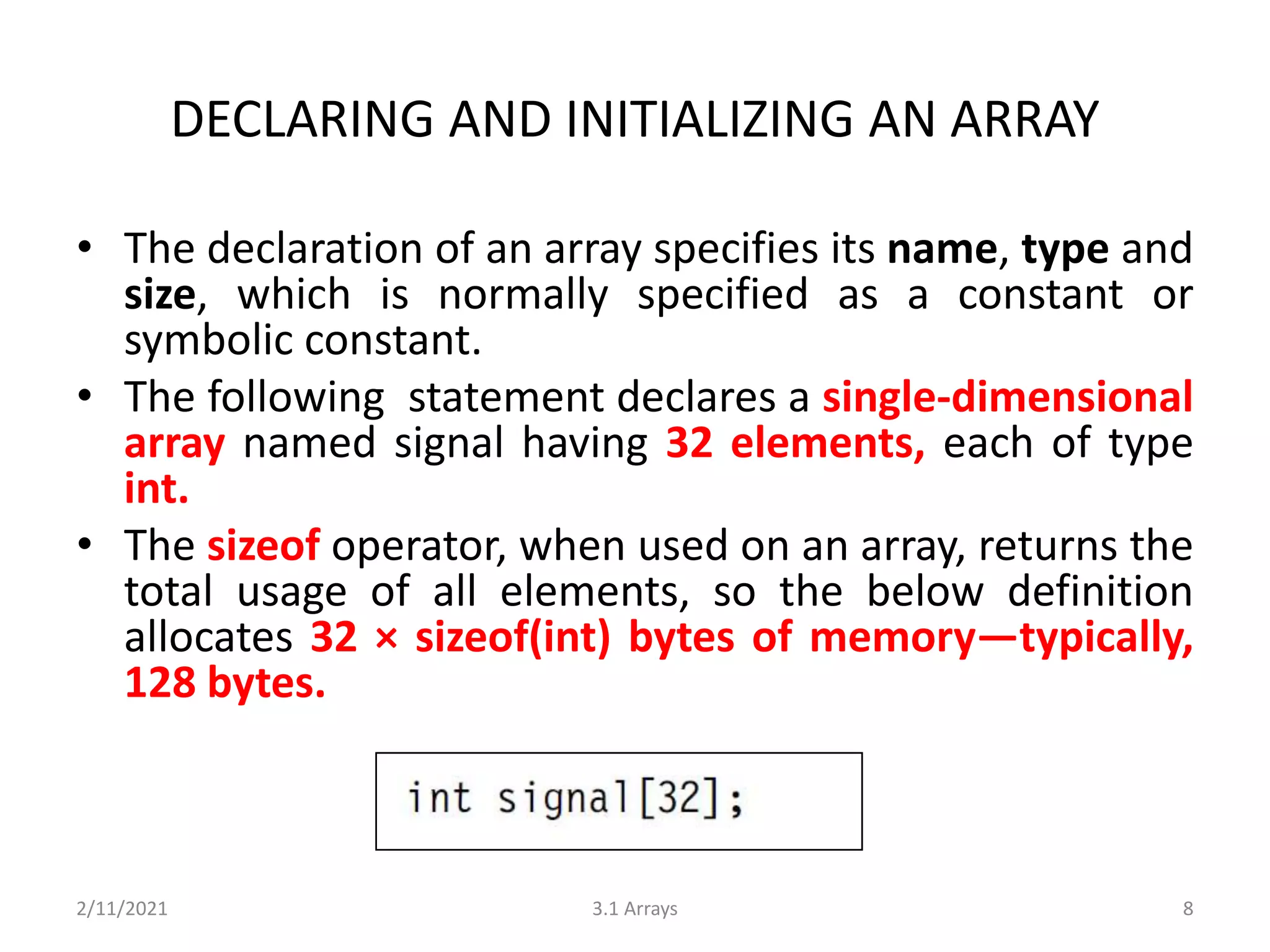
![Layout in Memory of the Array
• months[12] and MONTHS[12] are two
separate arrays.
2/11/2021 3.1 Arrays 9](https://image.slidesharecdn.com/pptunitiii-210211034343/75/C-Programming-Arrays-and-Functions-9-2048.jpg)
![Initializing During Declaration
• In the first declaration, the number of values matches
the size of the array.
• The second declaration performs a partial initialization
by assigning values to the first three elements only.
When that happens, the remaining values are
automatically initialized to zeroes (NUL for an array of
type char).
• The third declaration uses an empty pair of brackets
([ ]) to implicitly specify the size of the array.
2/11/2021 3.1 Arrays 10](https://image.slidesharecdn.com/pptunitiii-210211034343/75/C-Programming-Arrays-and-Functions-10-2048.jpg)
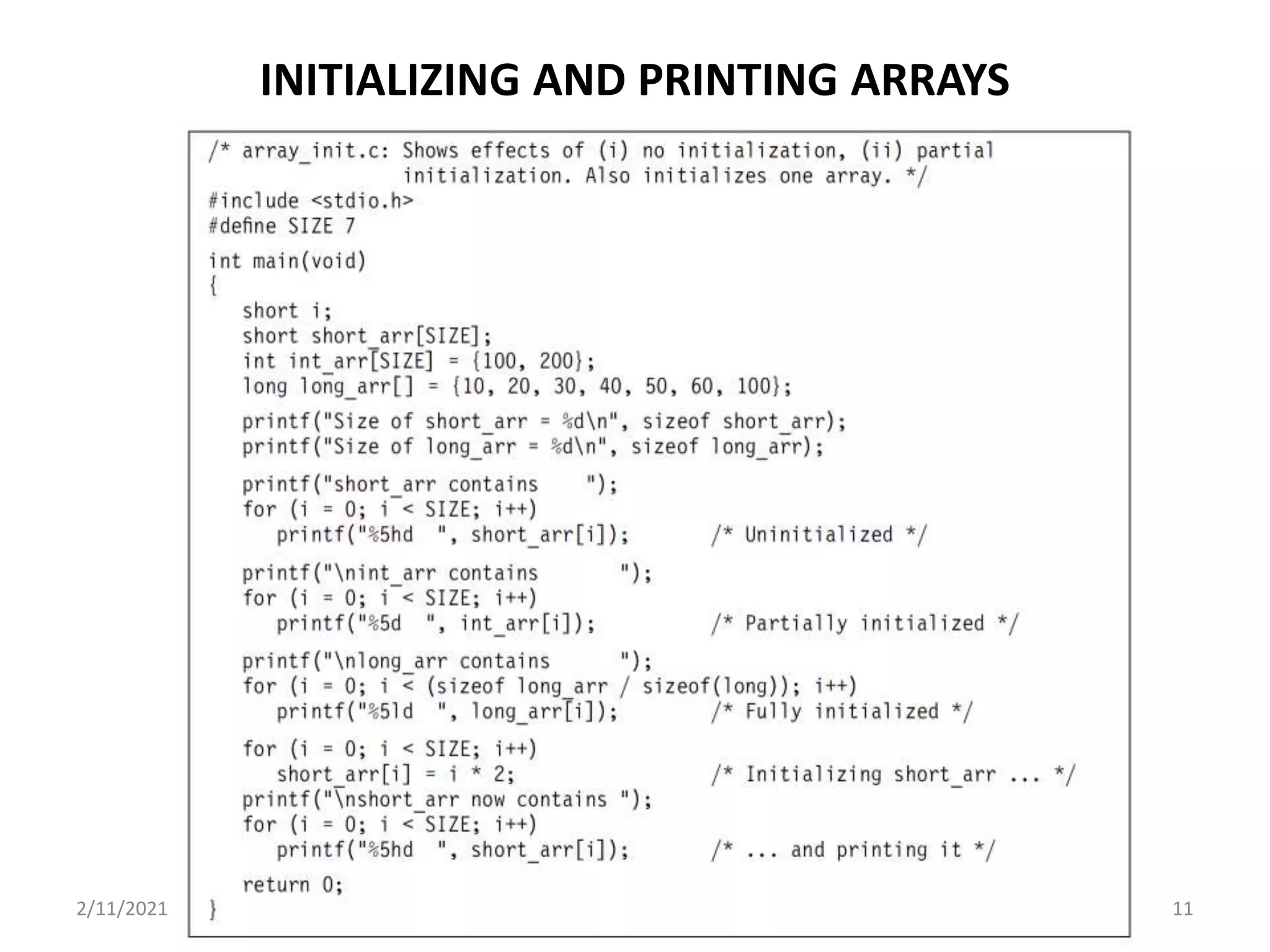
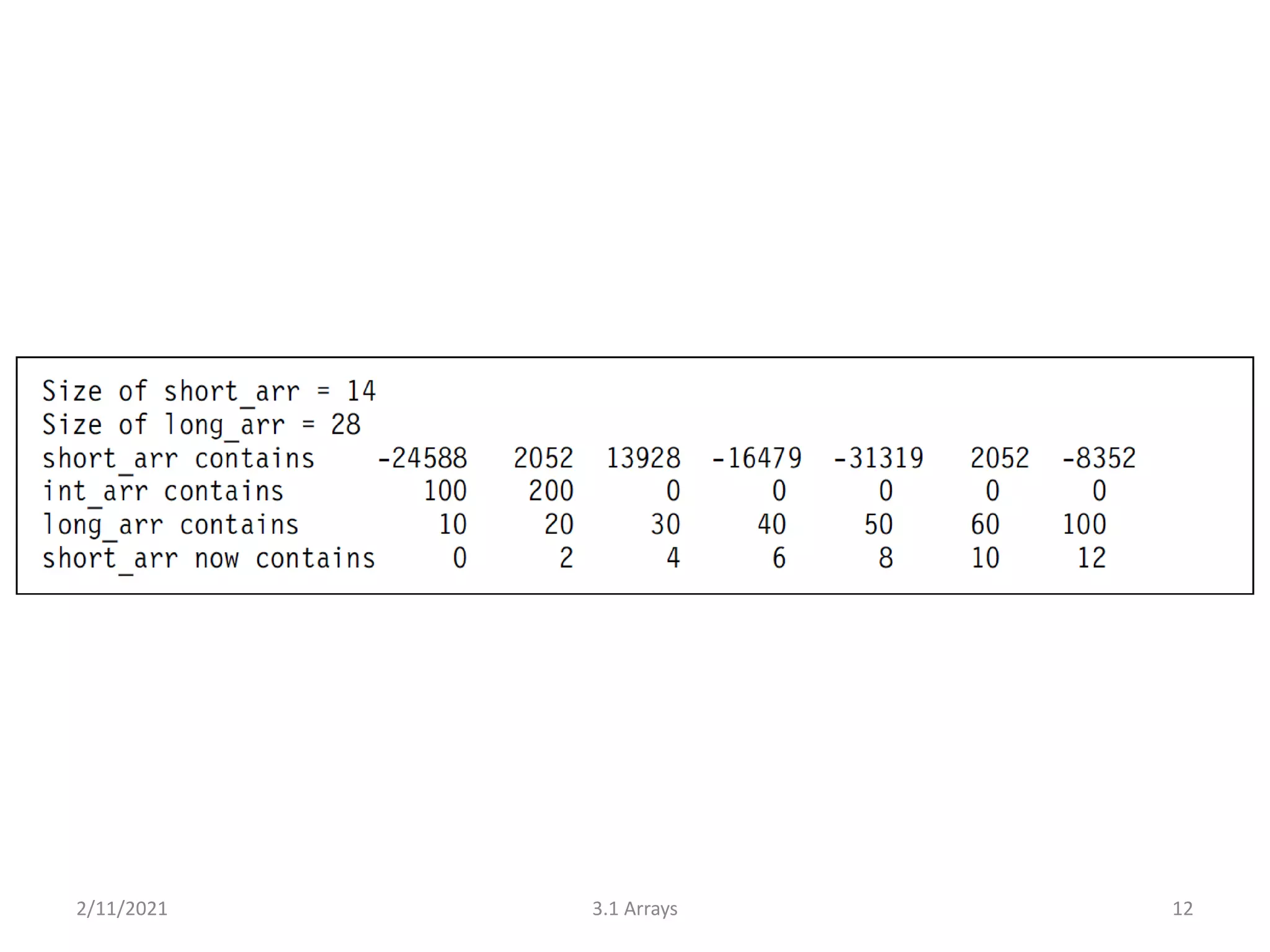

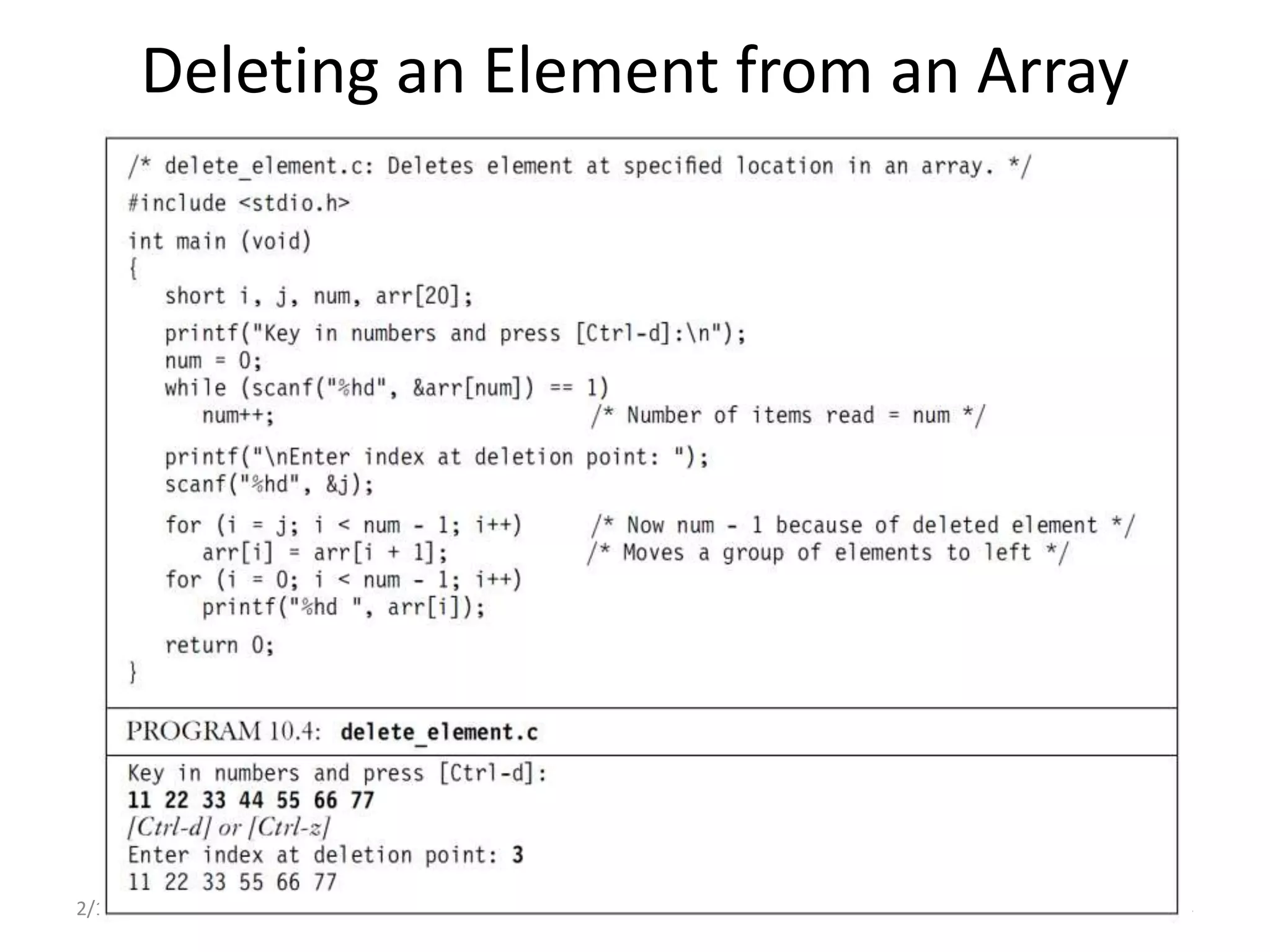
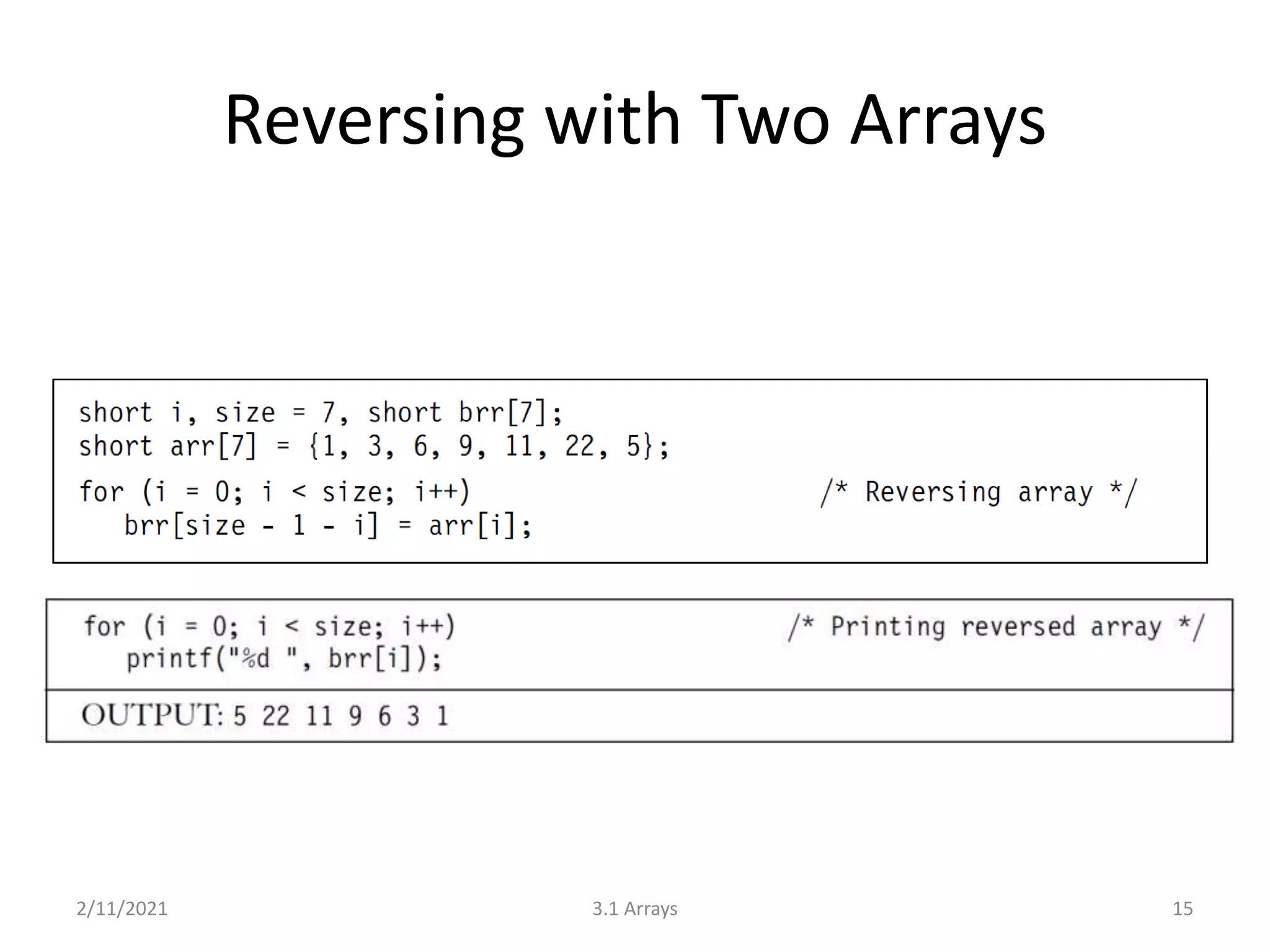



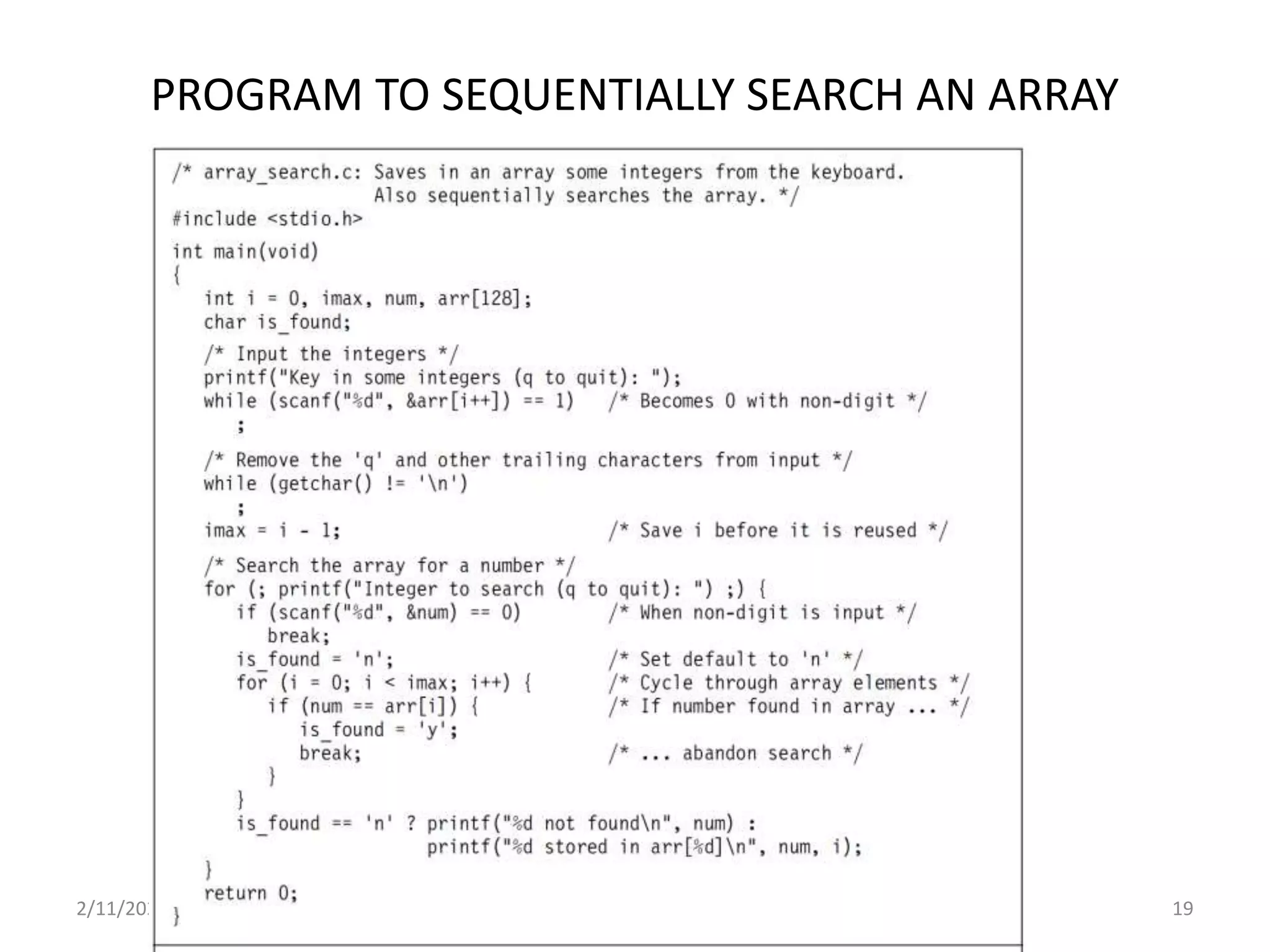
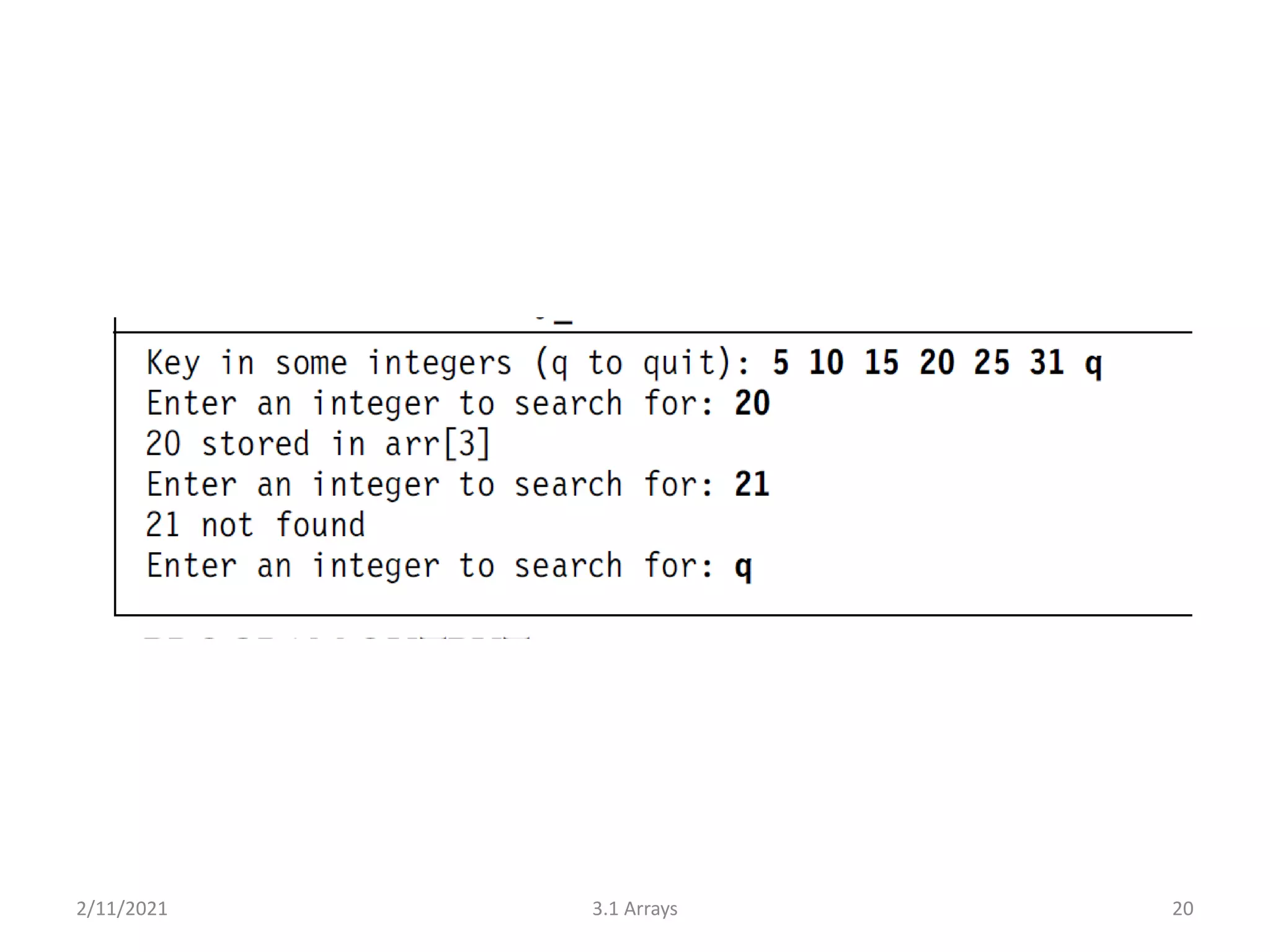
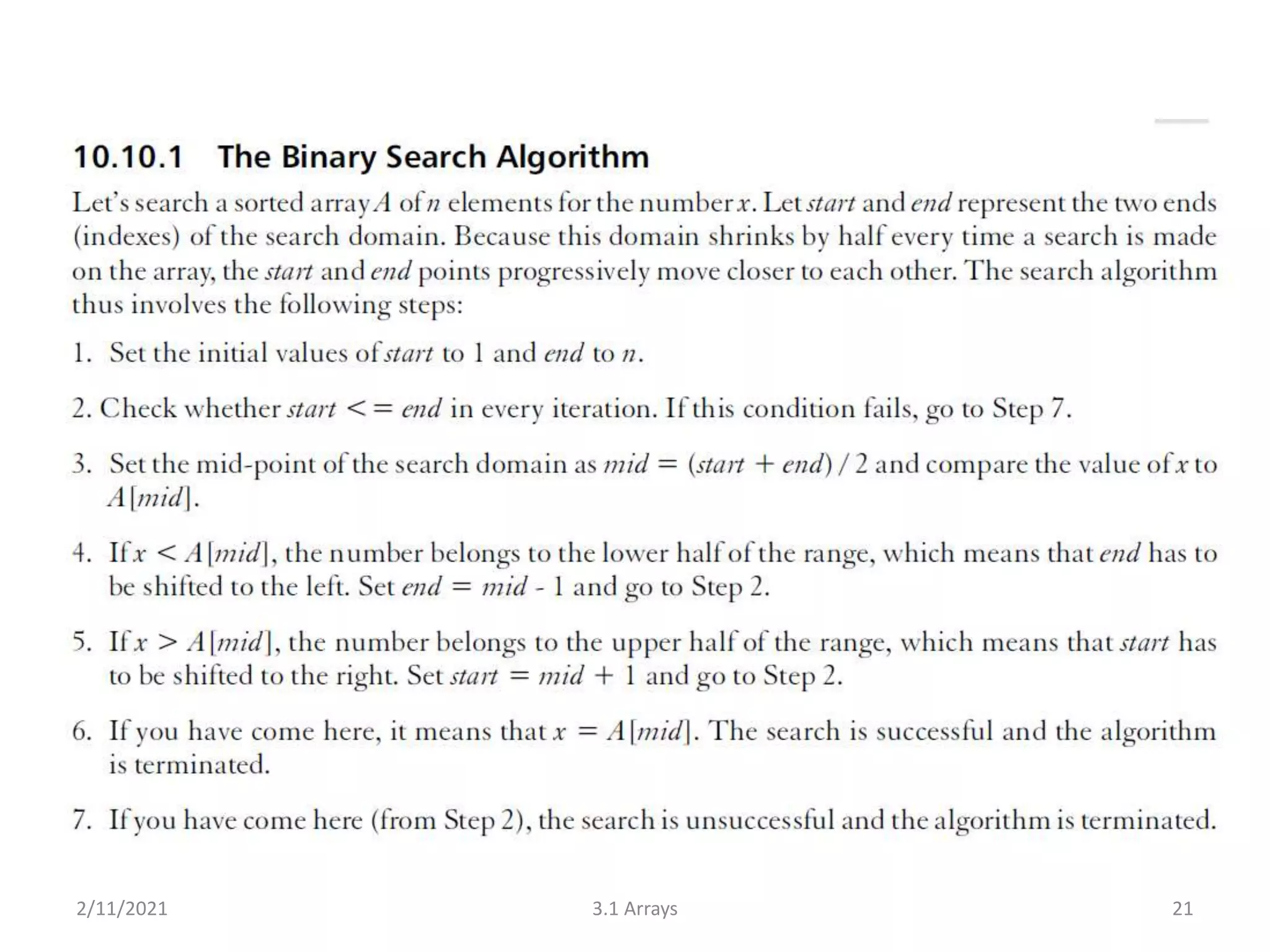

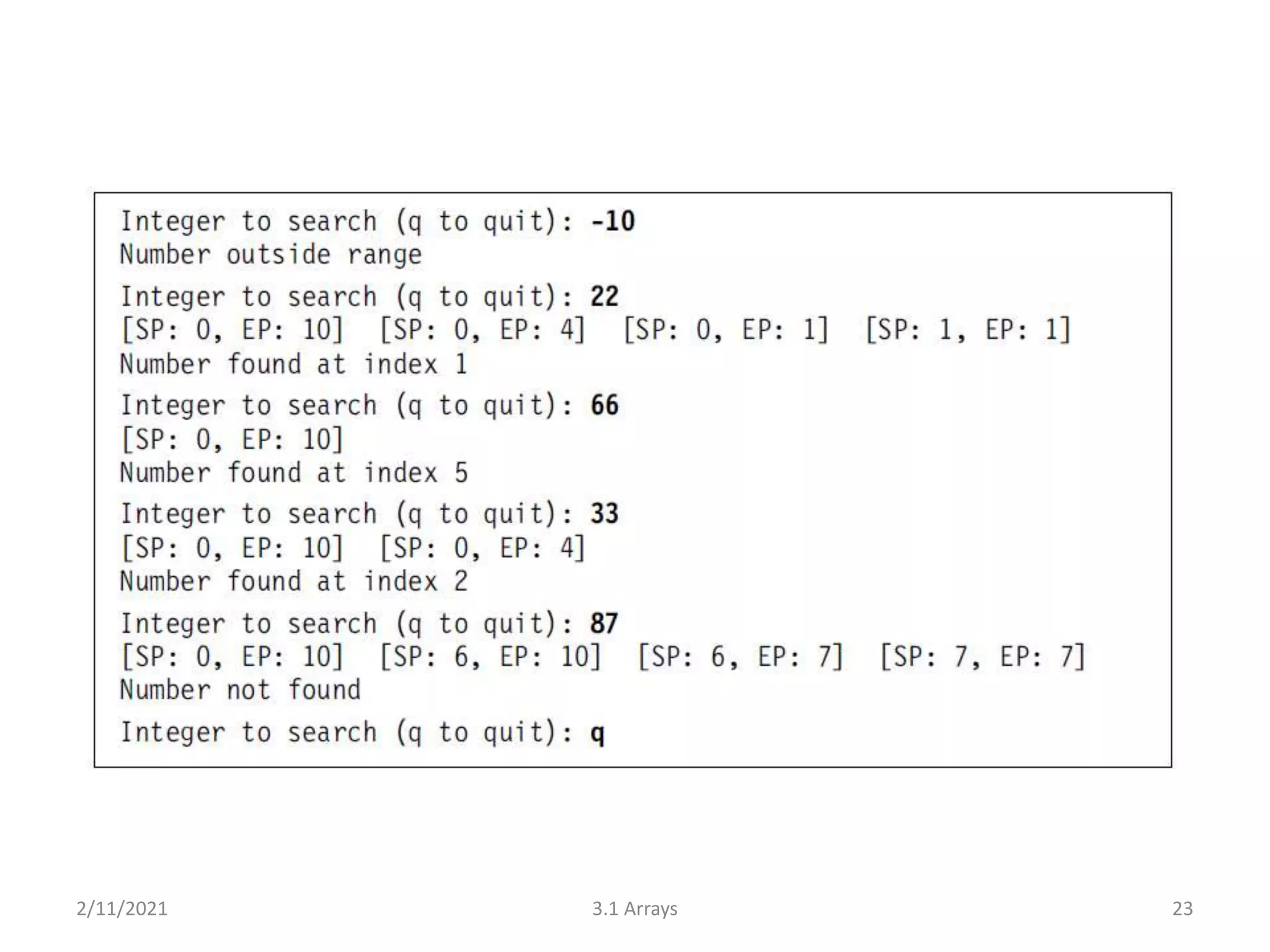
![TWO-DIMENSIONAL (2D) ARRAYS
• A two-dimensional array needs two subscripts
and a three-dimensional array needs three
subscripts.
• Like a single-dimensional array, a multi-
dimensional array occupies a contiguous region
of memory.
• A two-dimensional (2D) array, arr, takes the form
arr[i][j],
– where the subscript i represents the number of rows
and
– j represents the number of columns.
2/11/2021 3.1 Arrays 24](https://image.slidesharecdn.com/pptunitiii-210211034343/75/C-Programming-Arrays-and-Functions-24-2048.jpg)

